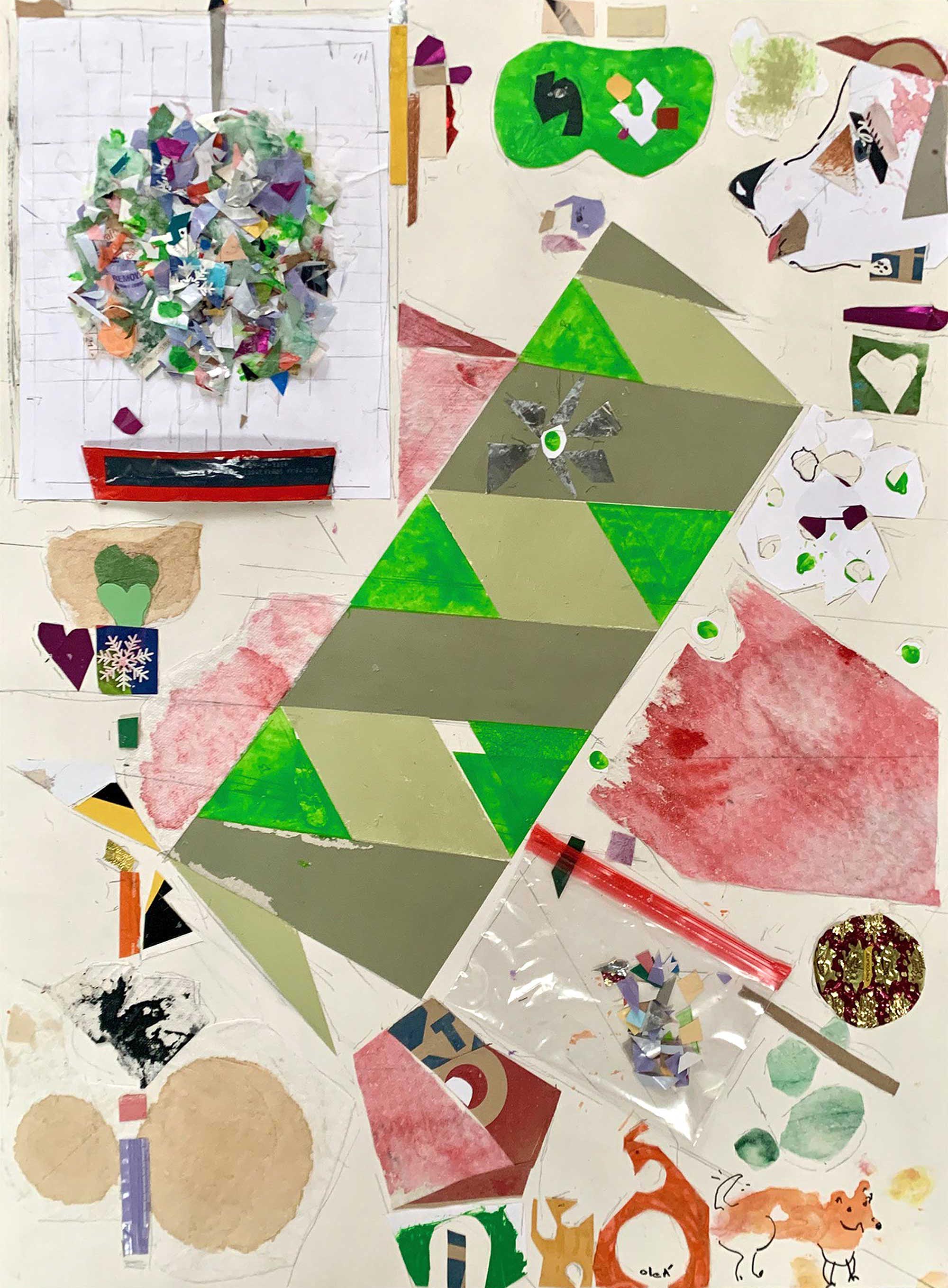




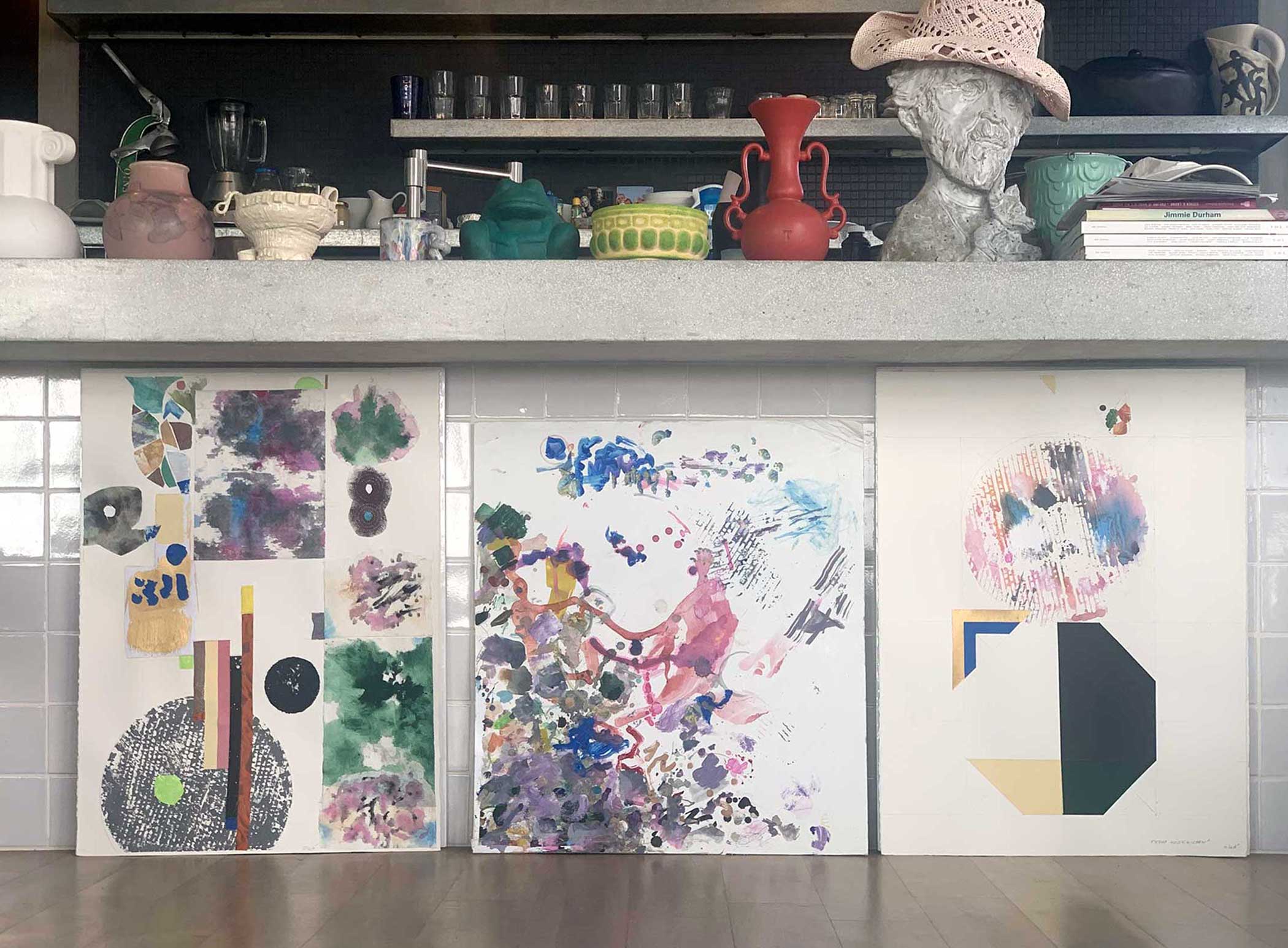




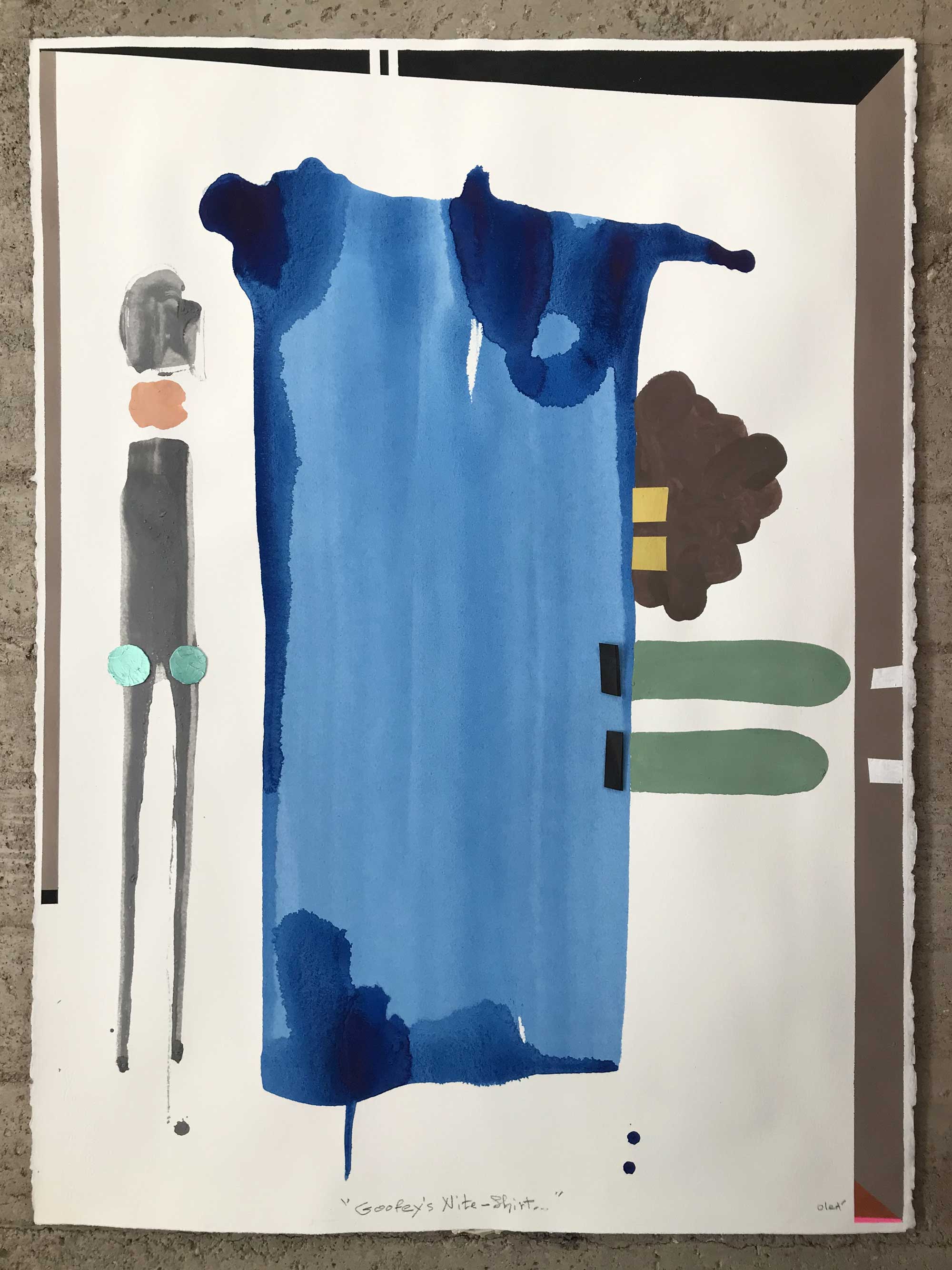


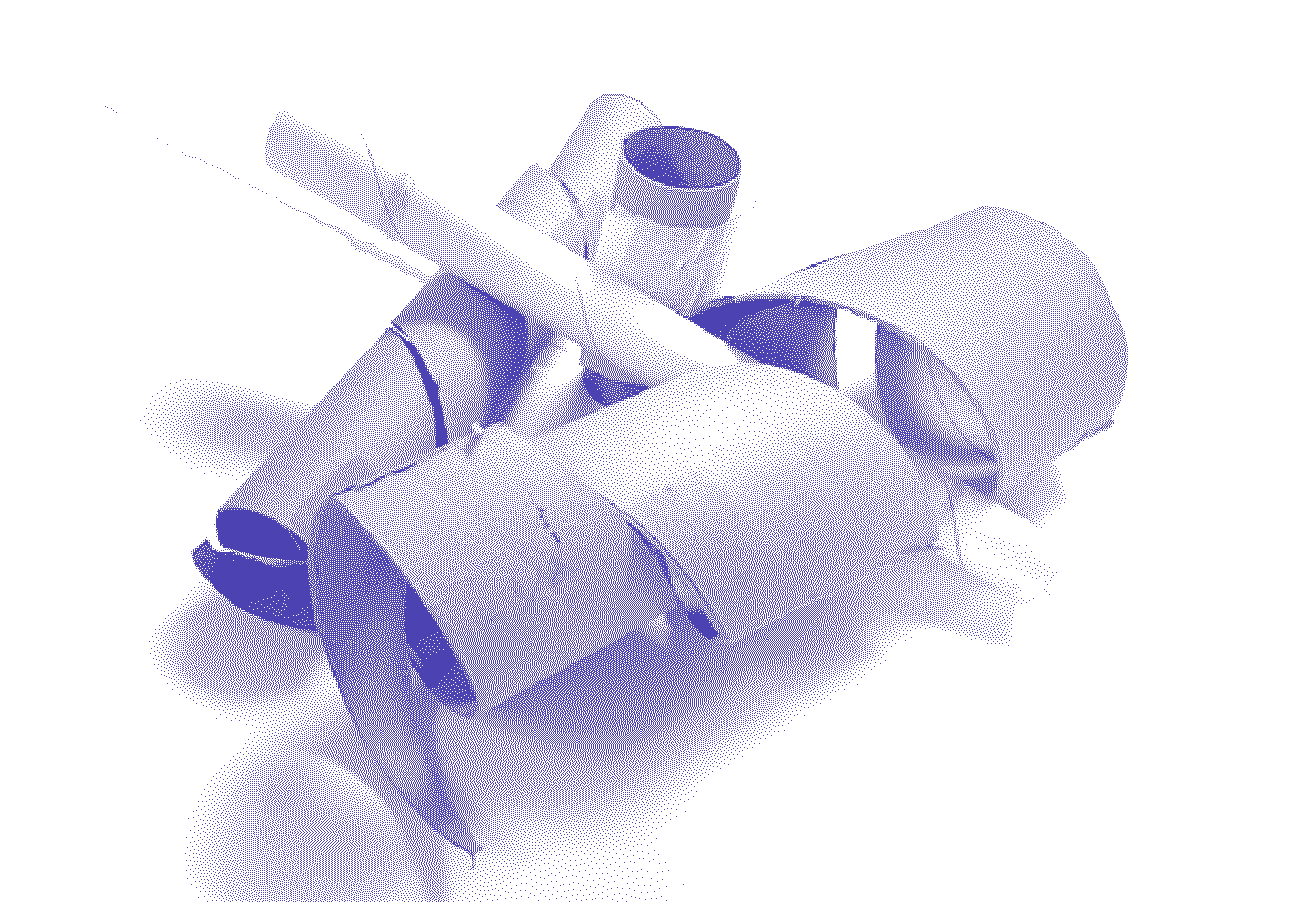
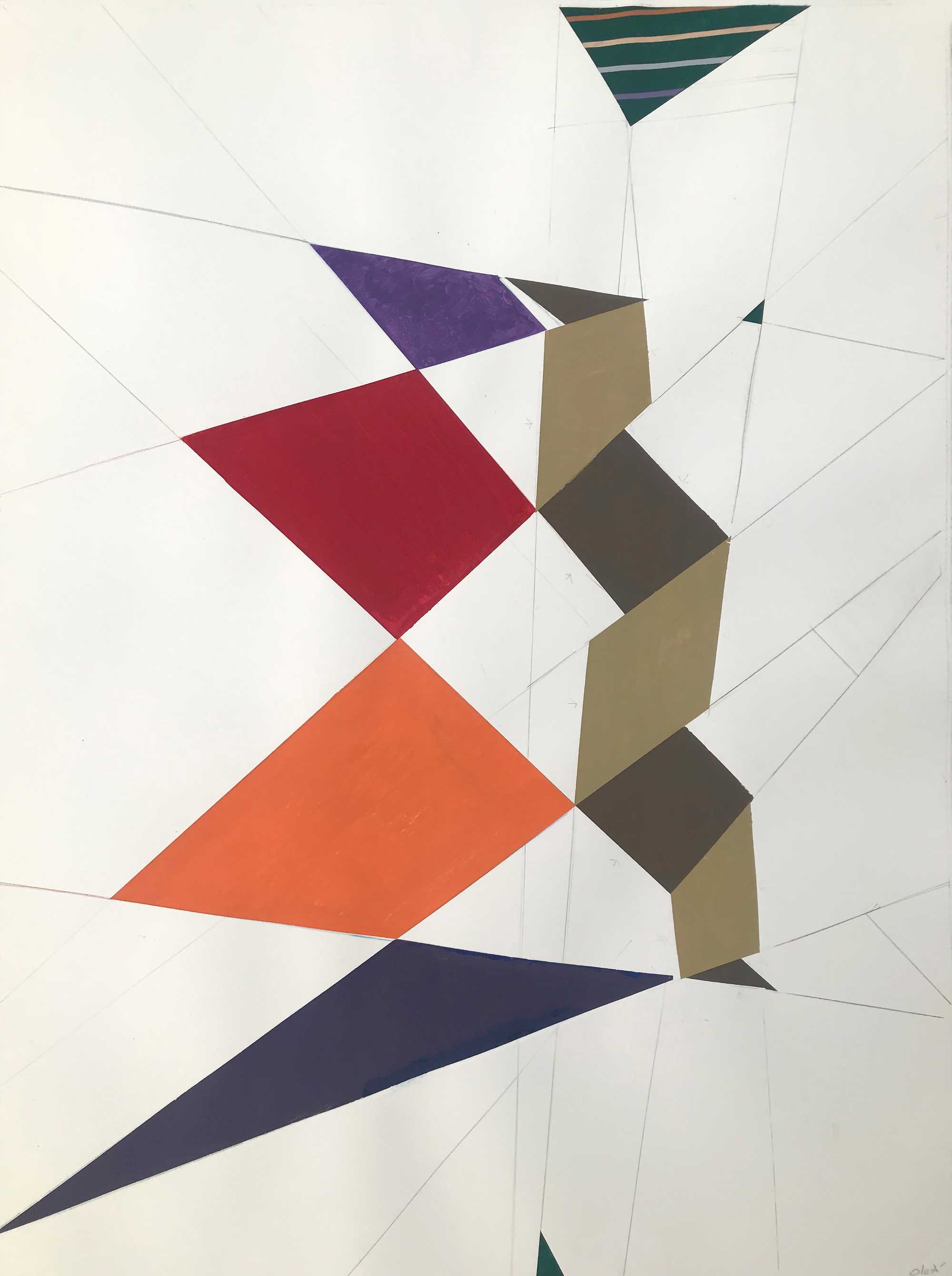
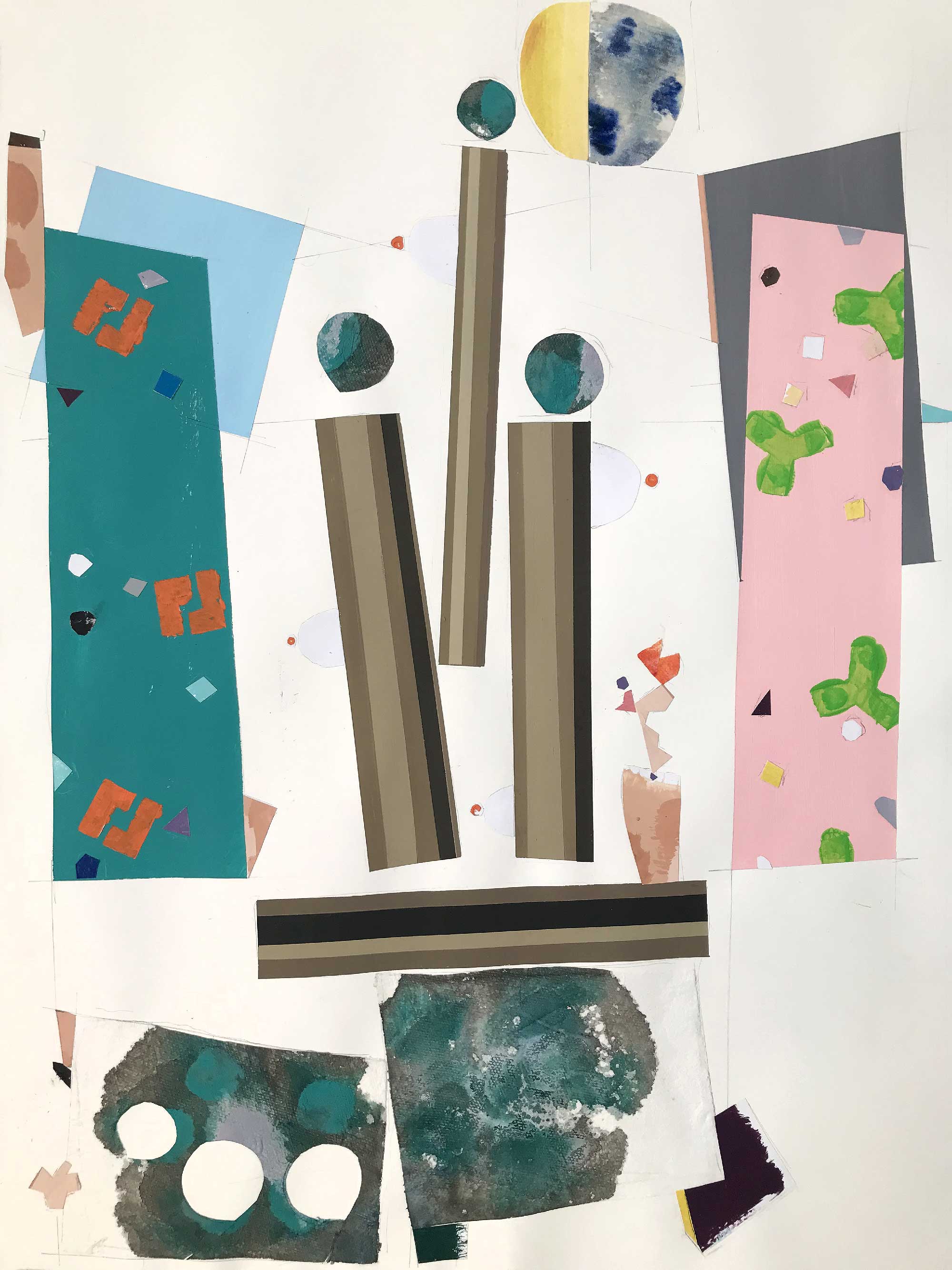


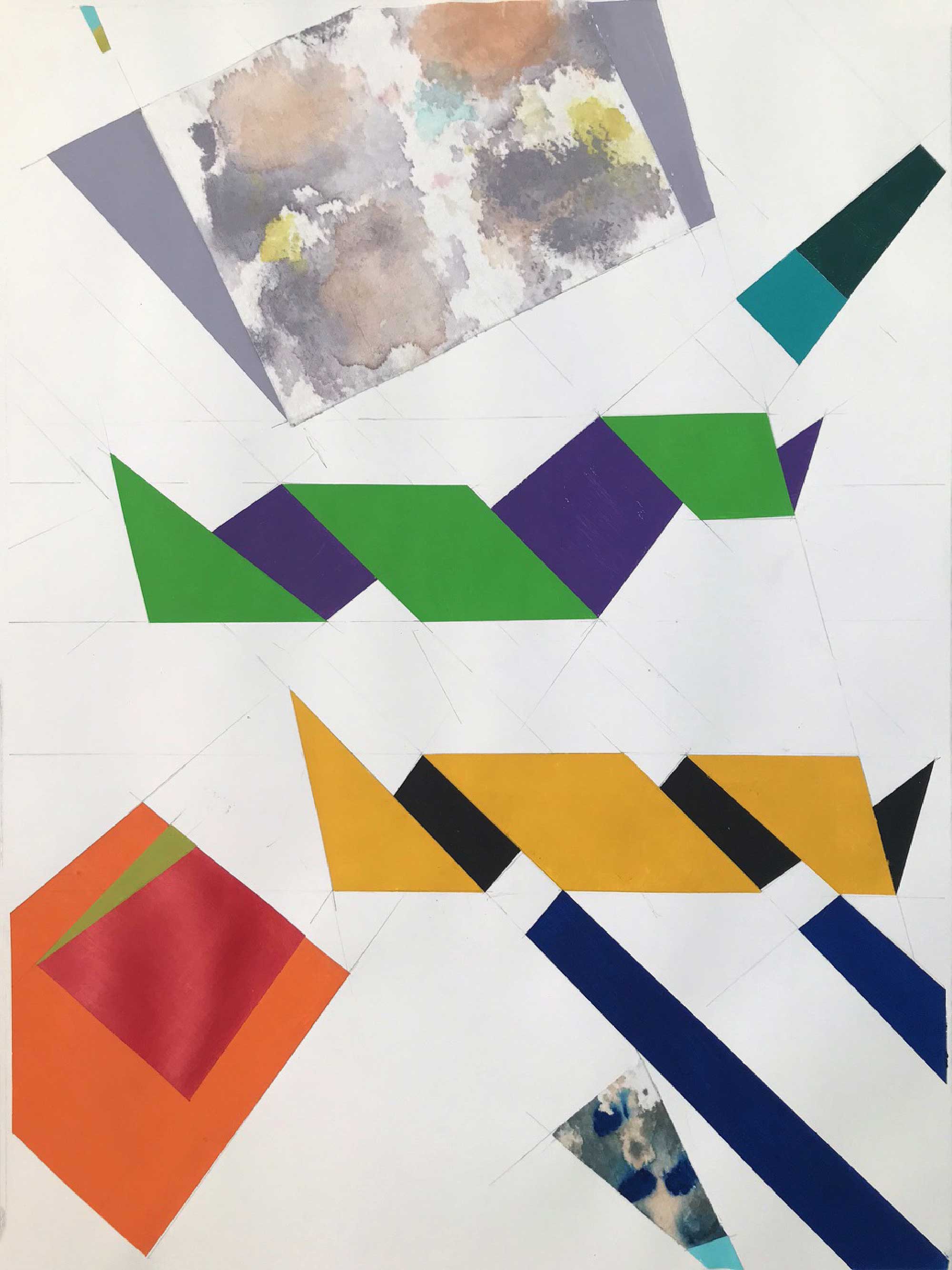




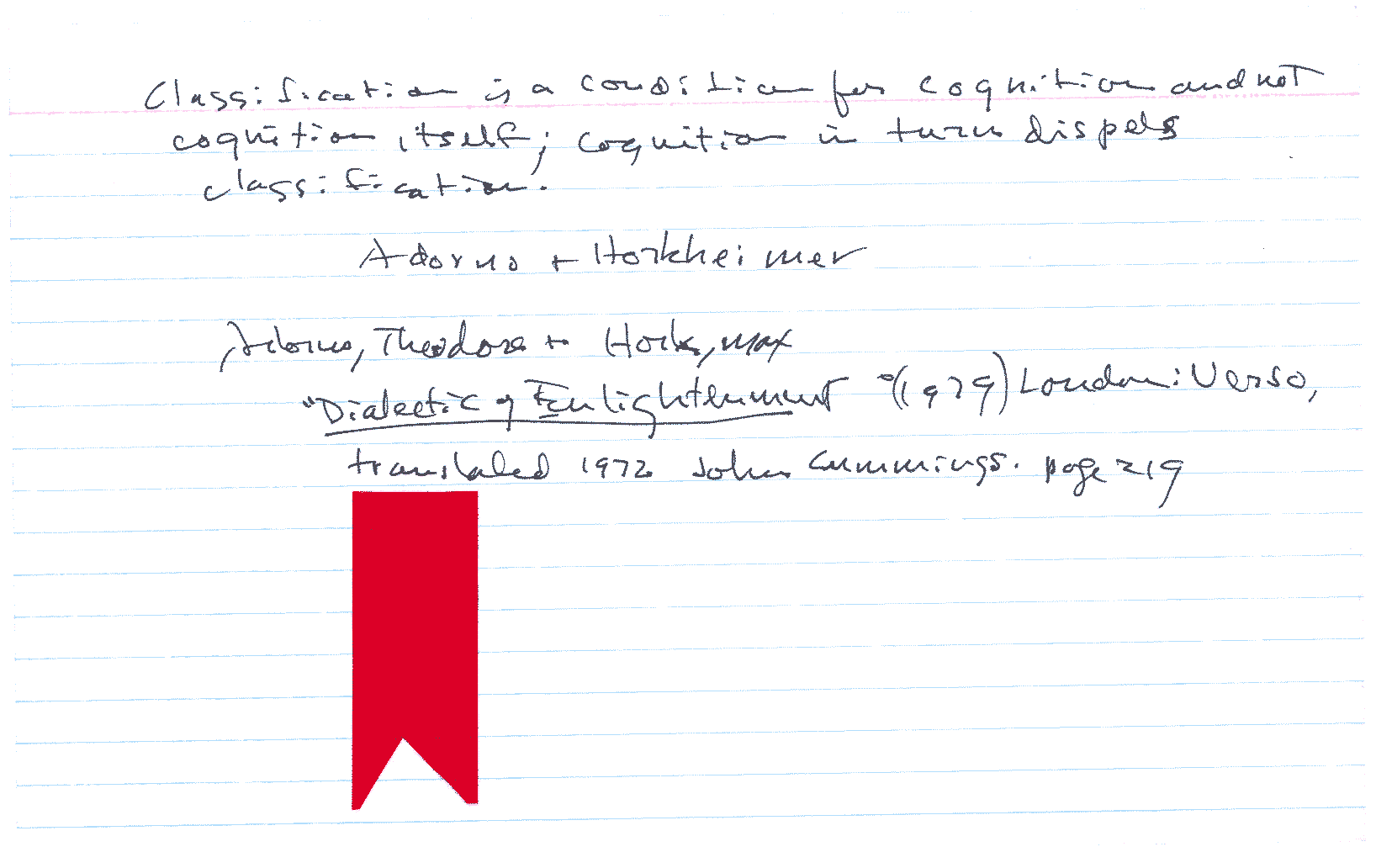






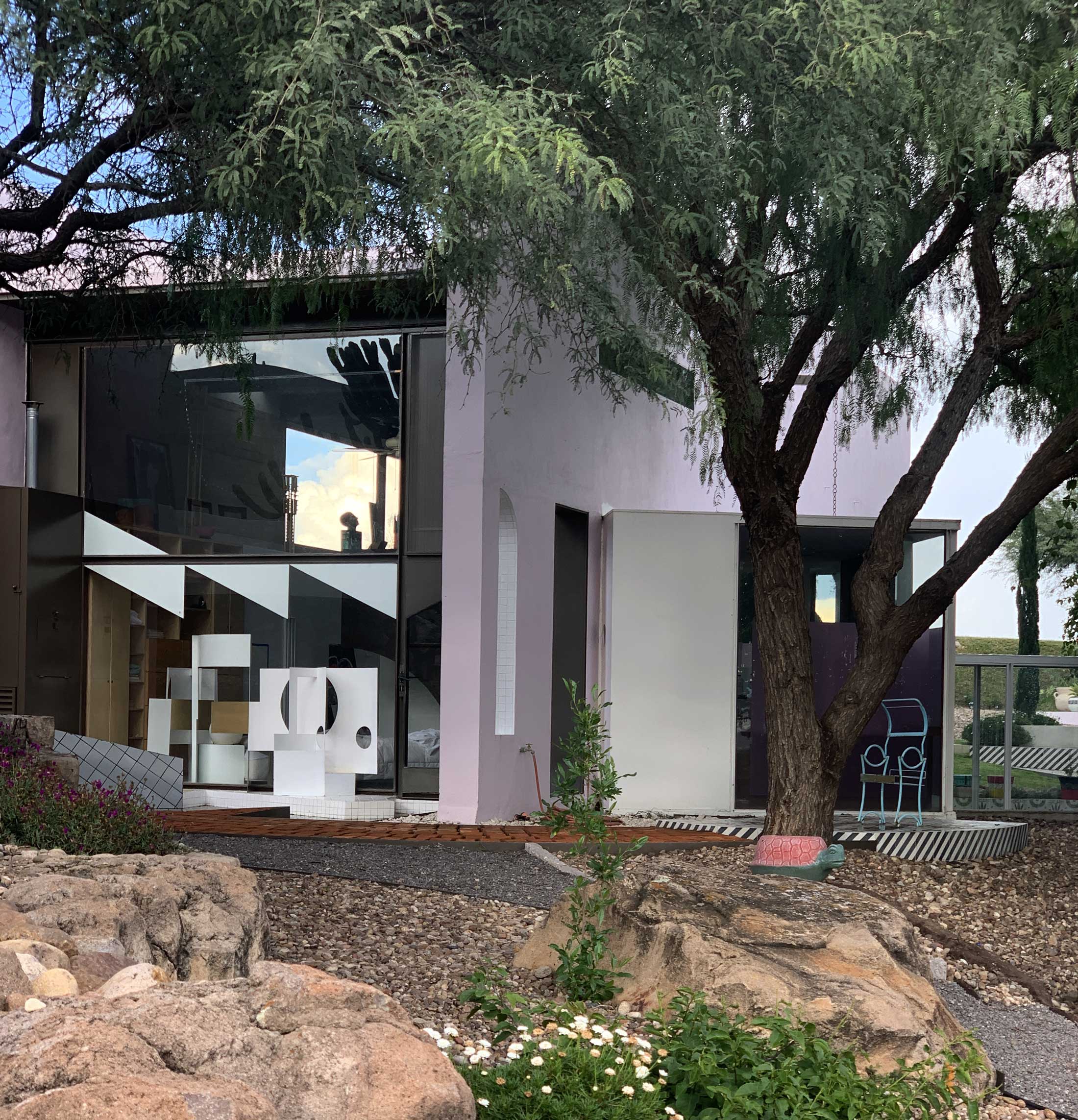

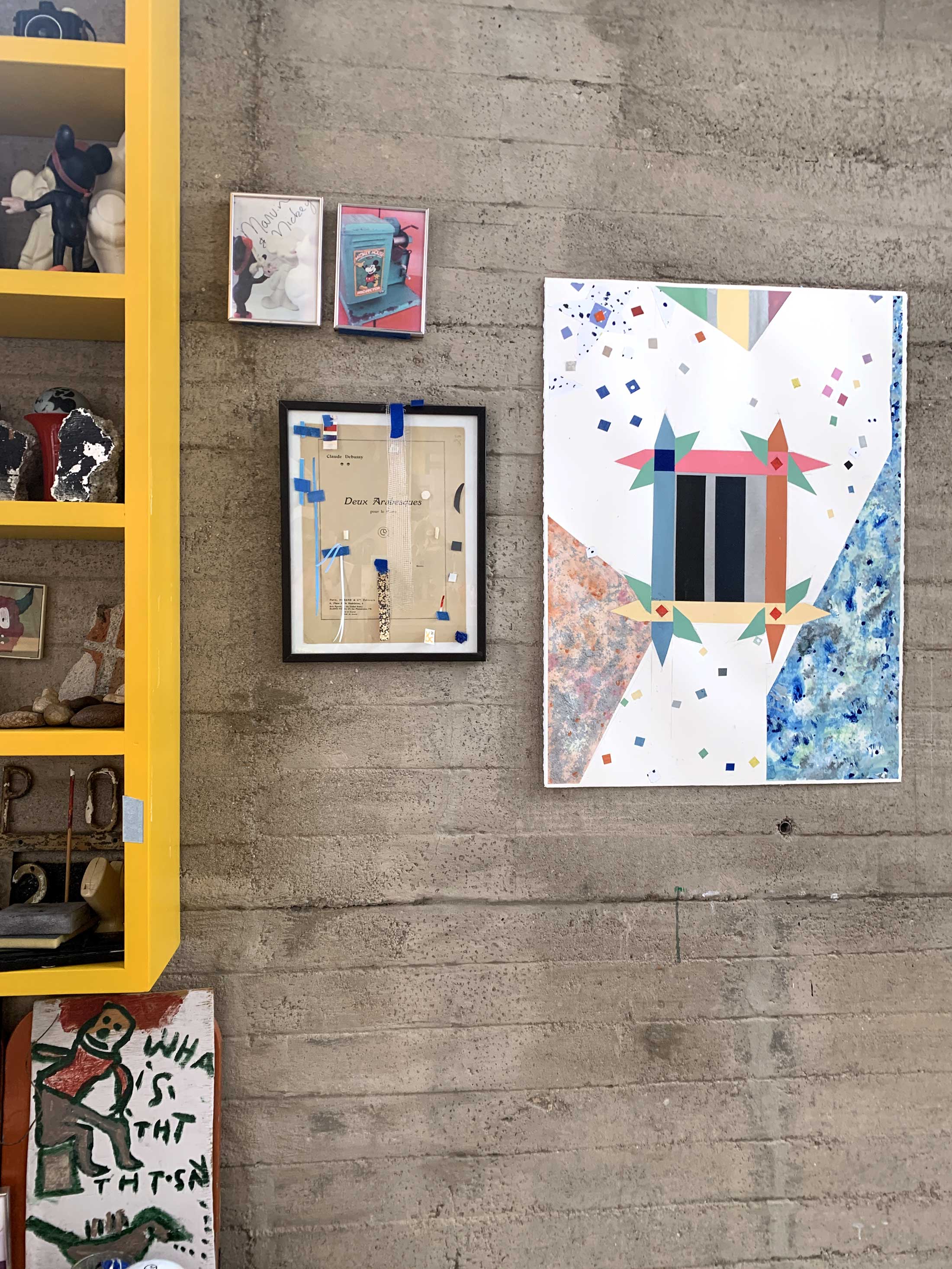
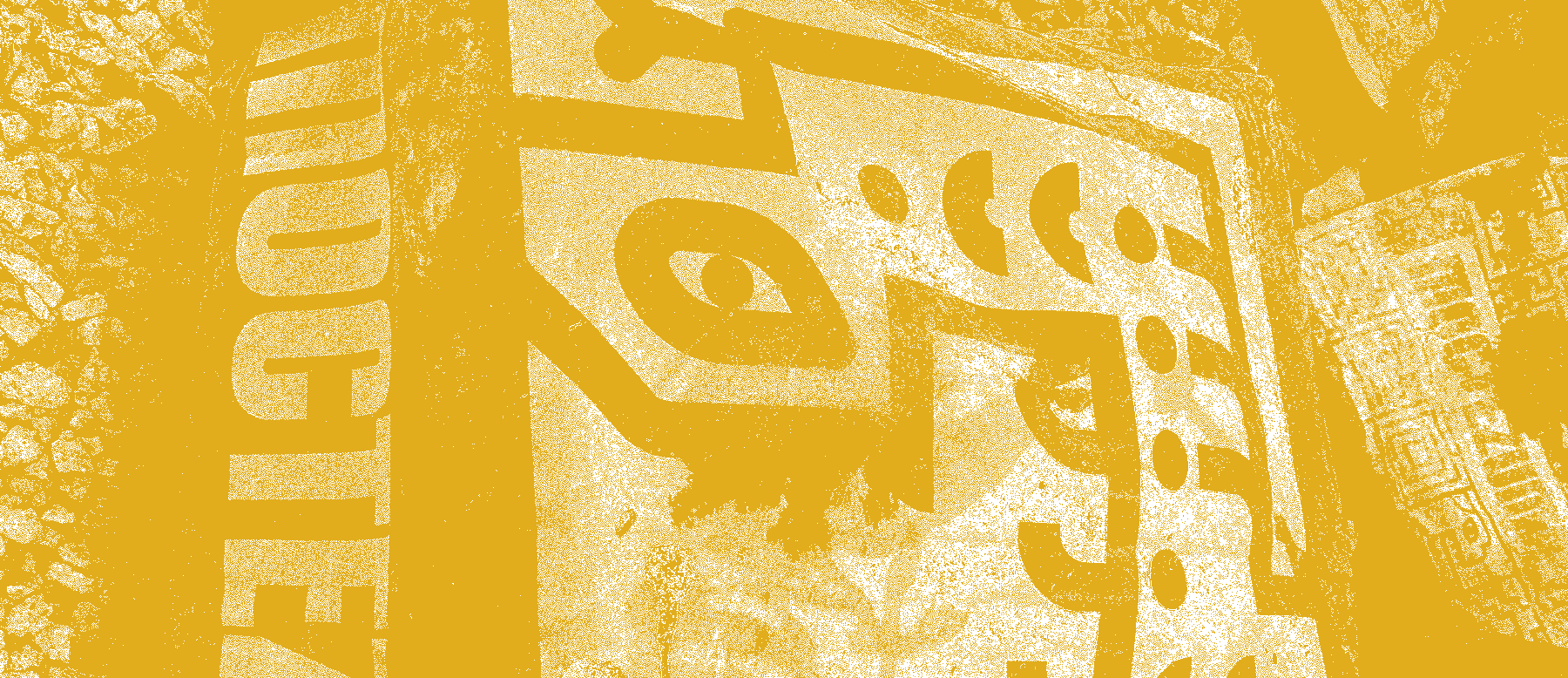
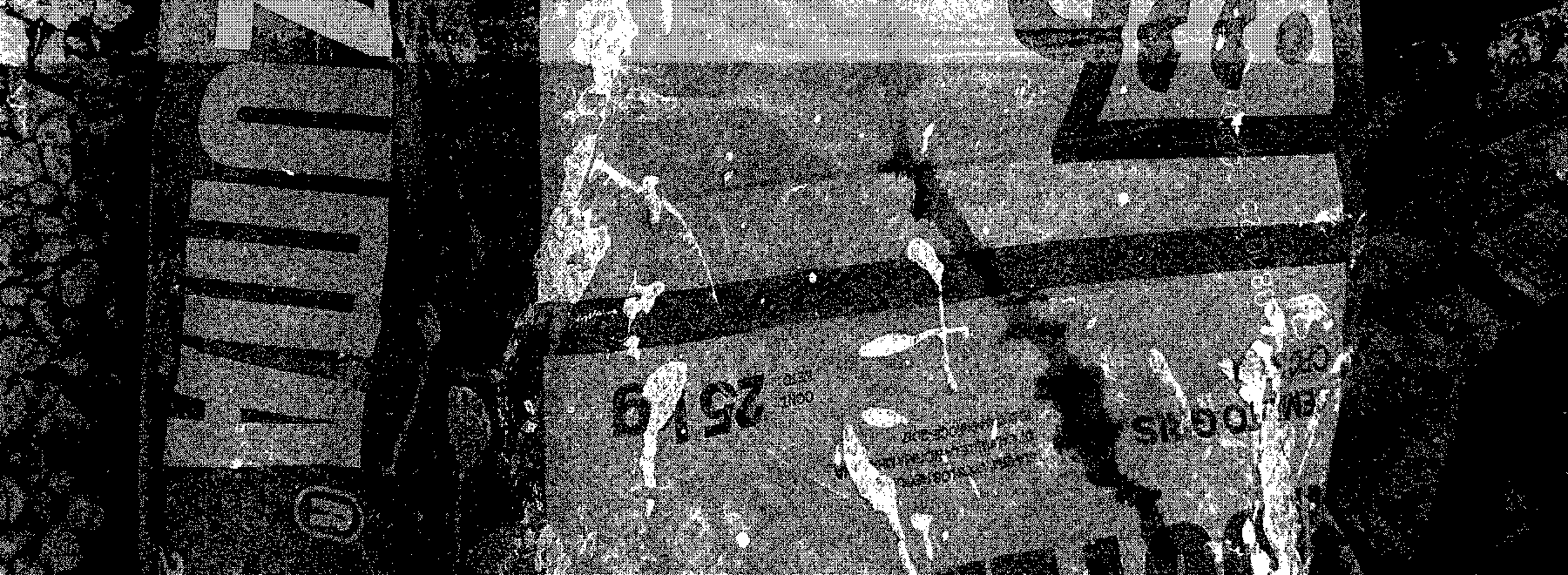



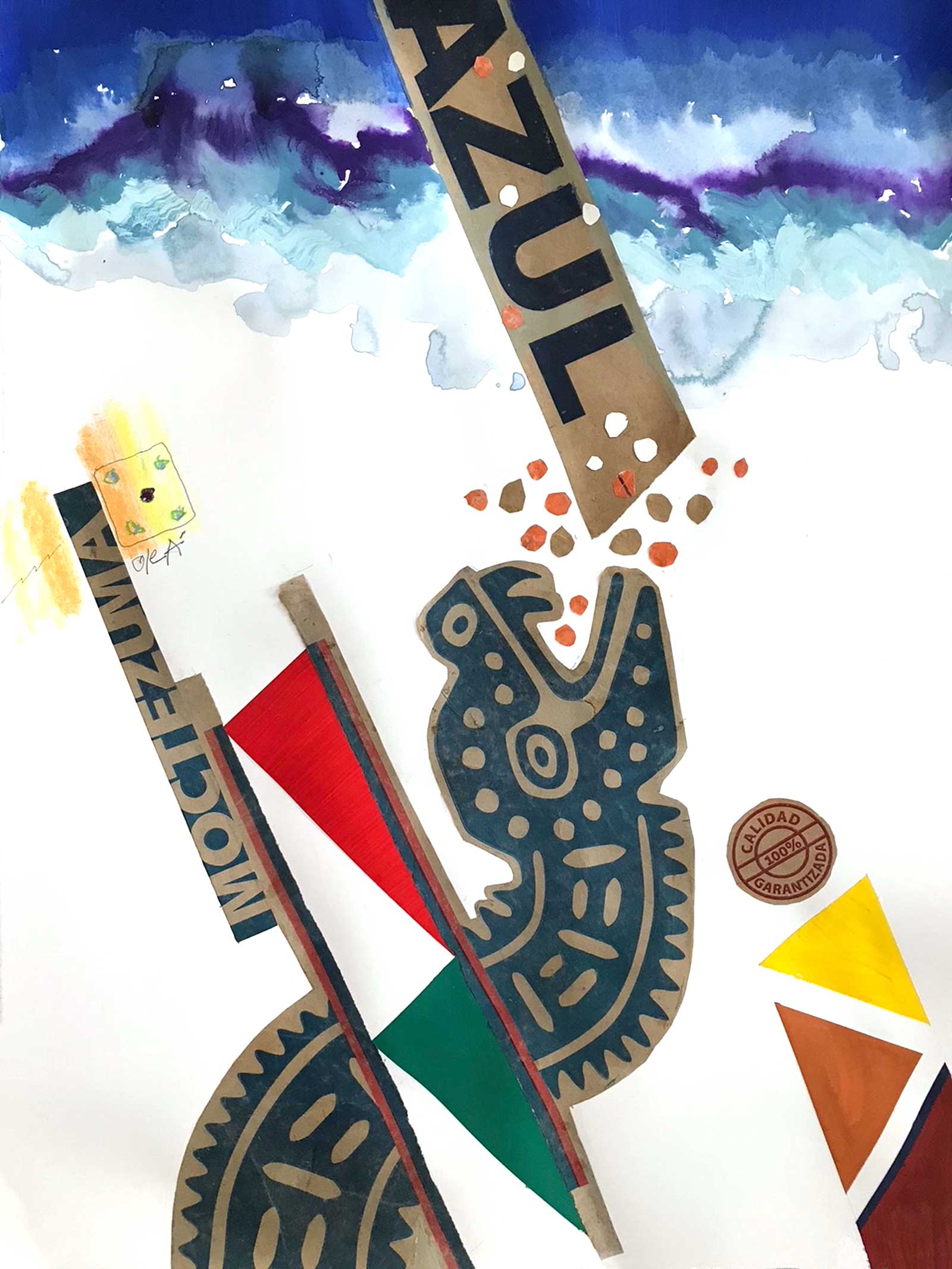
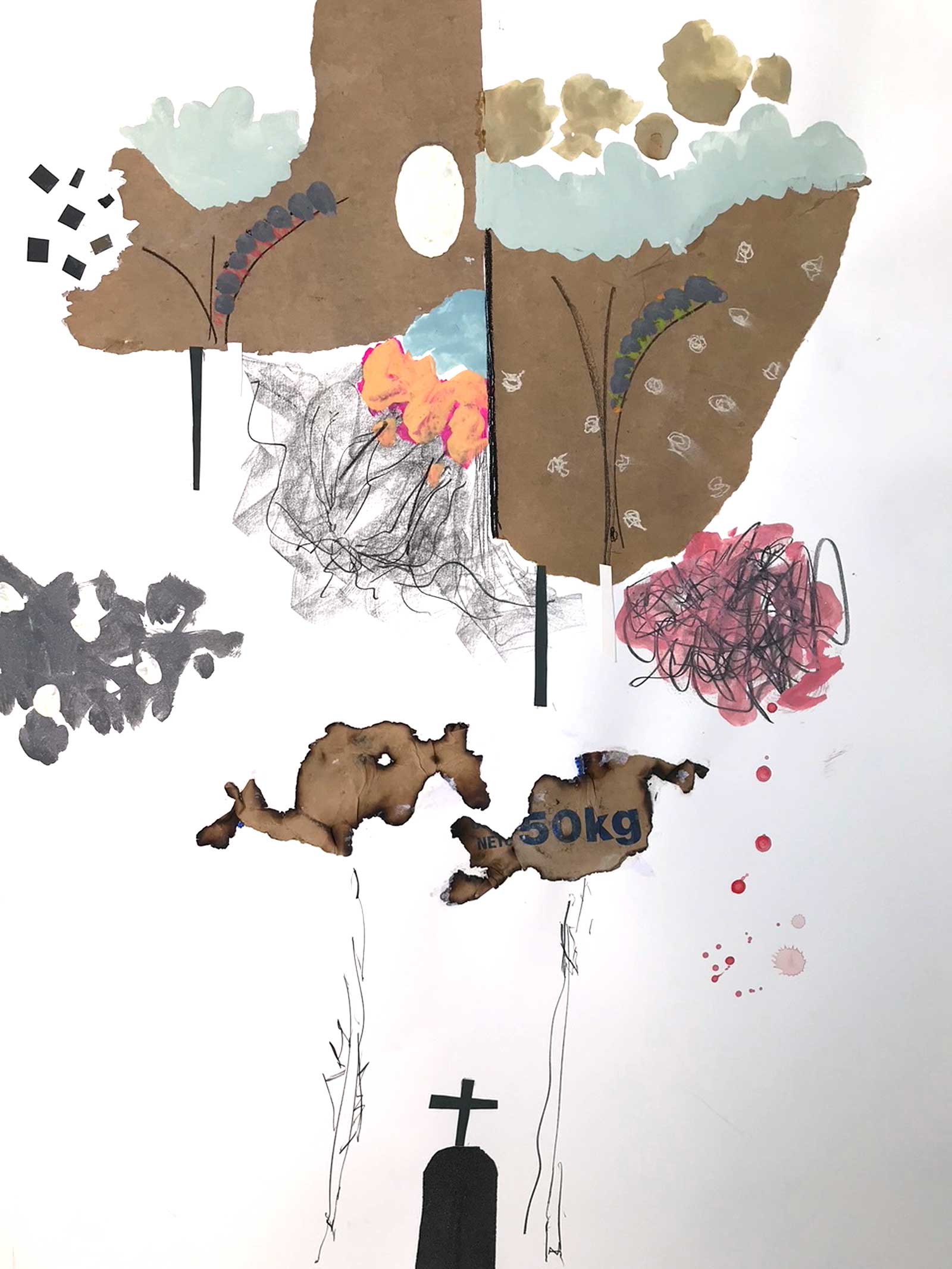

























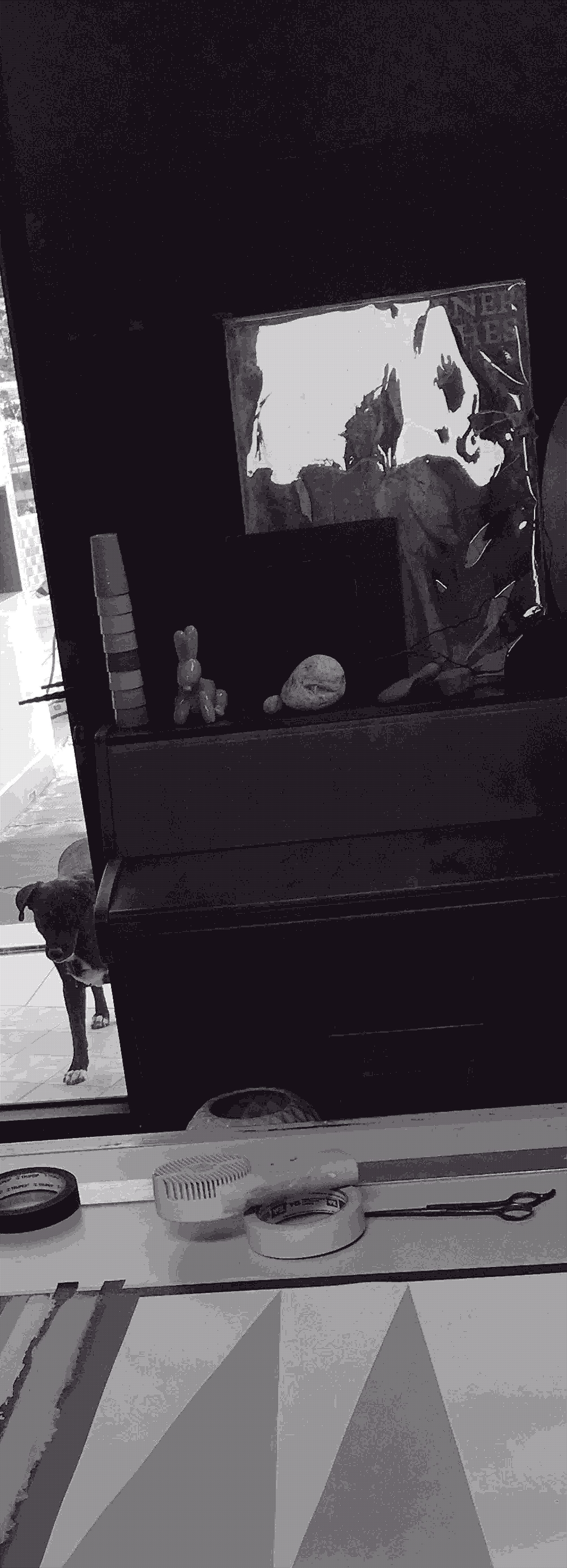

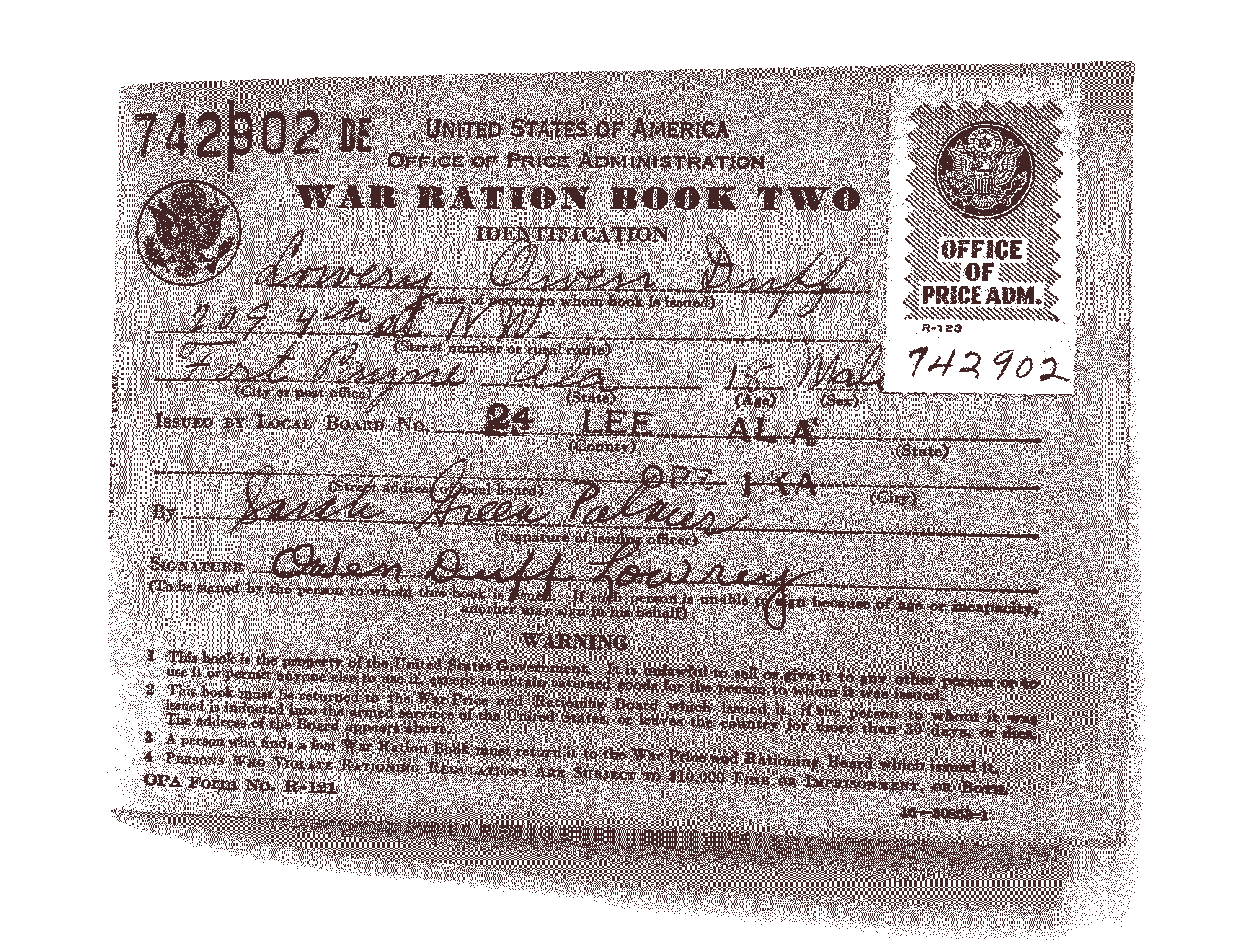






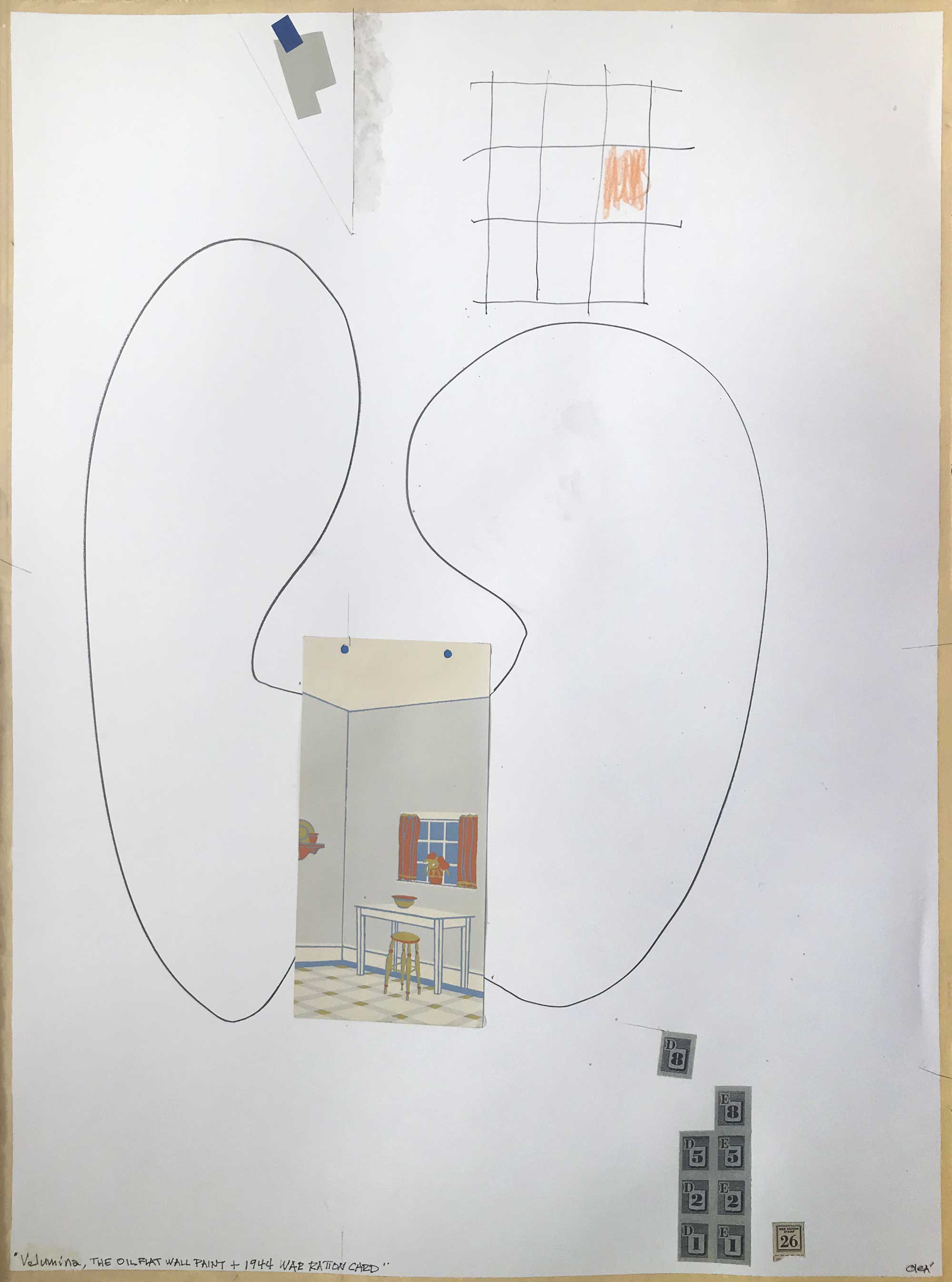
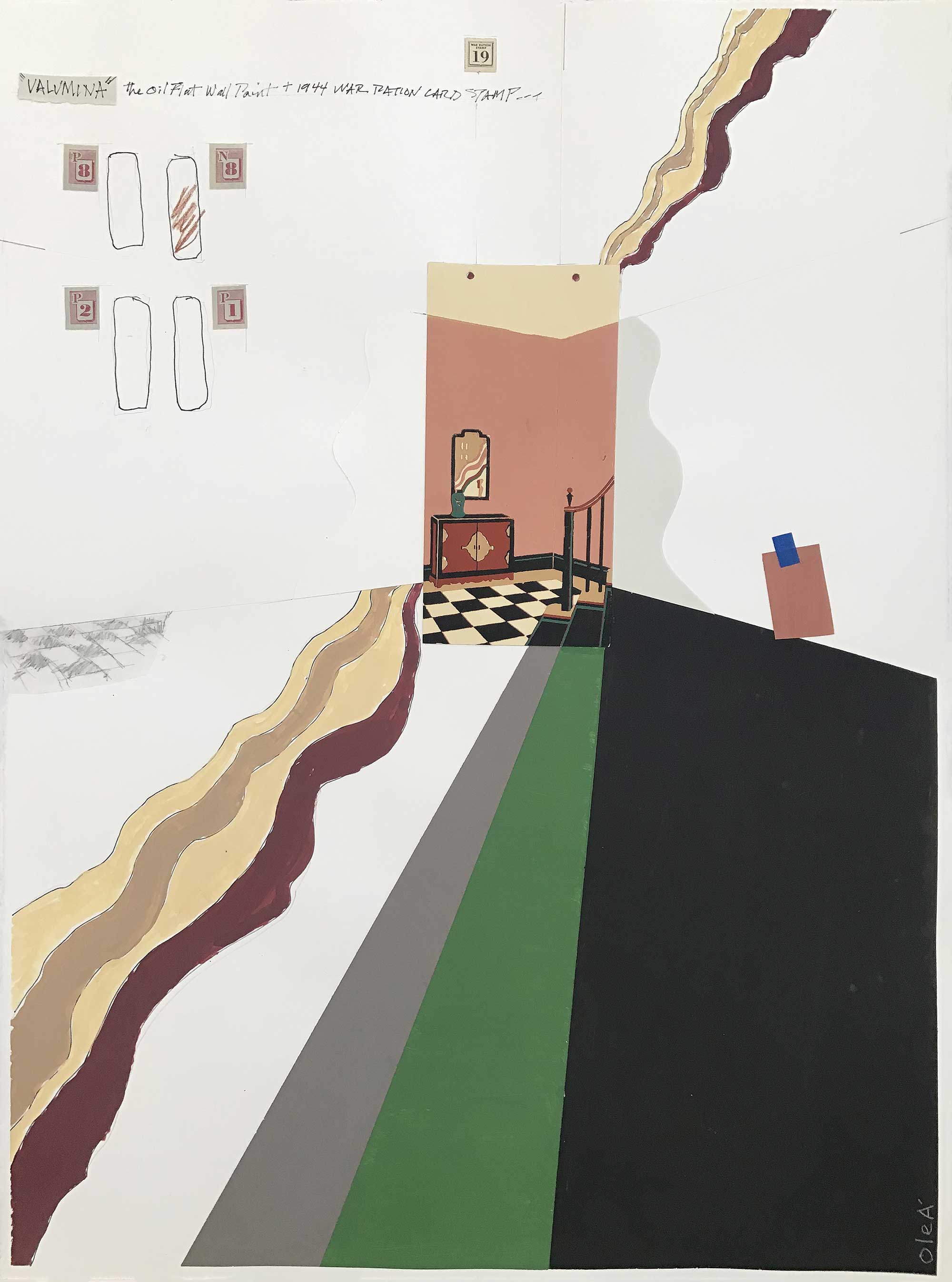
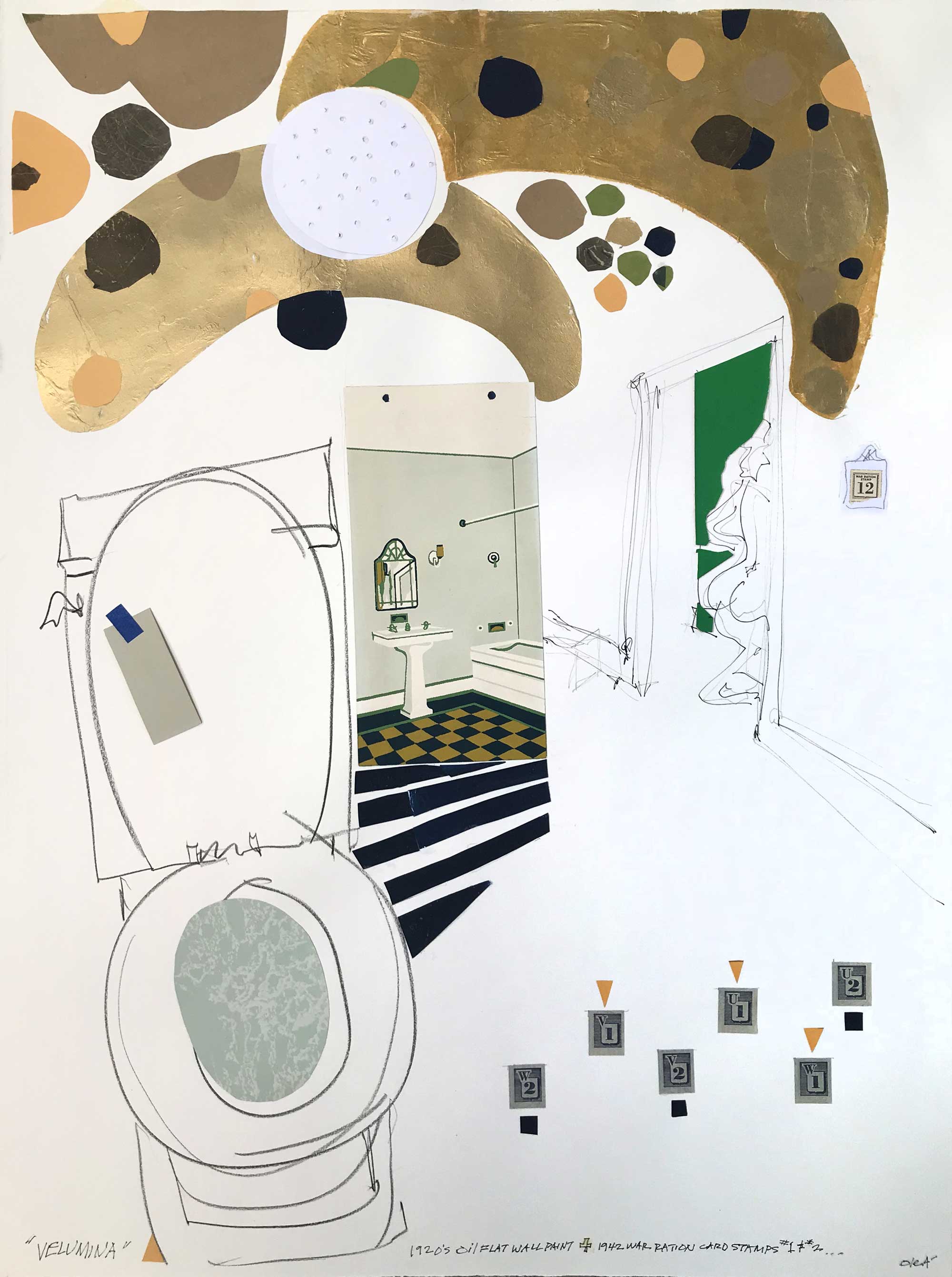

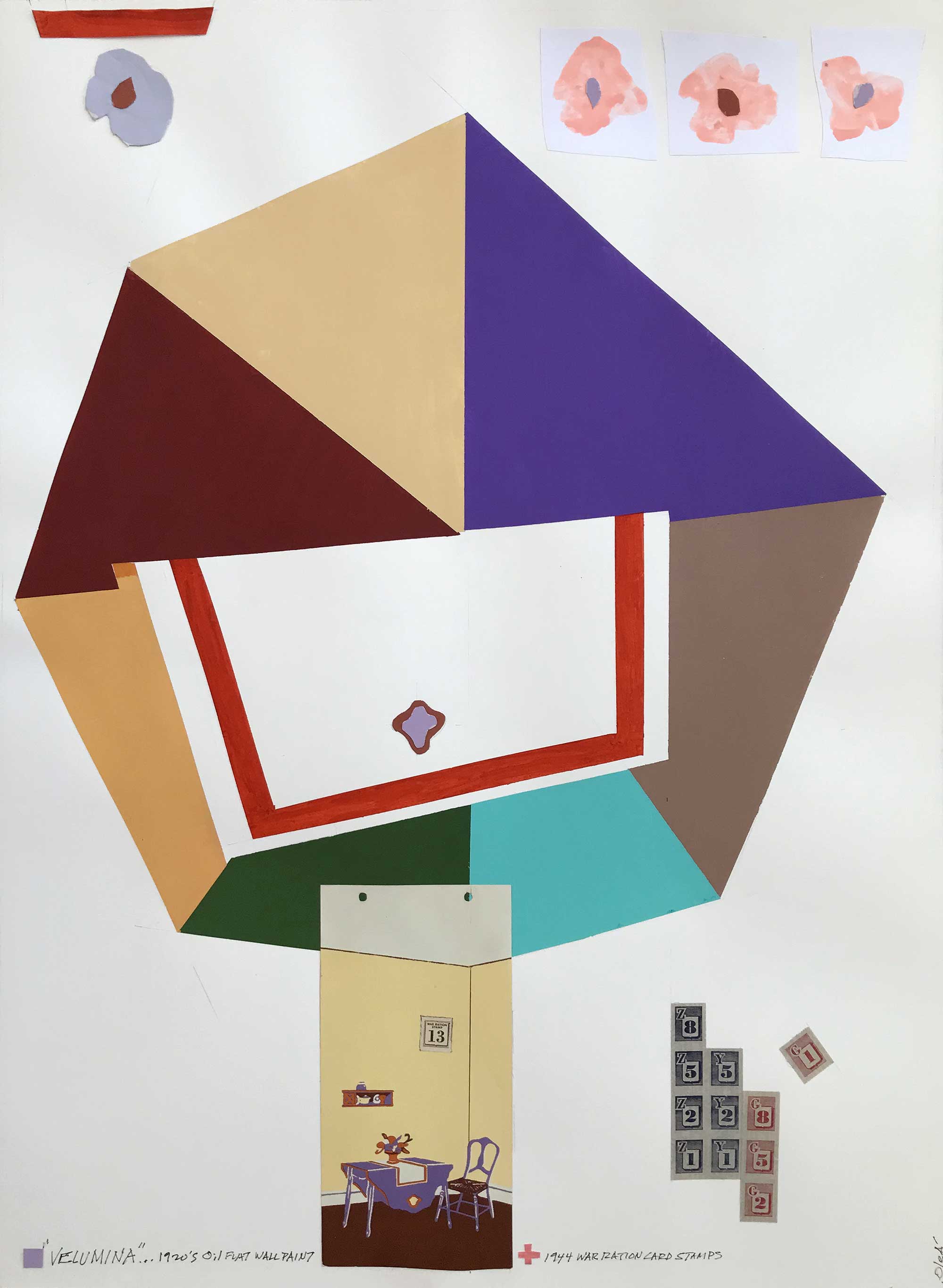







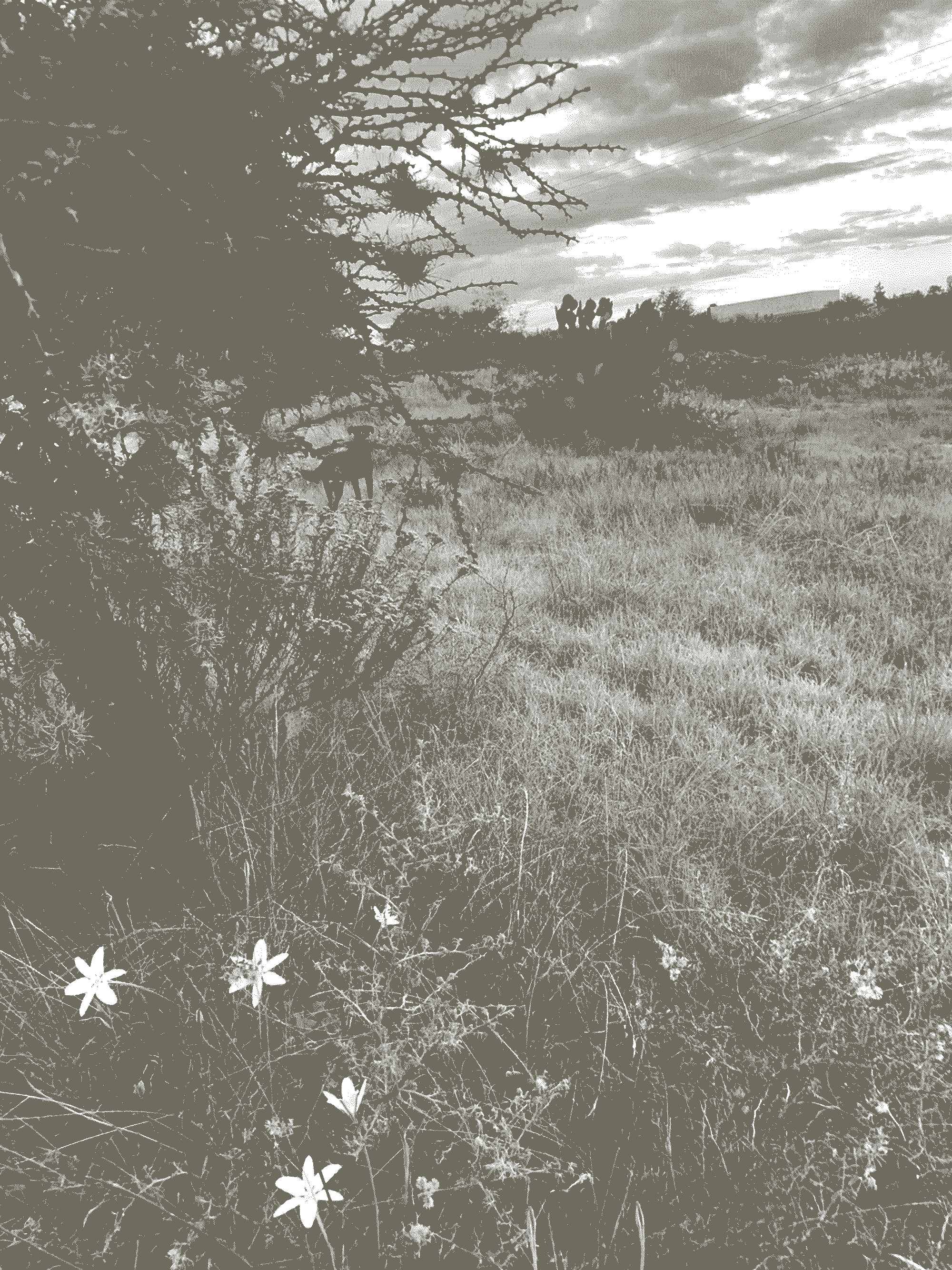




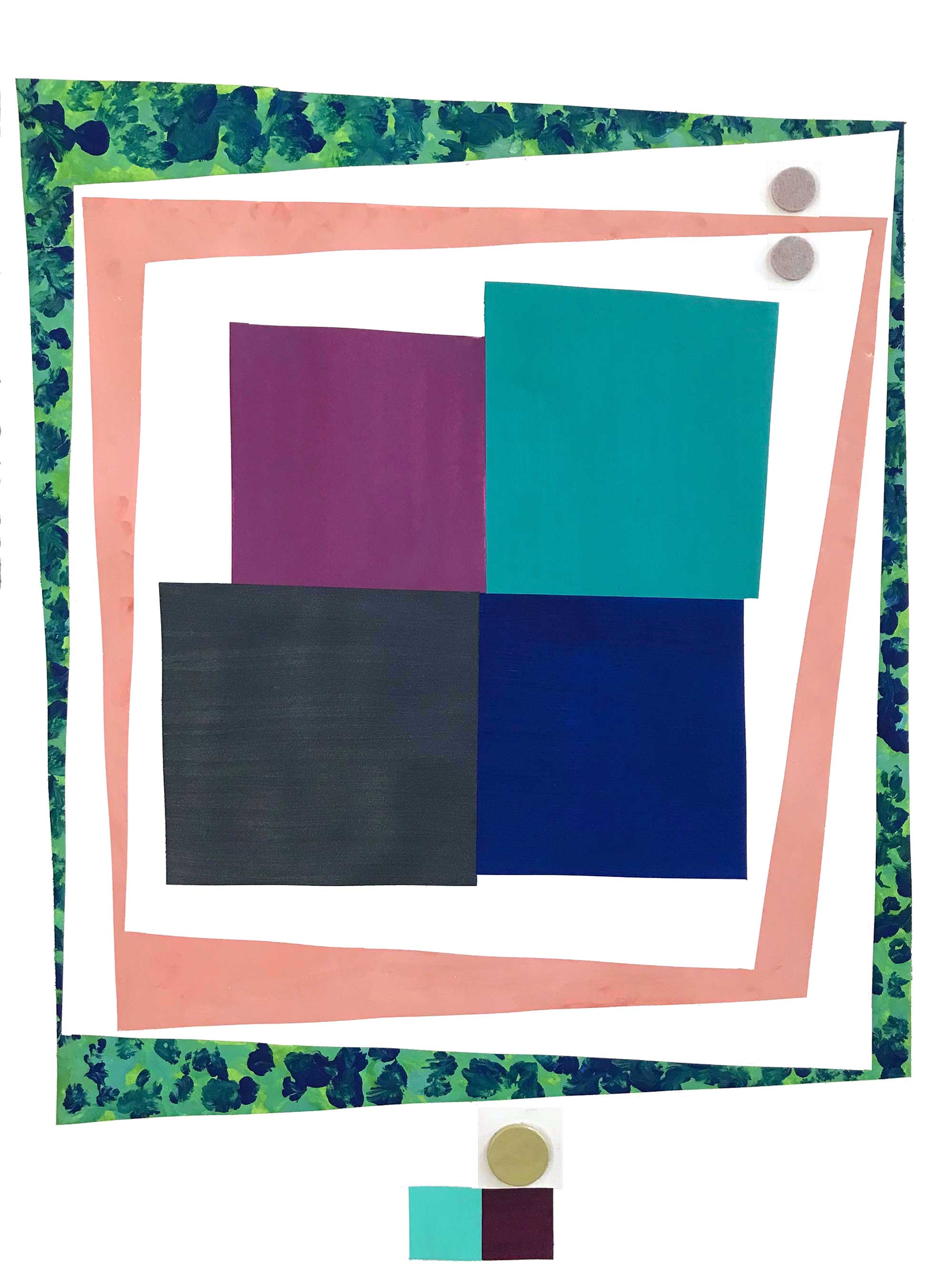
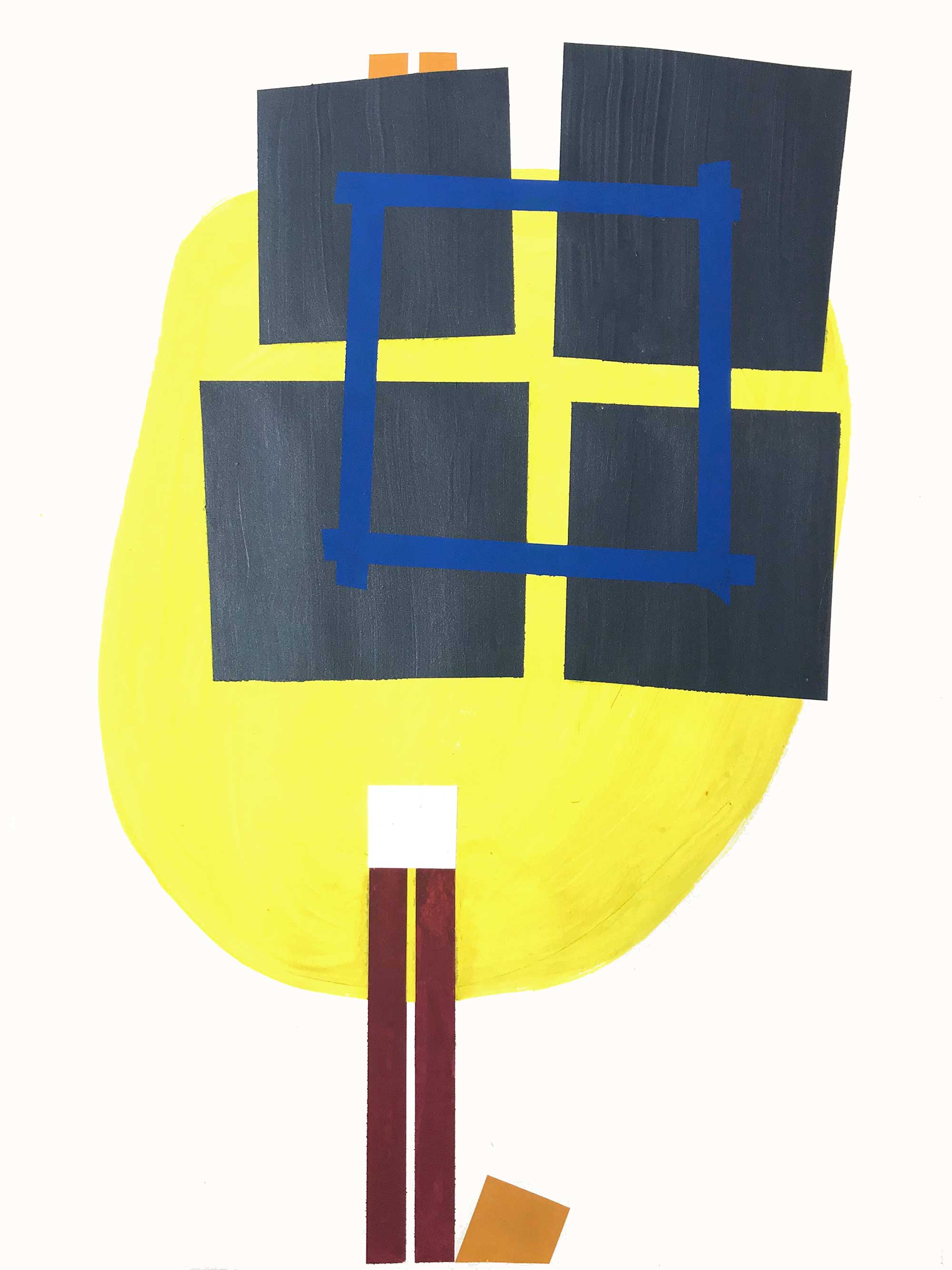






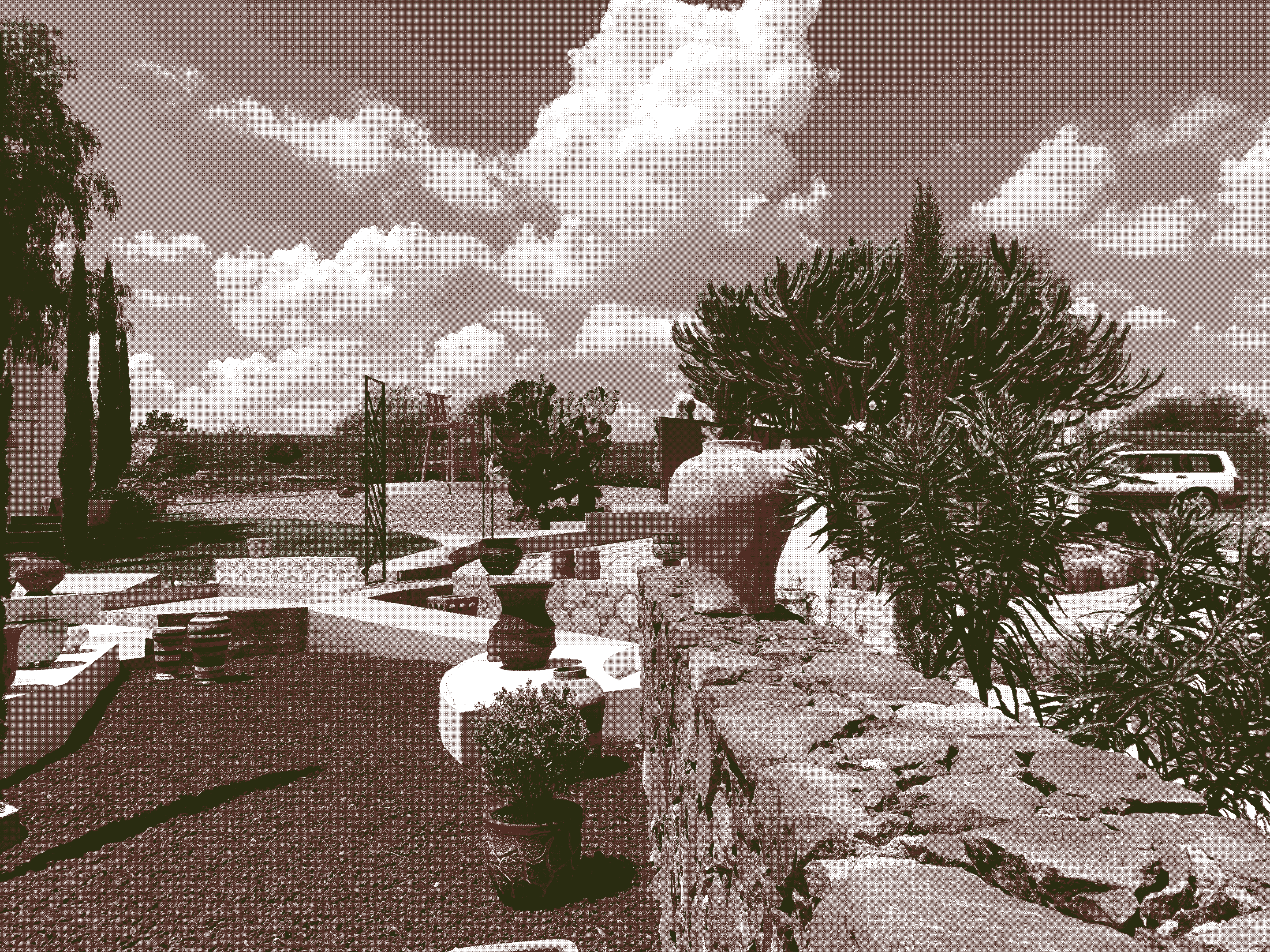

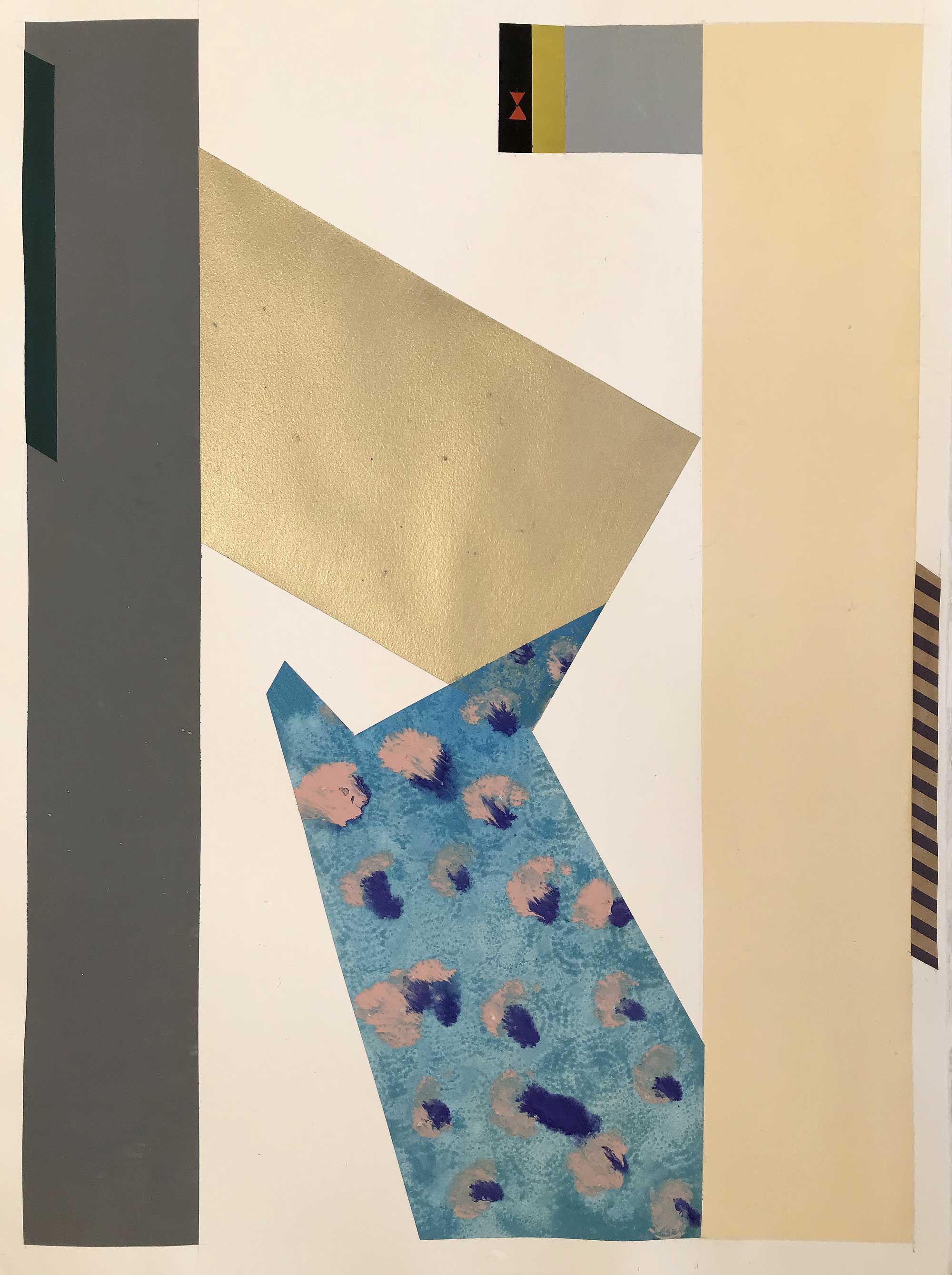
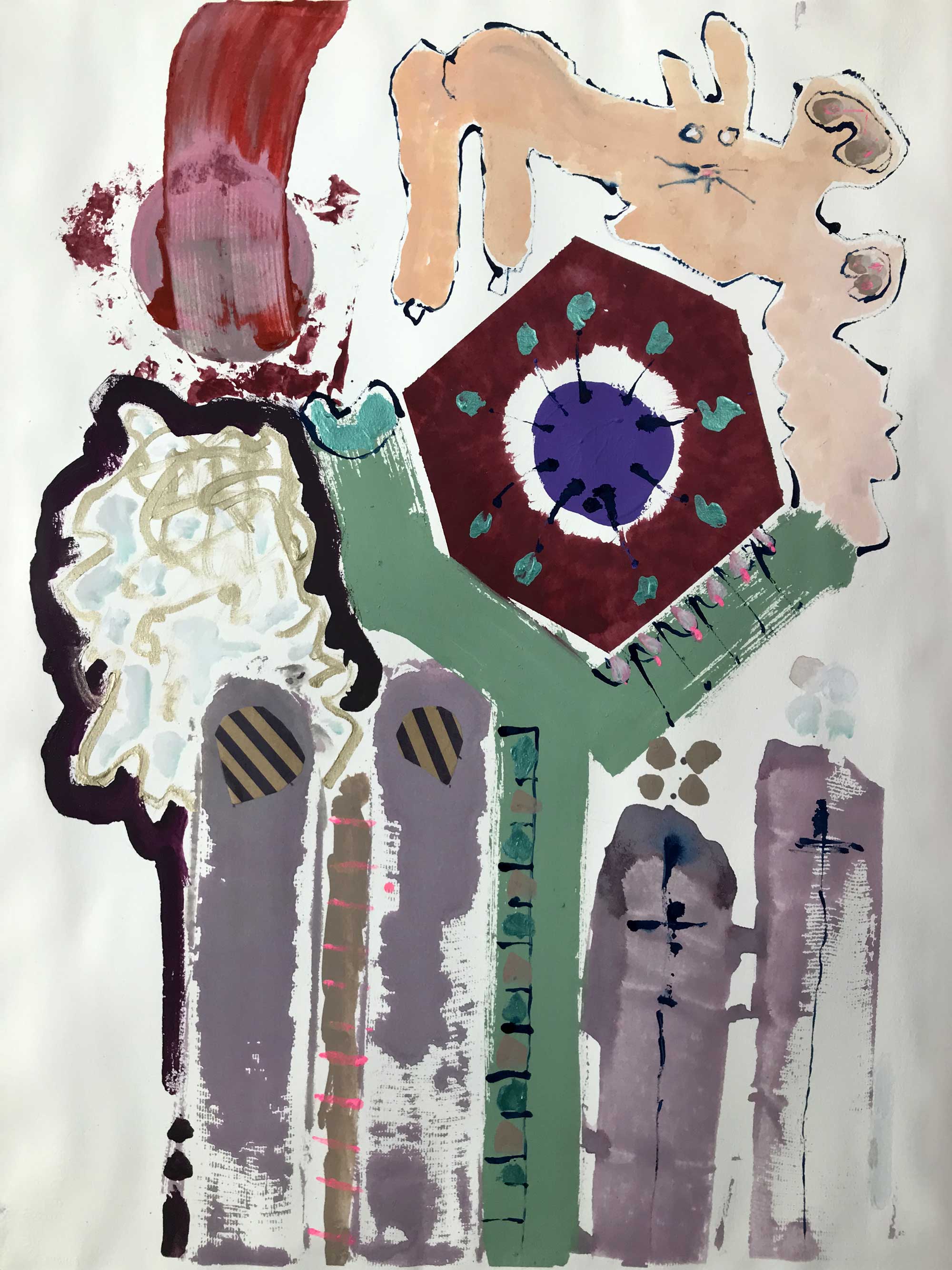

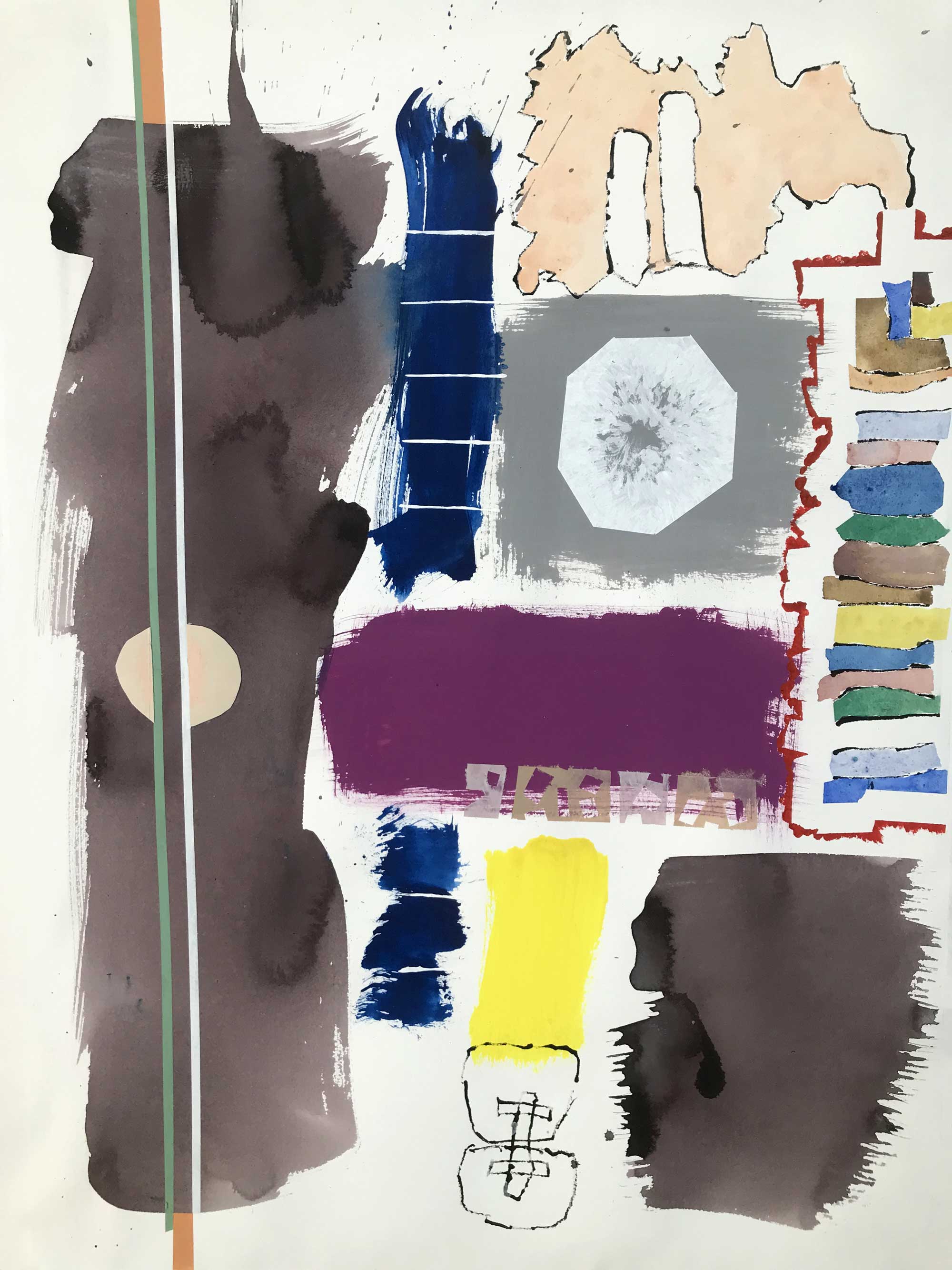
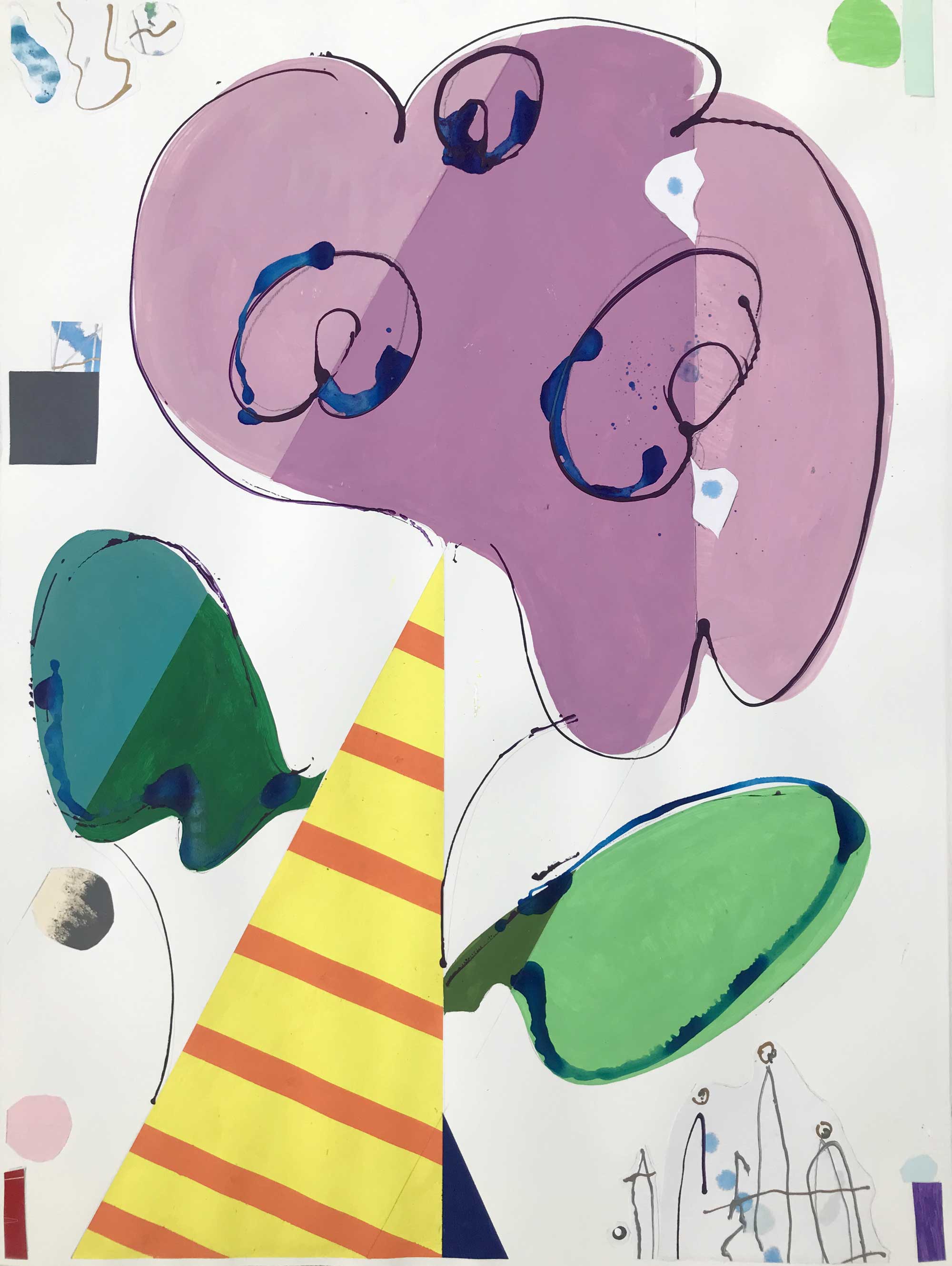

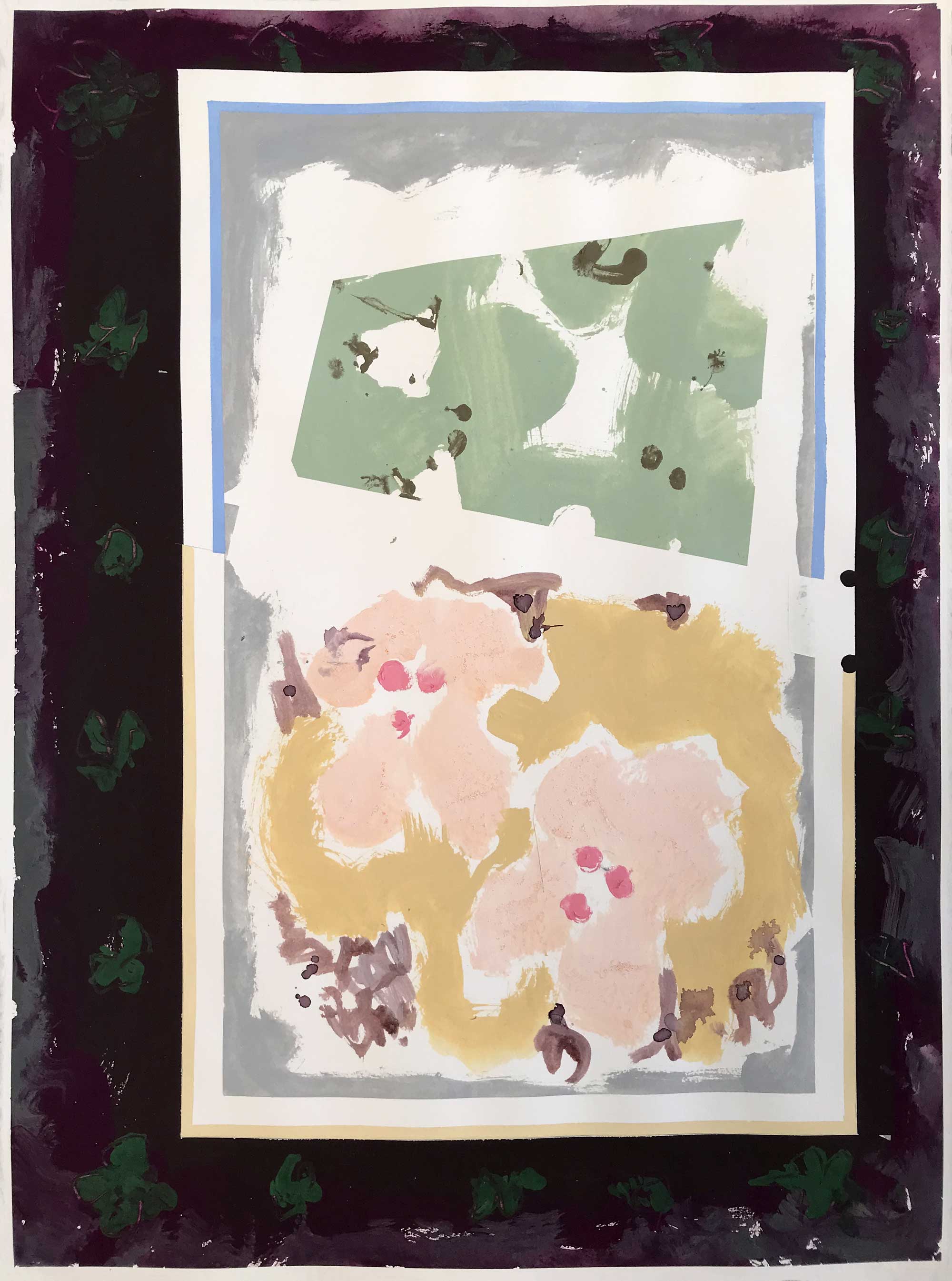

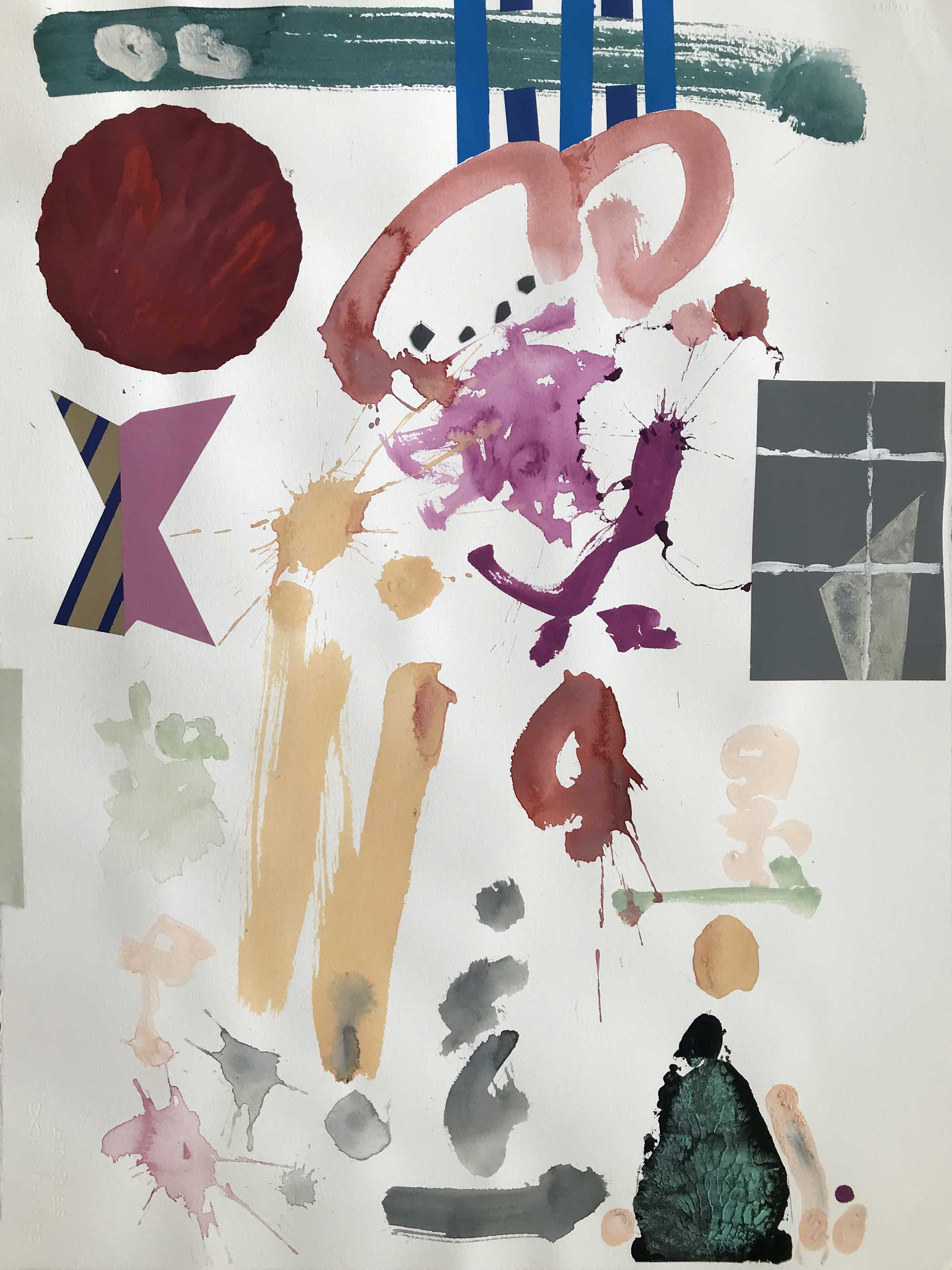
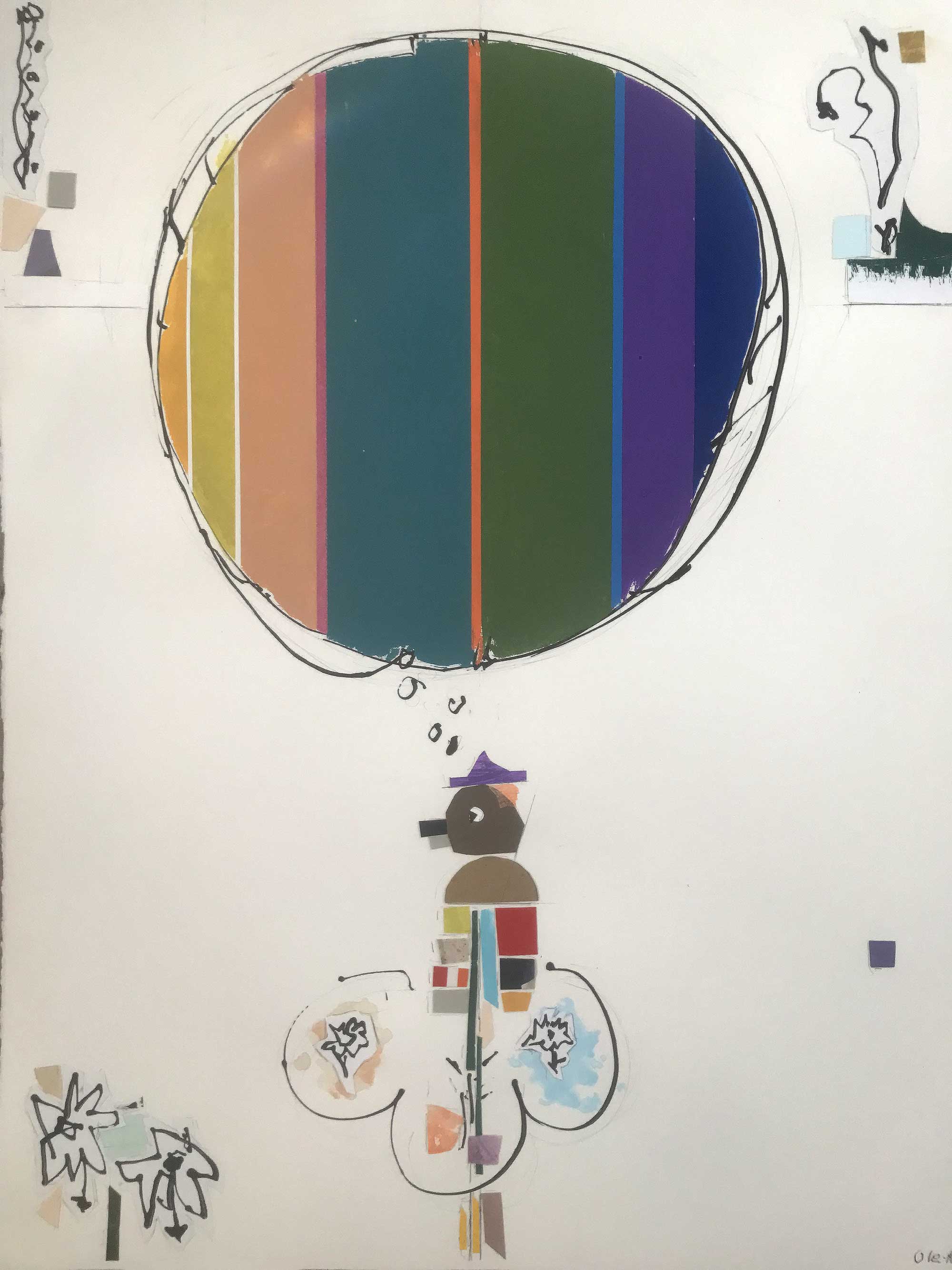
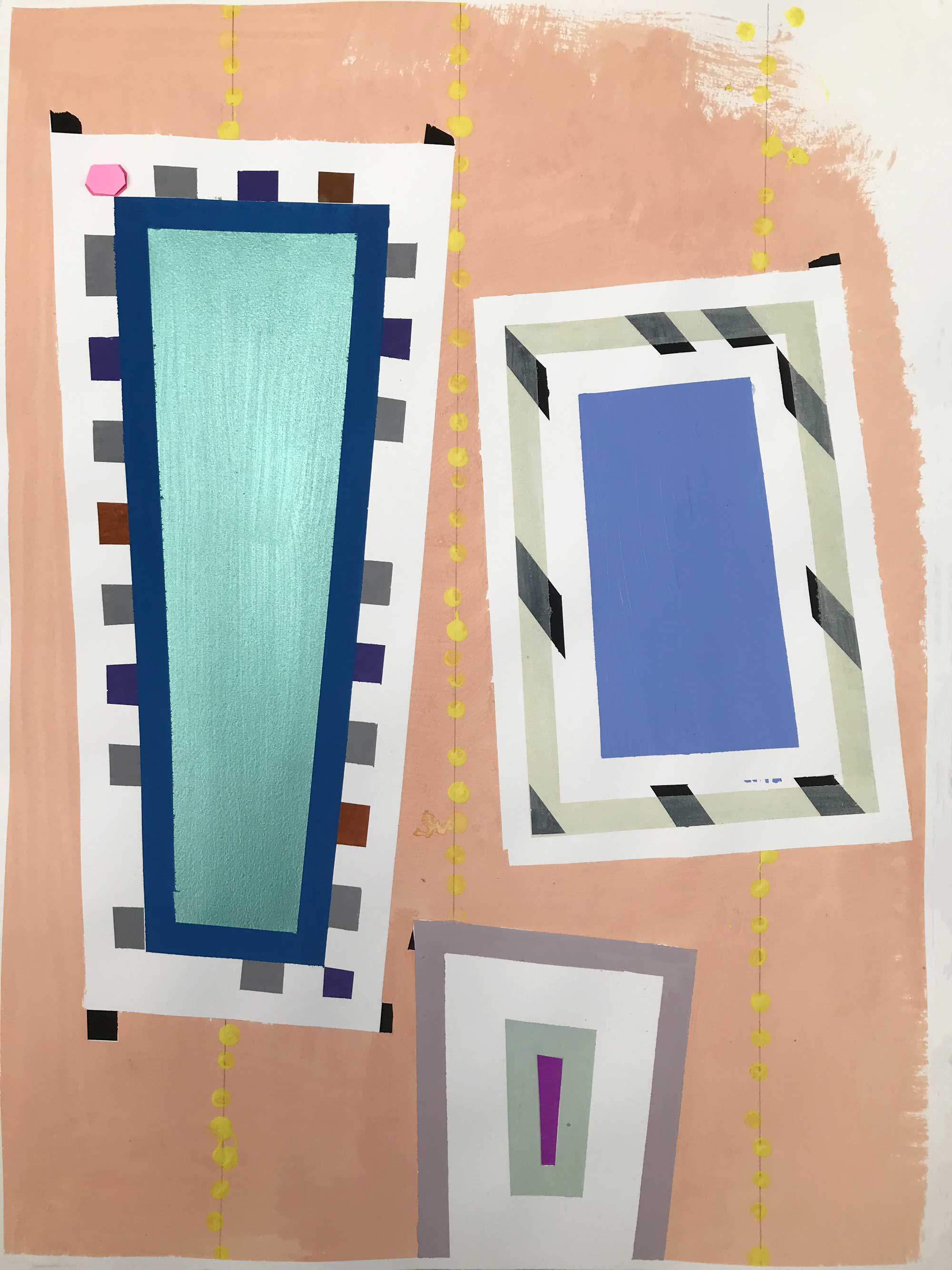
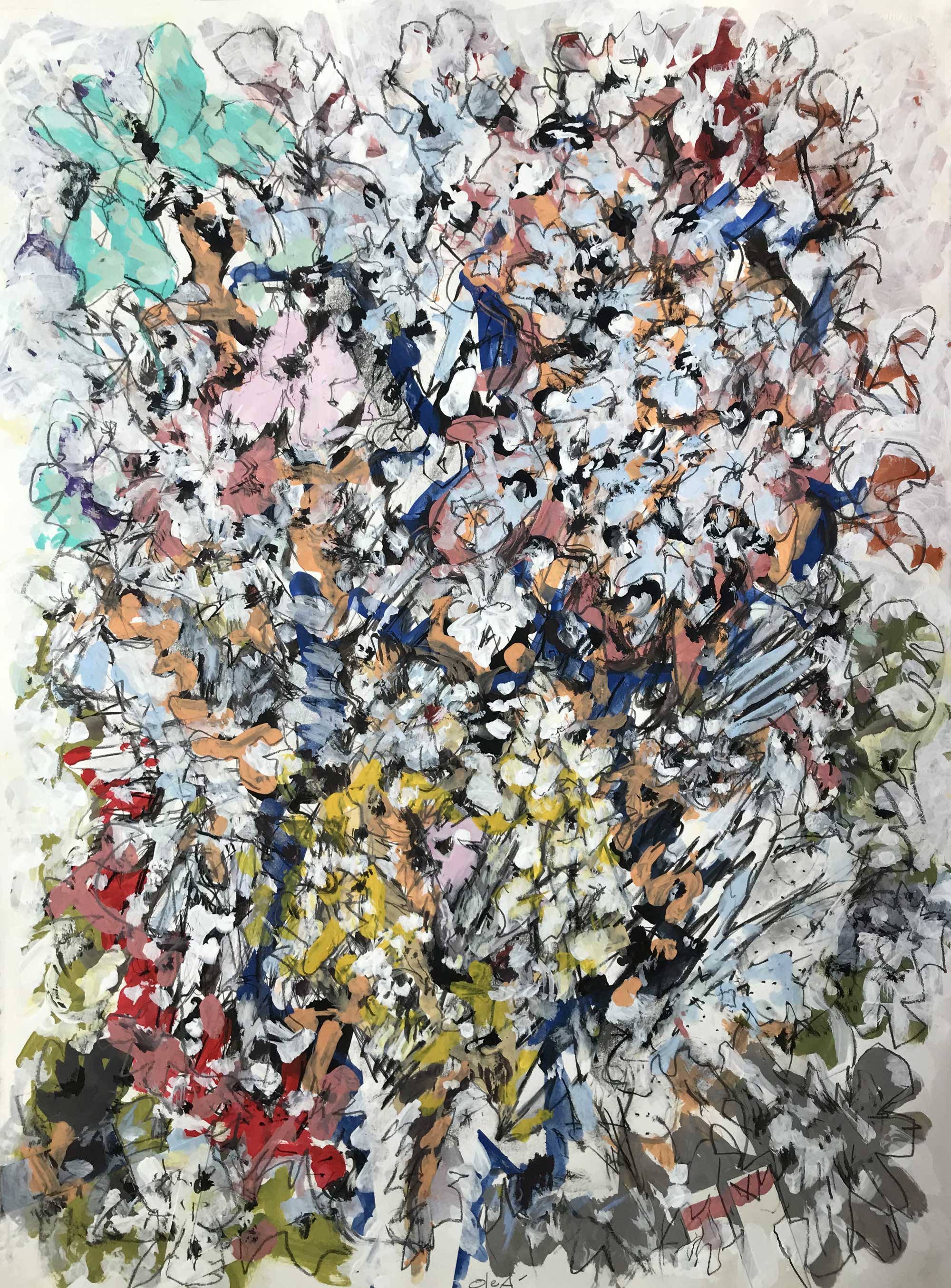




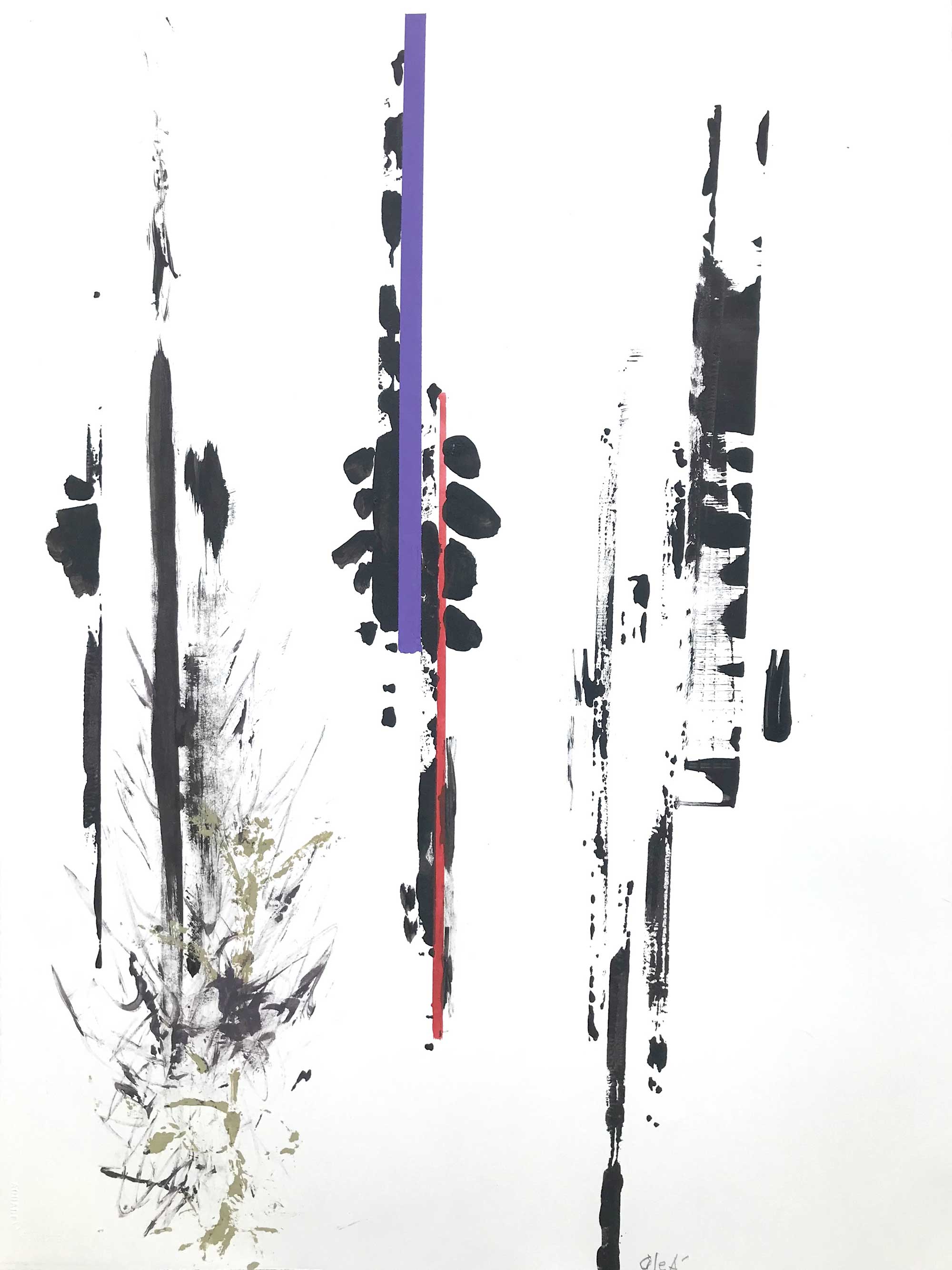

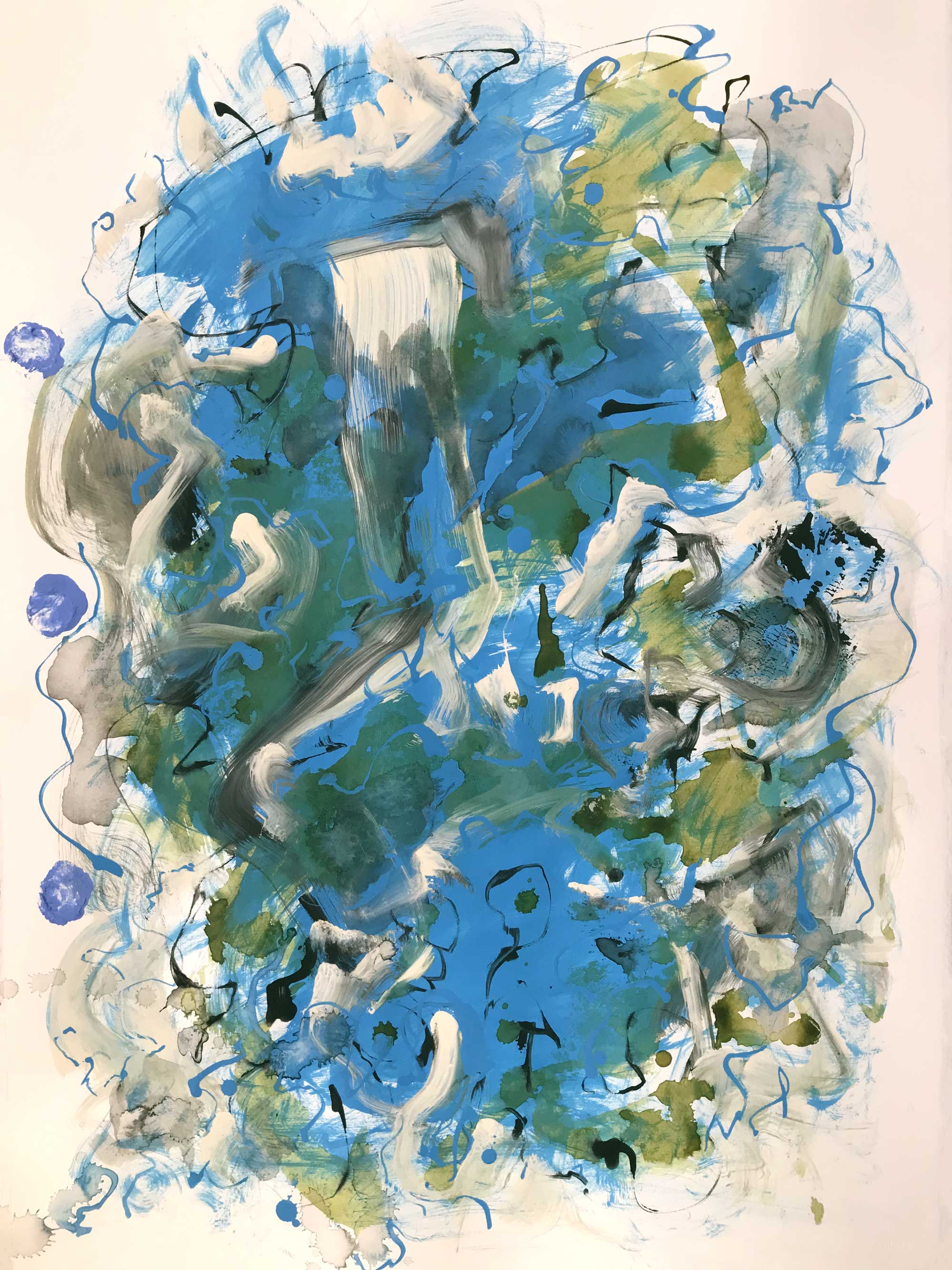

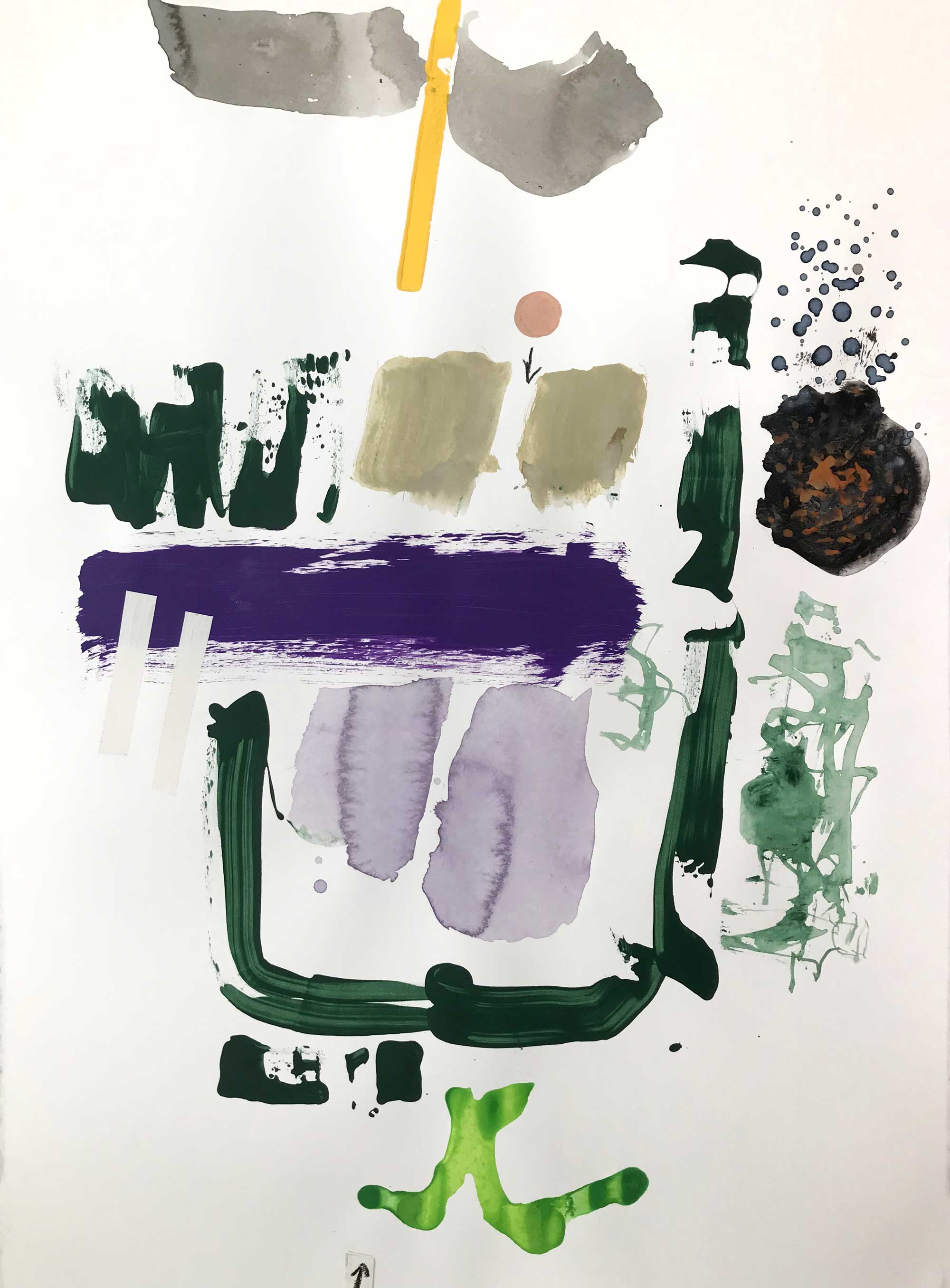



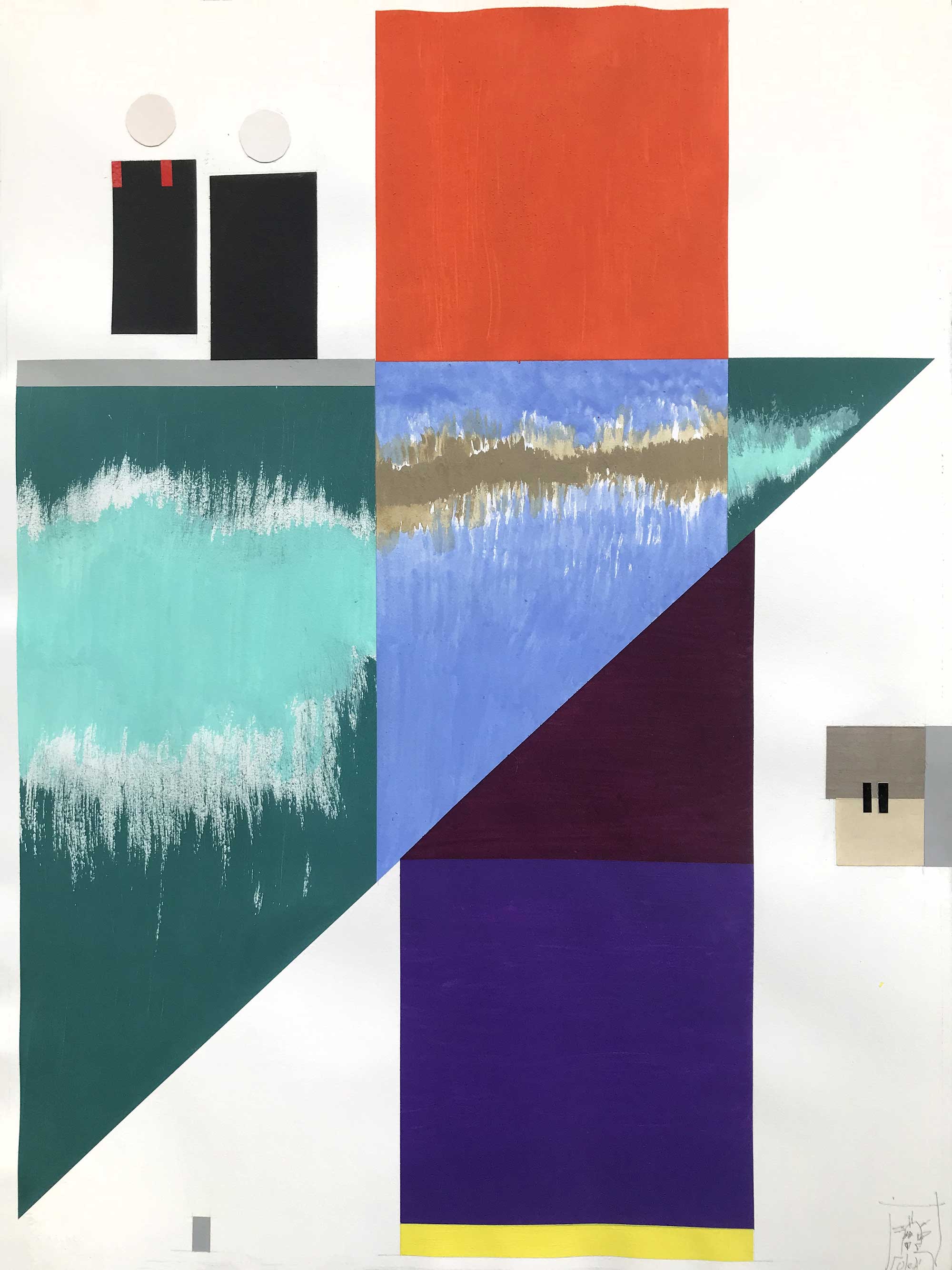





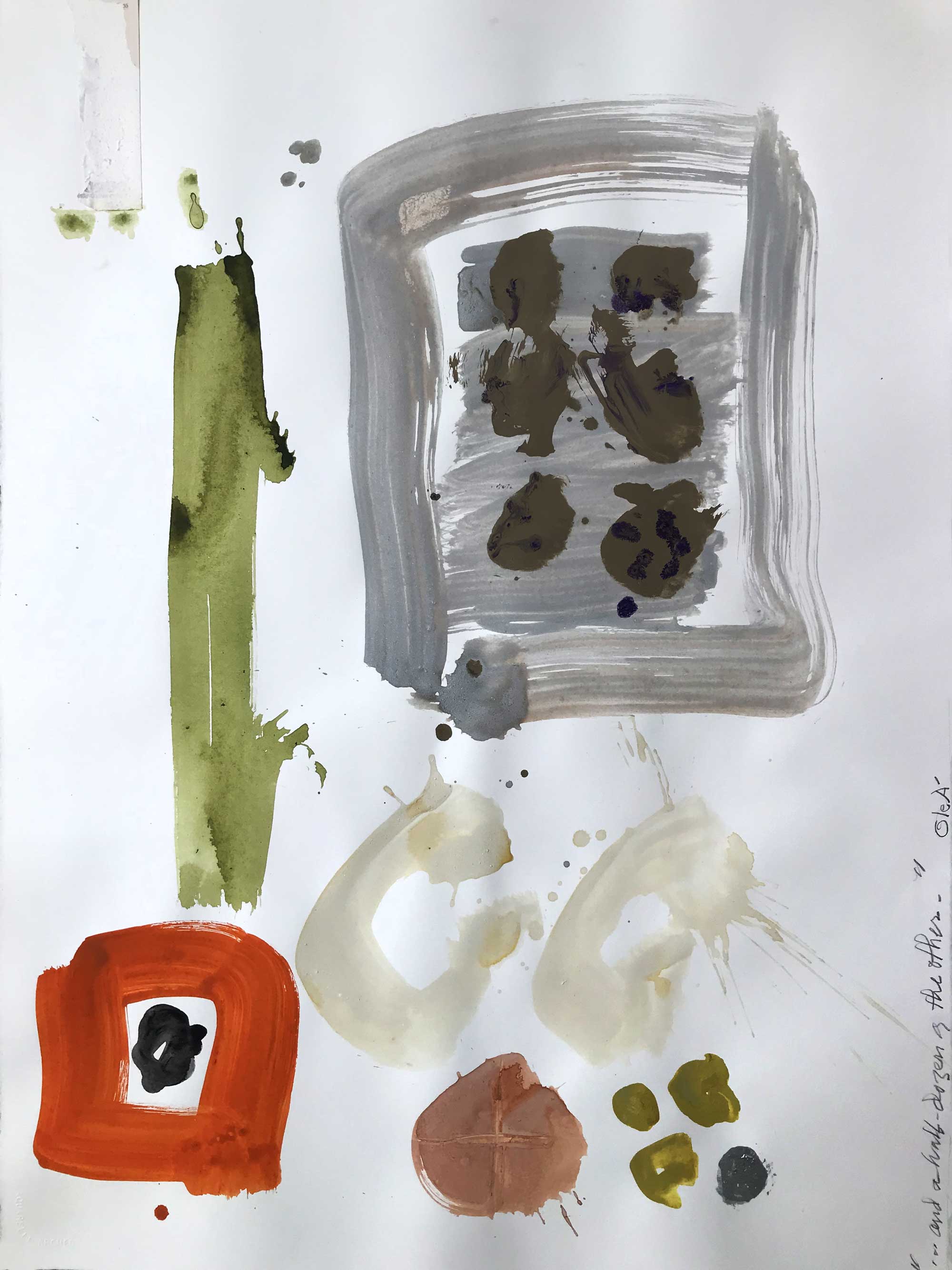



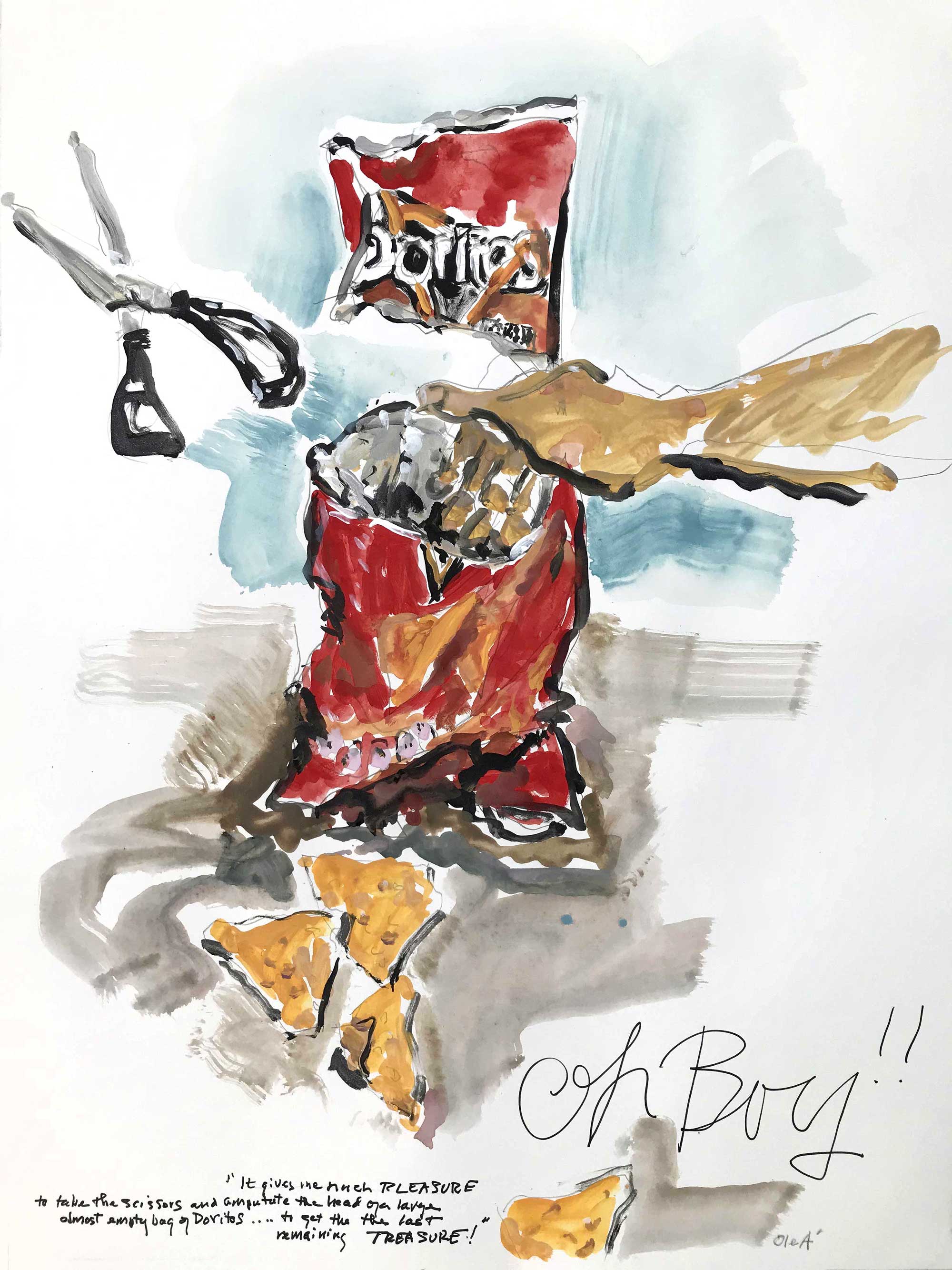






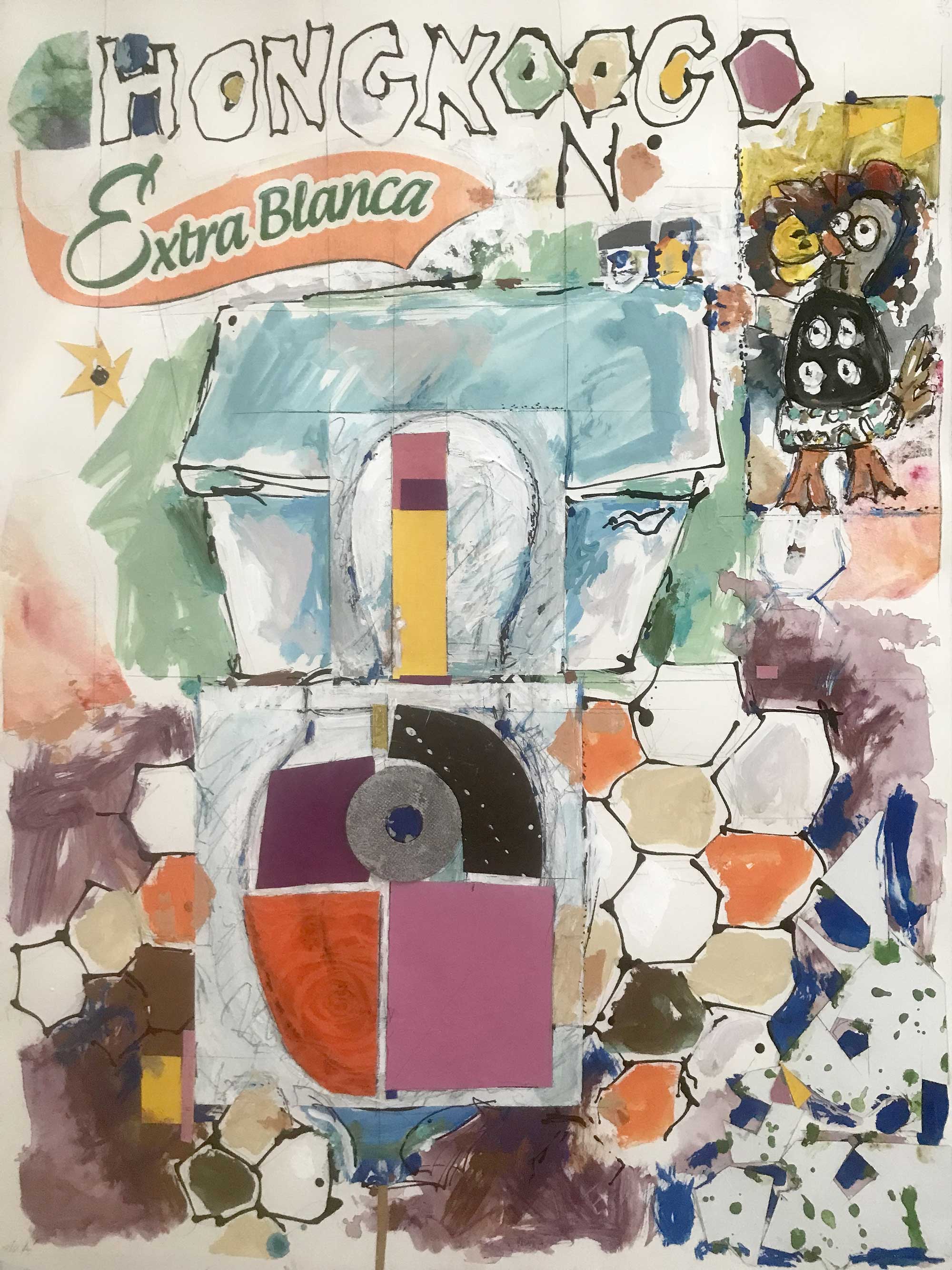



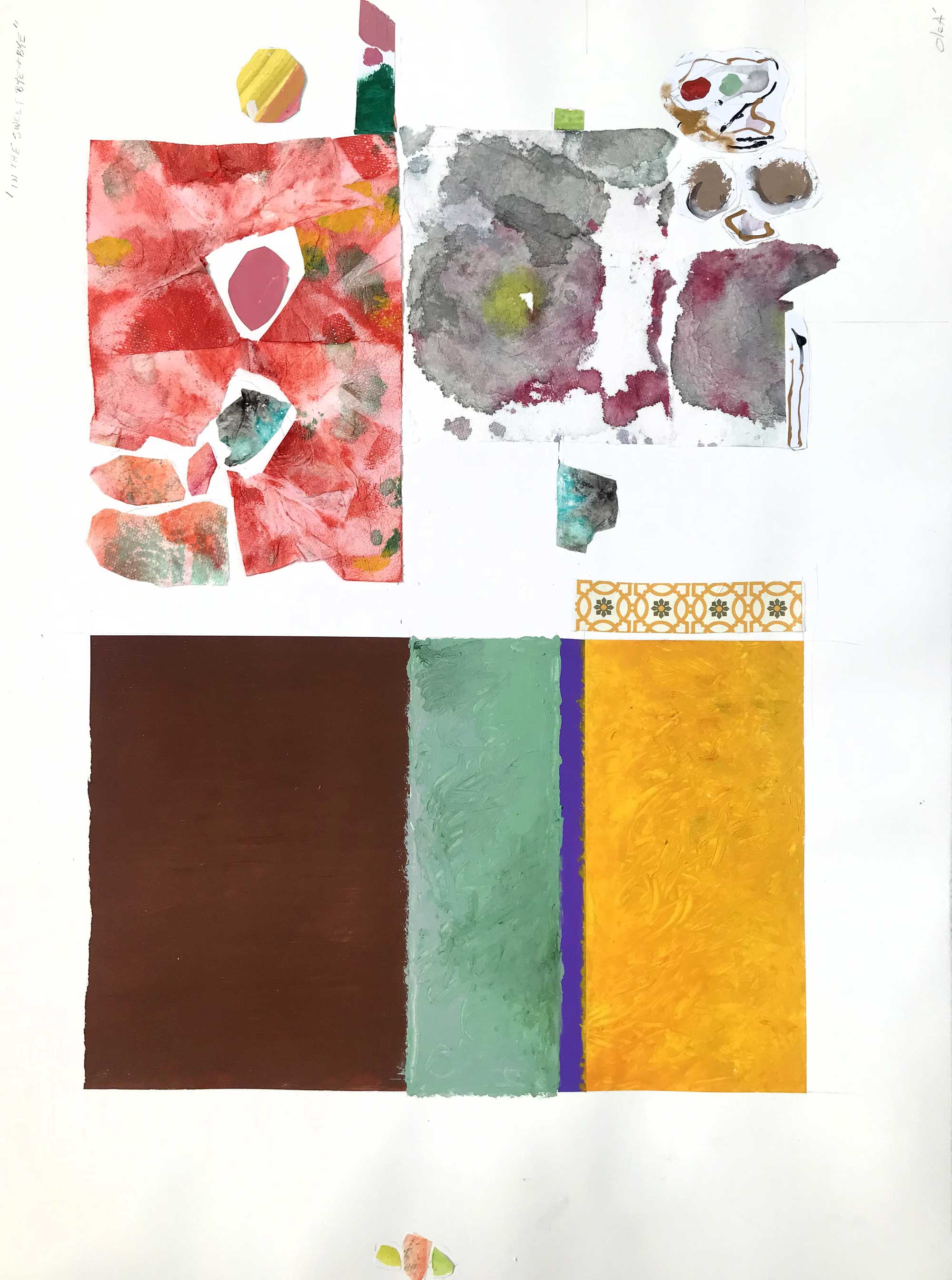

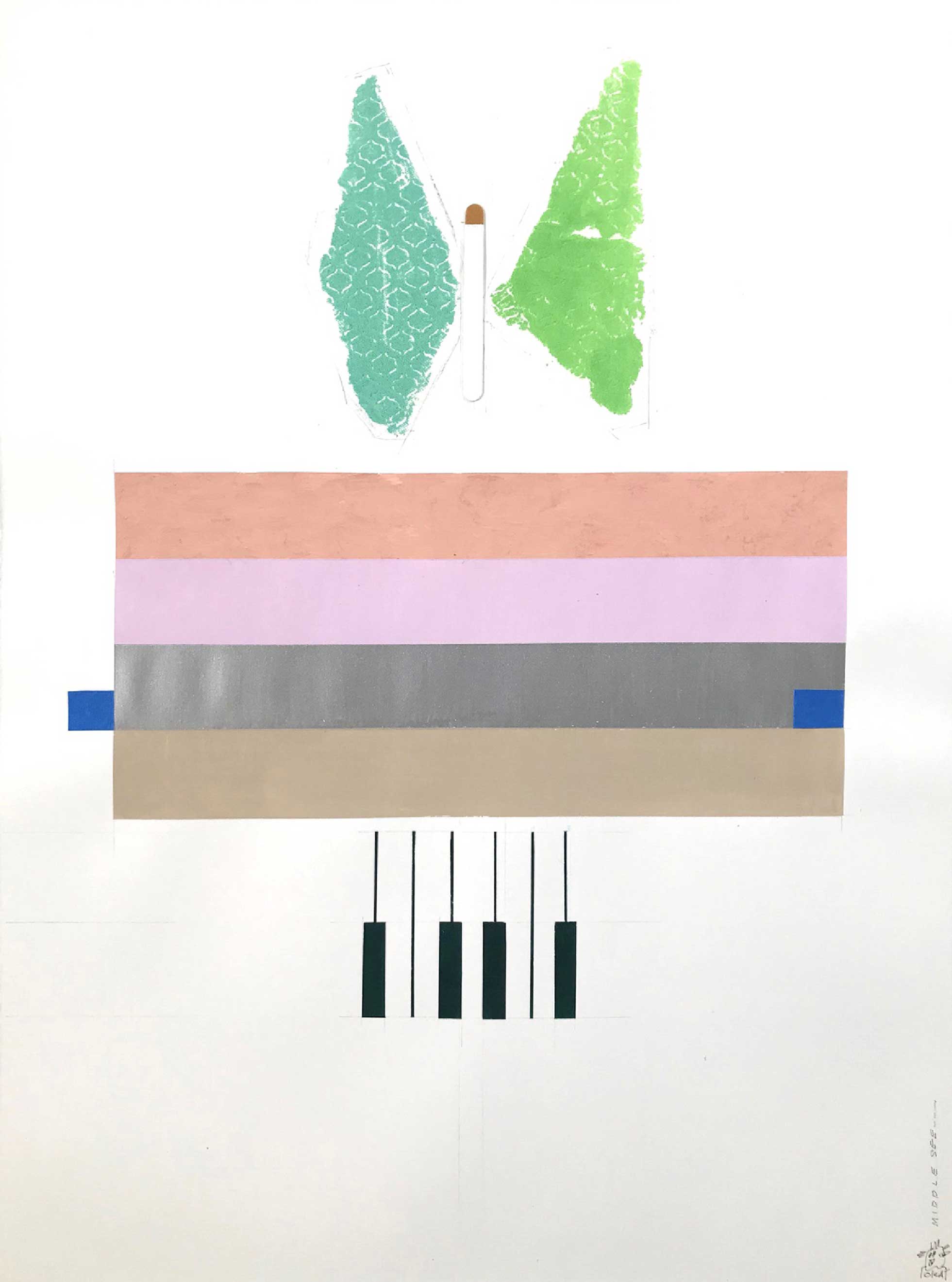




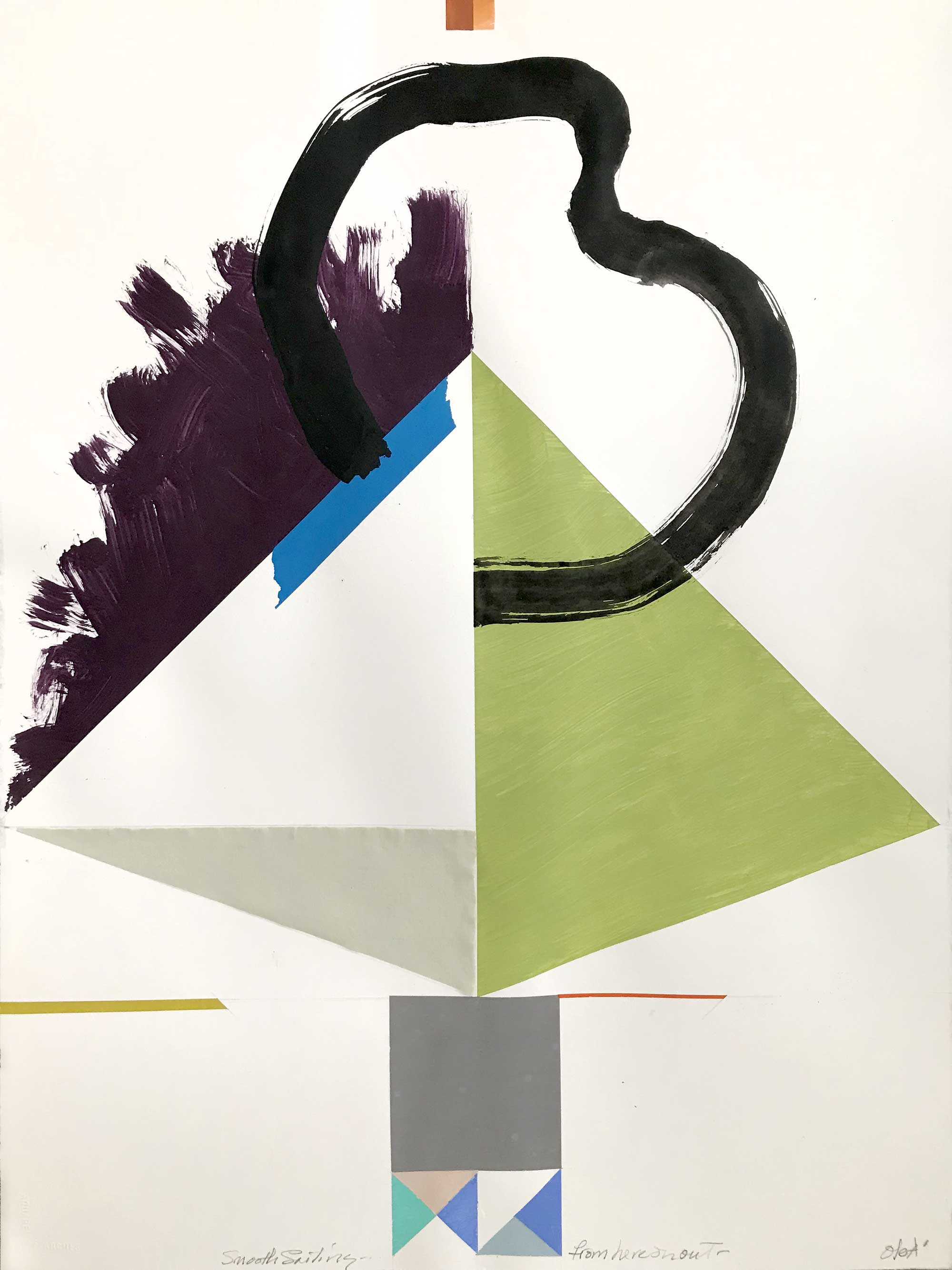

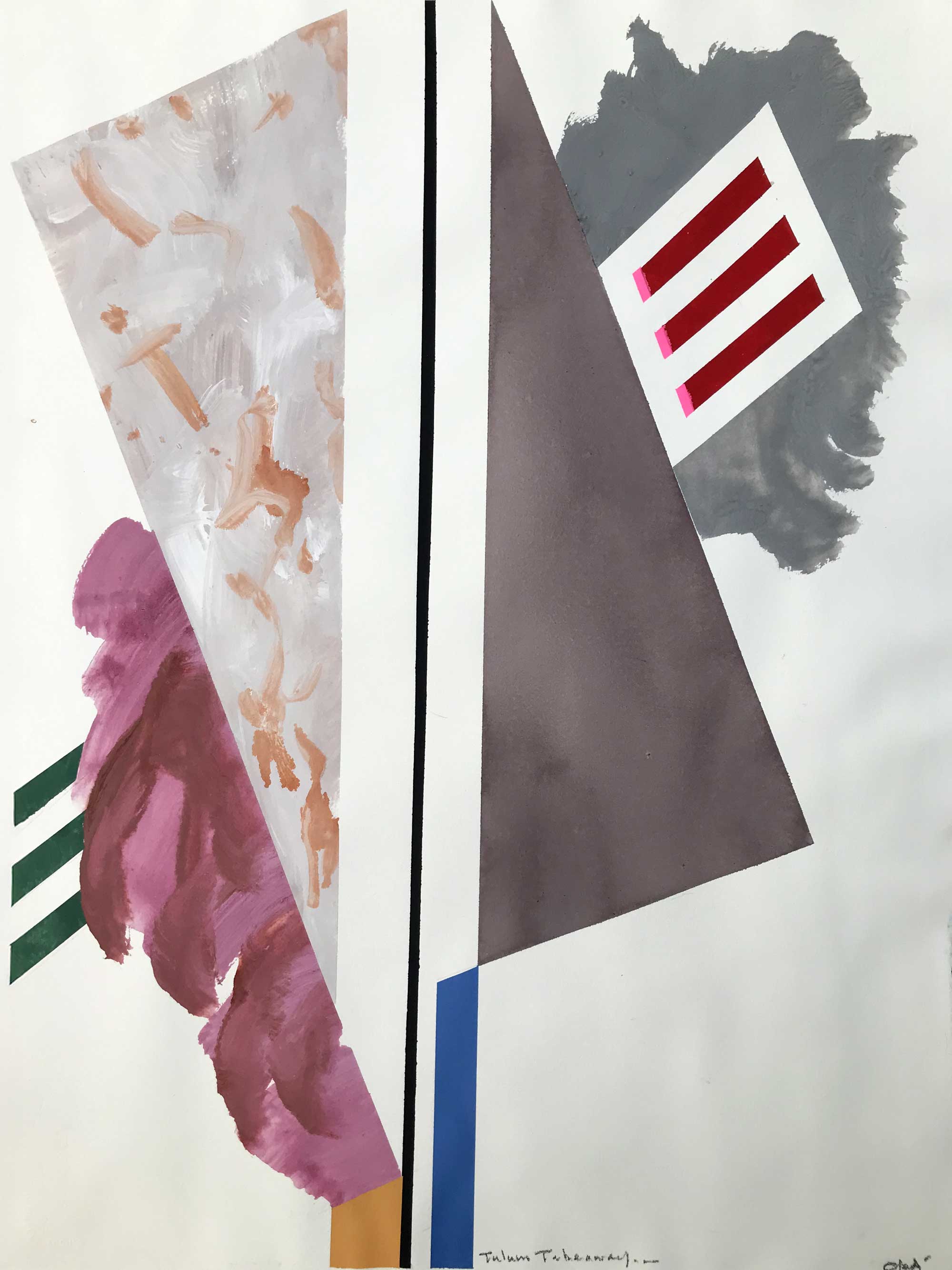


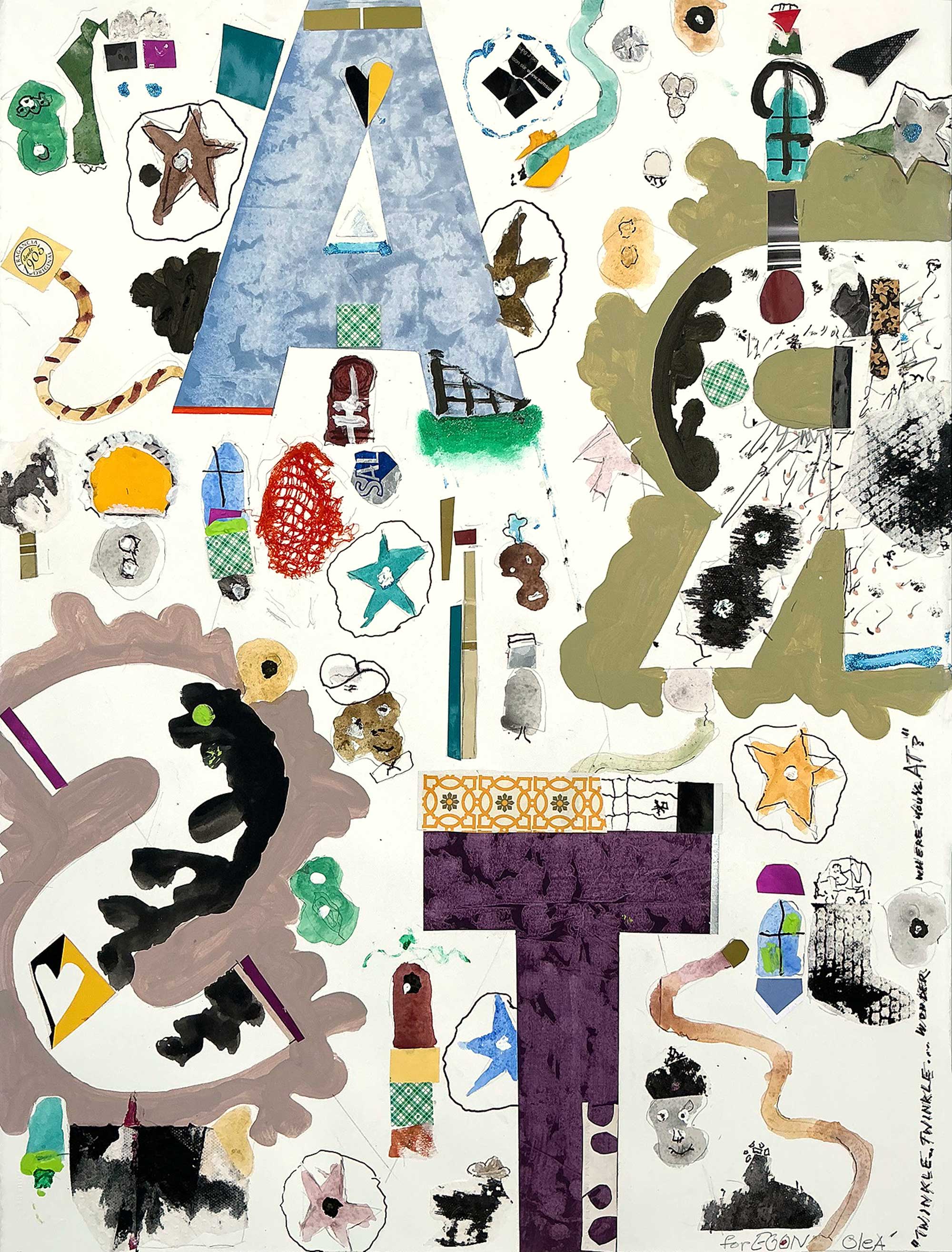
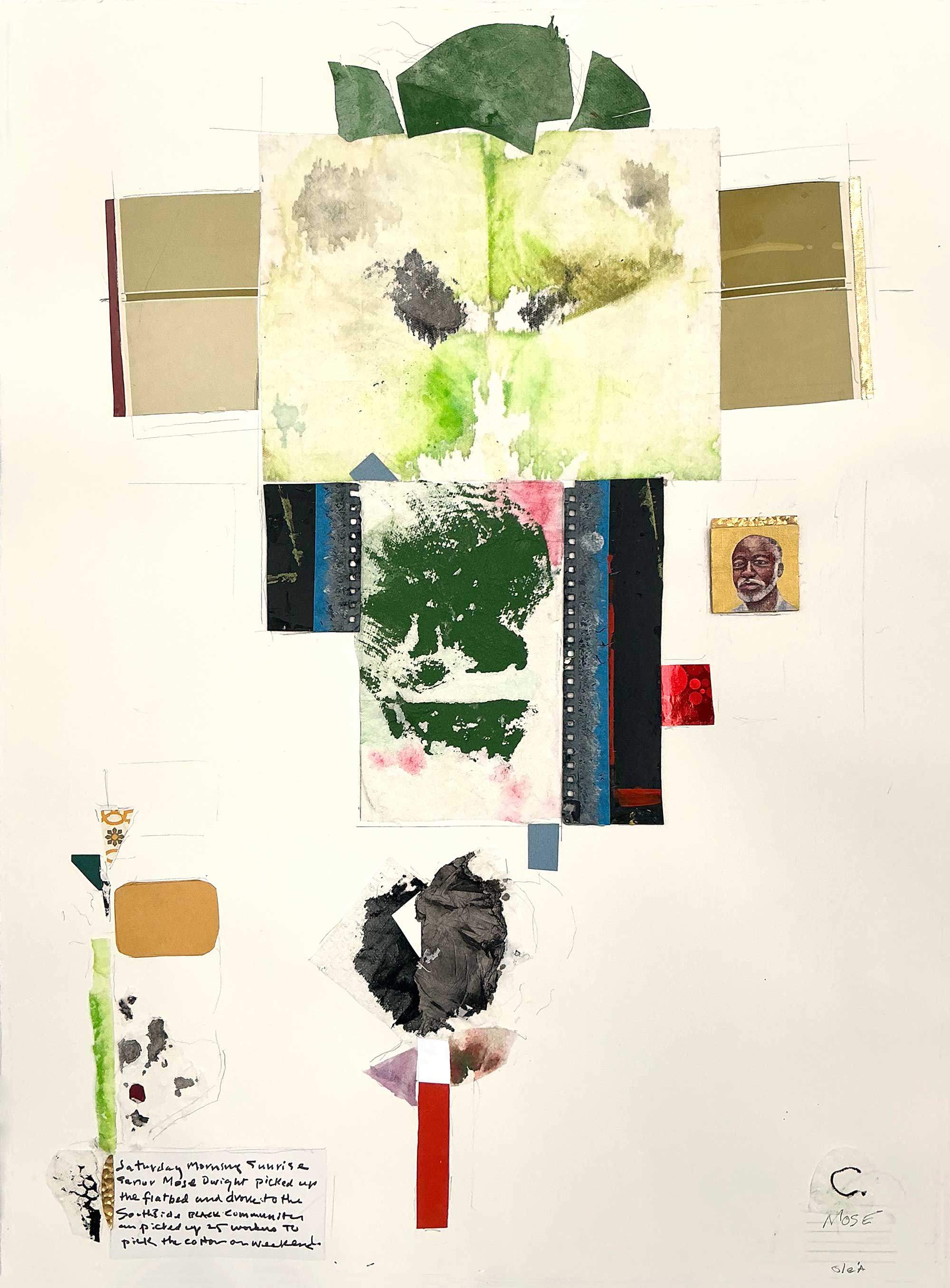

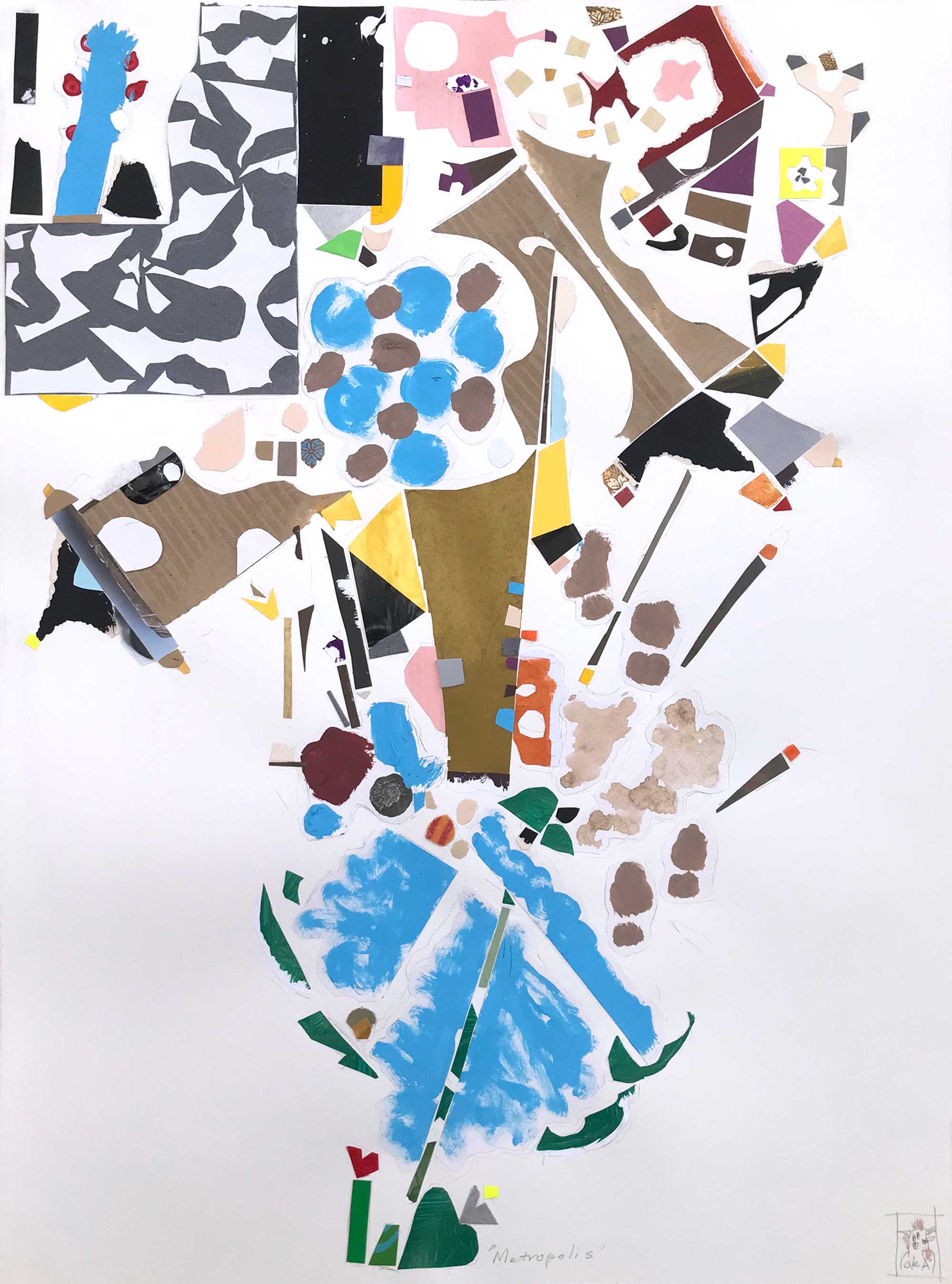


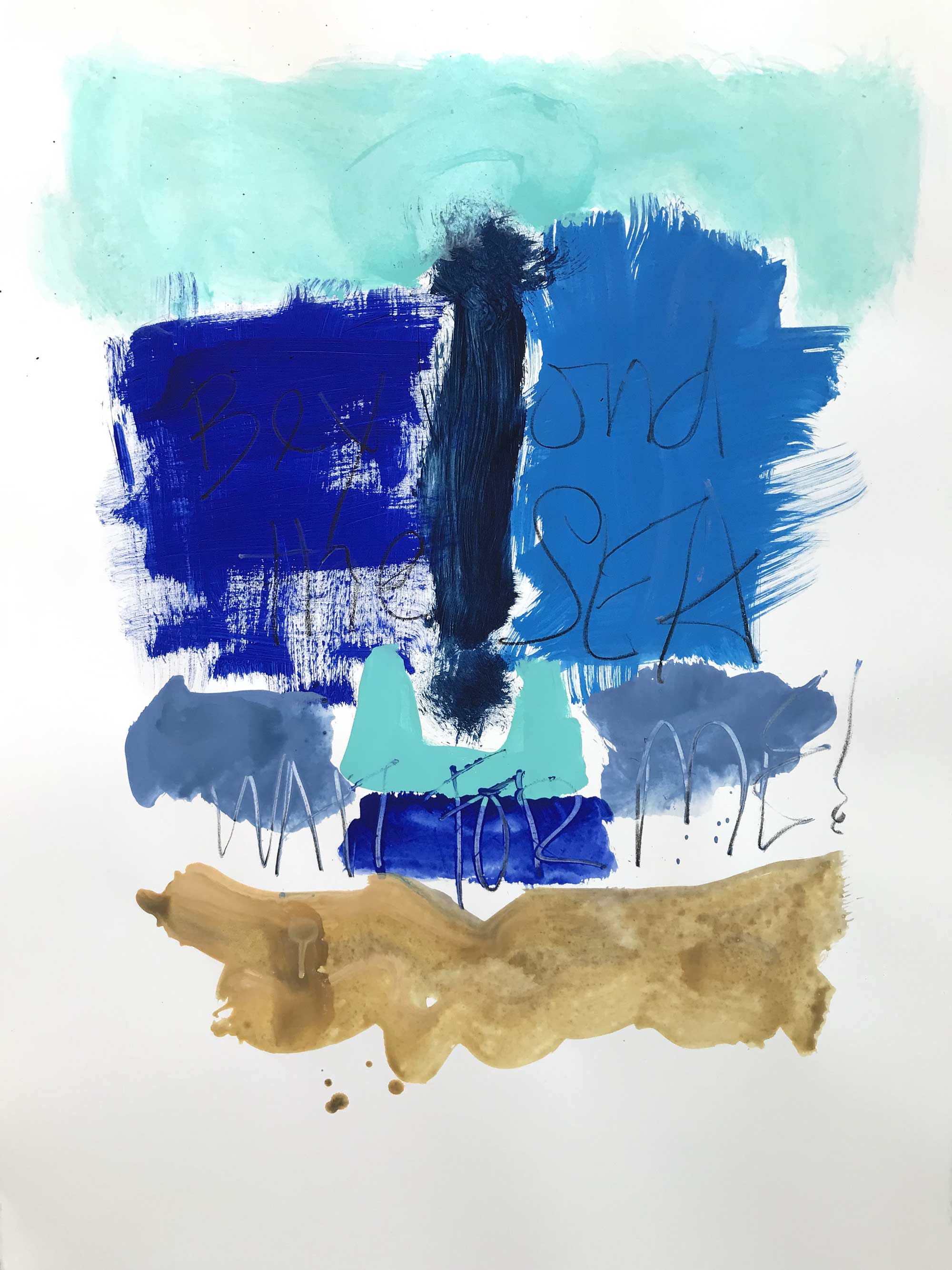
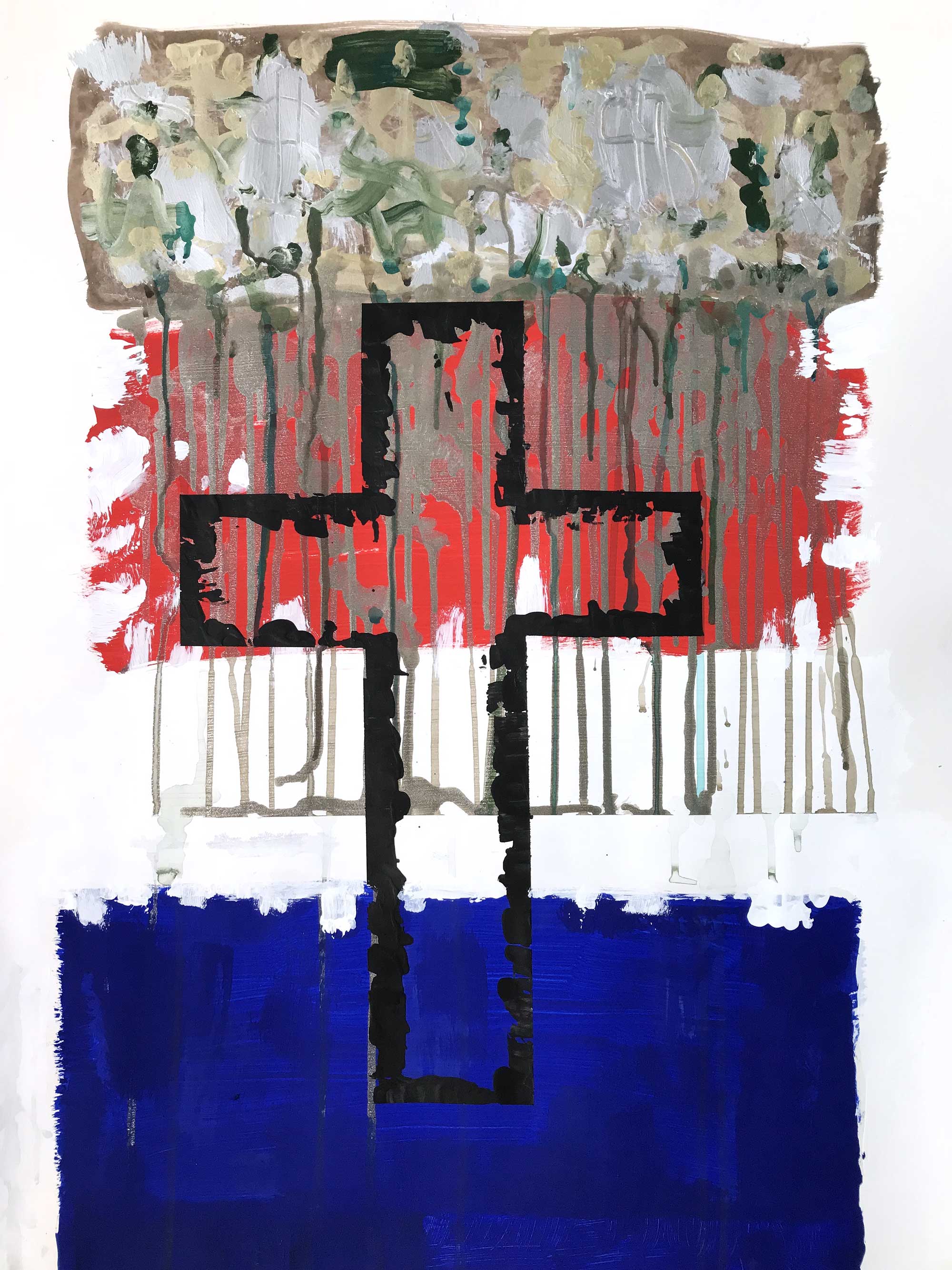



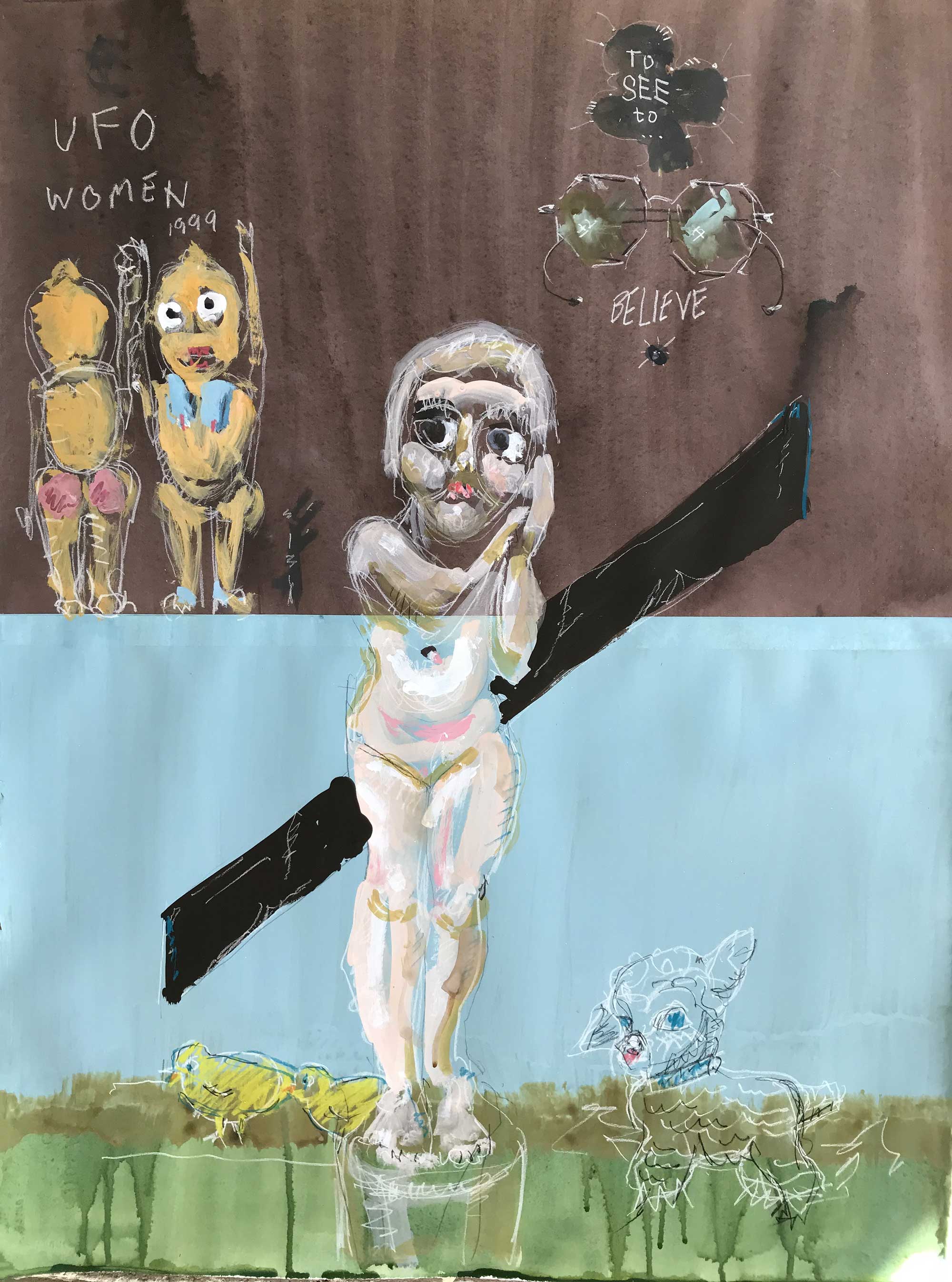
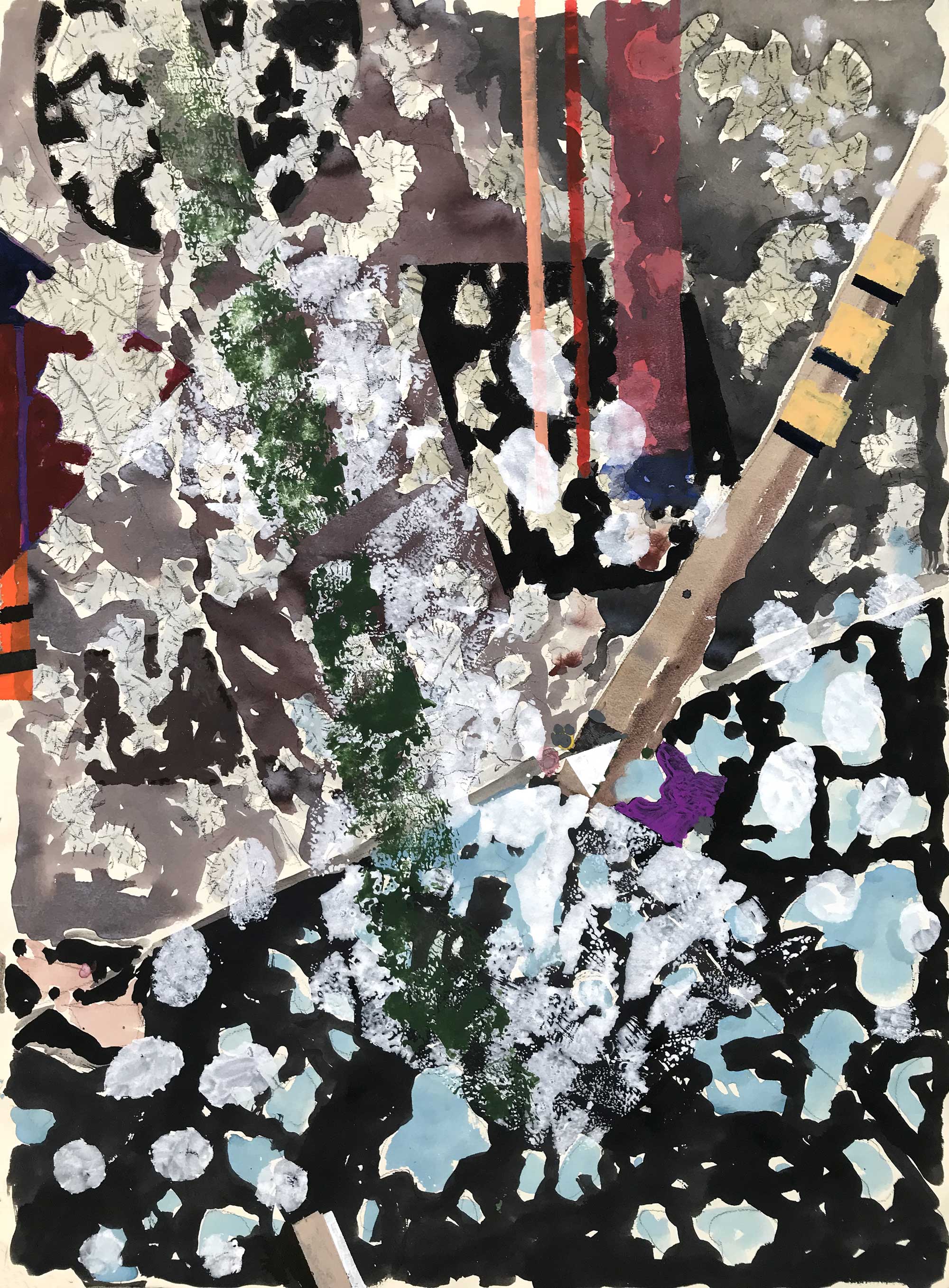

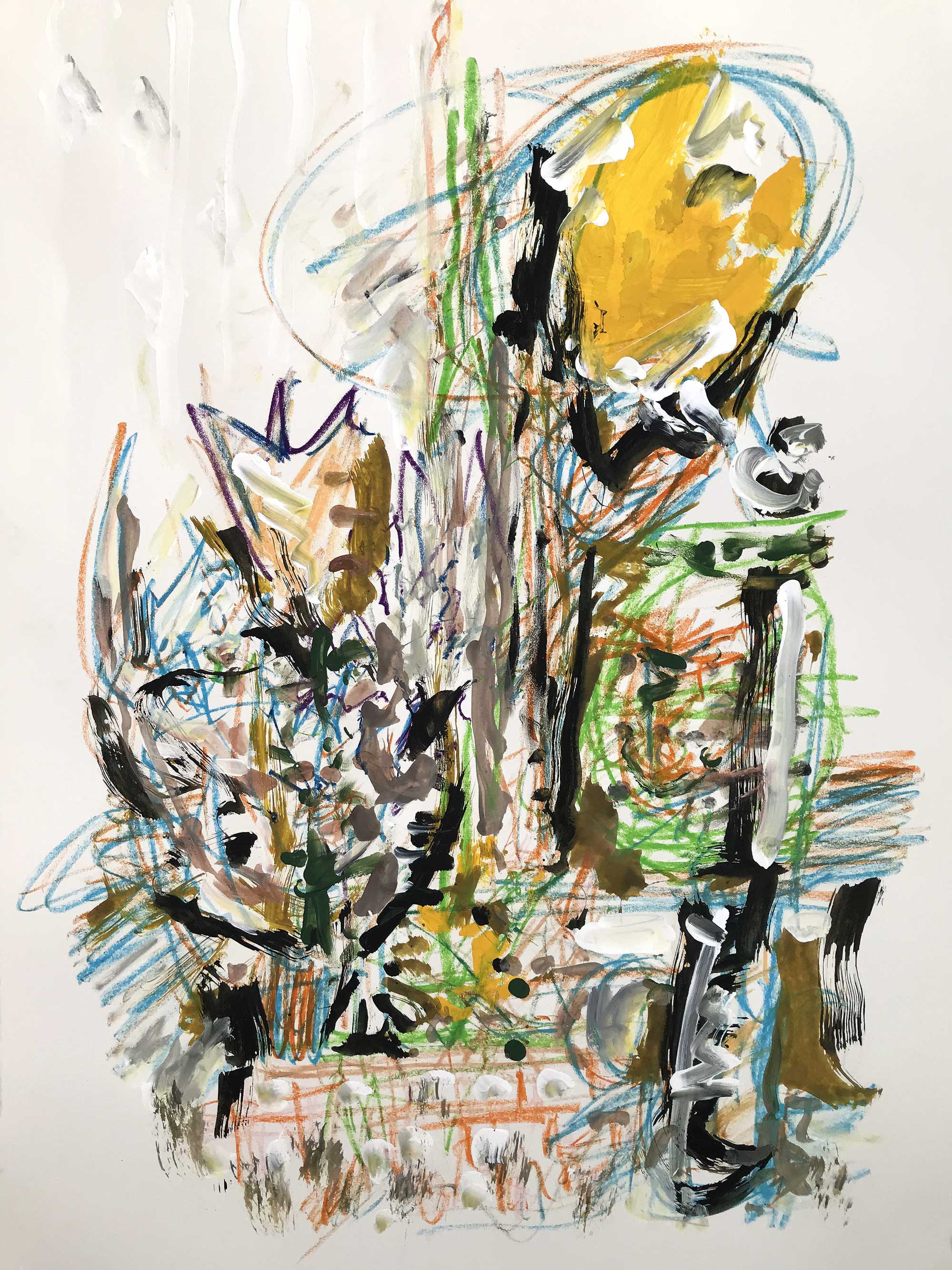



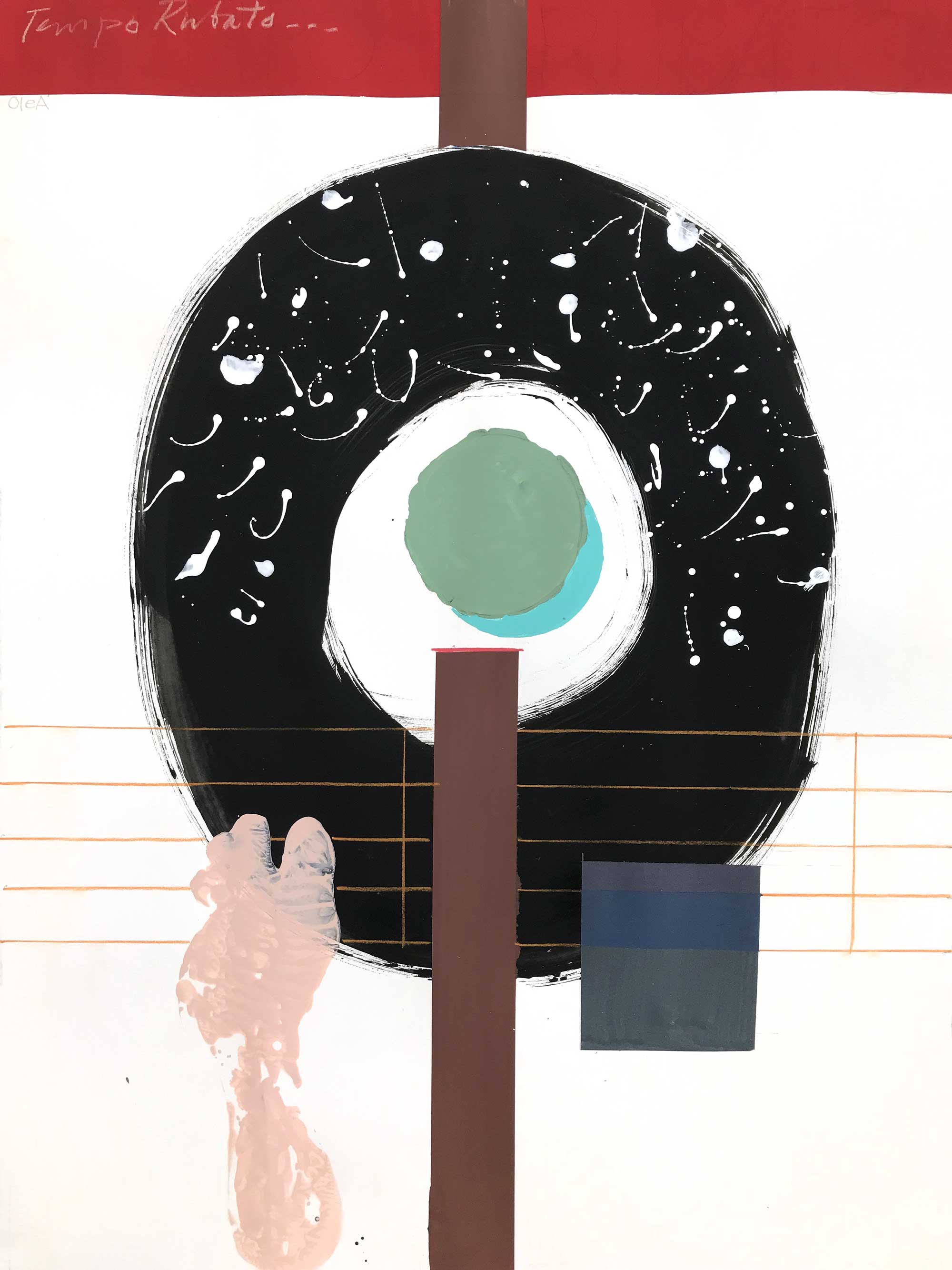
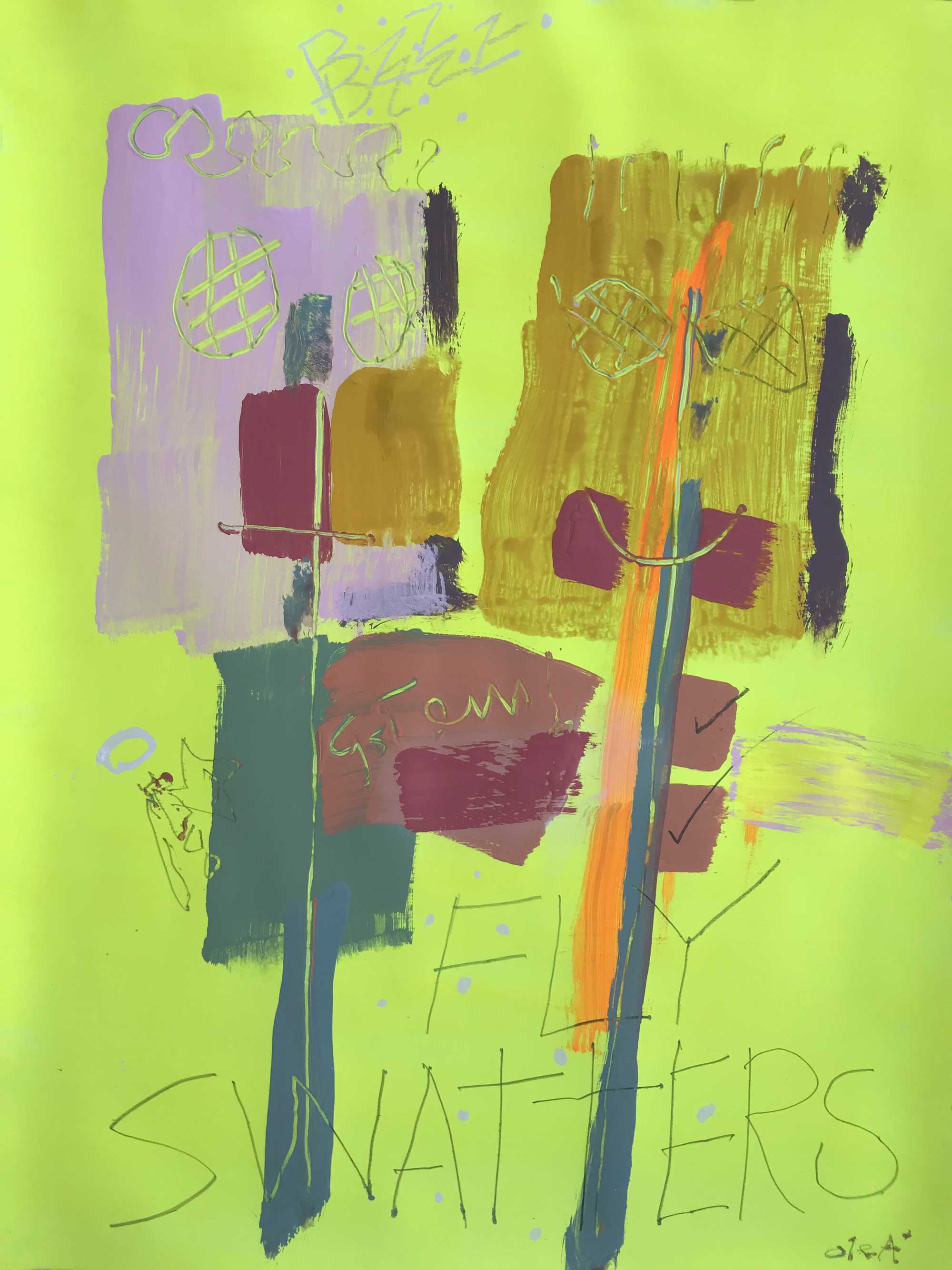



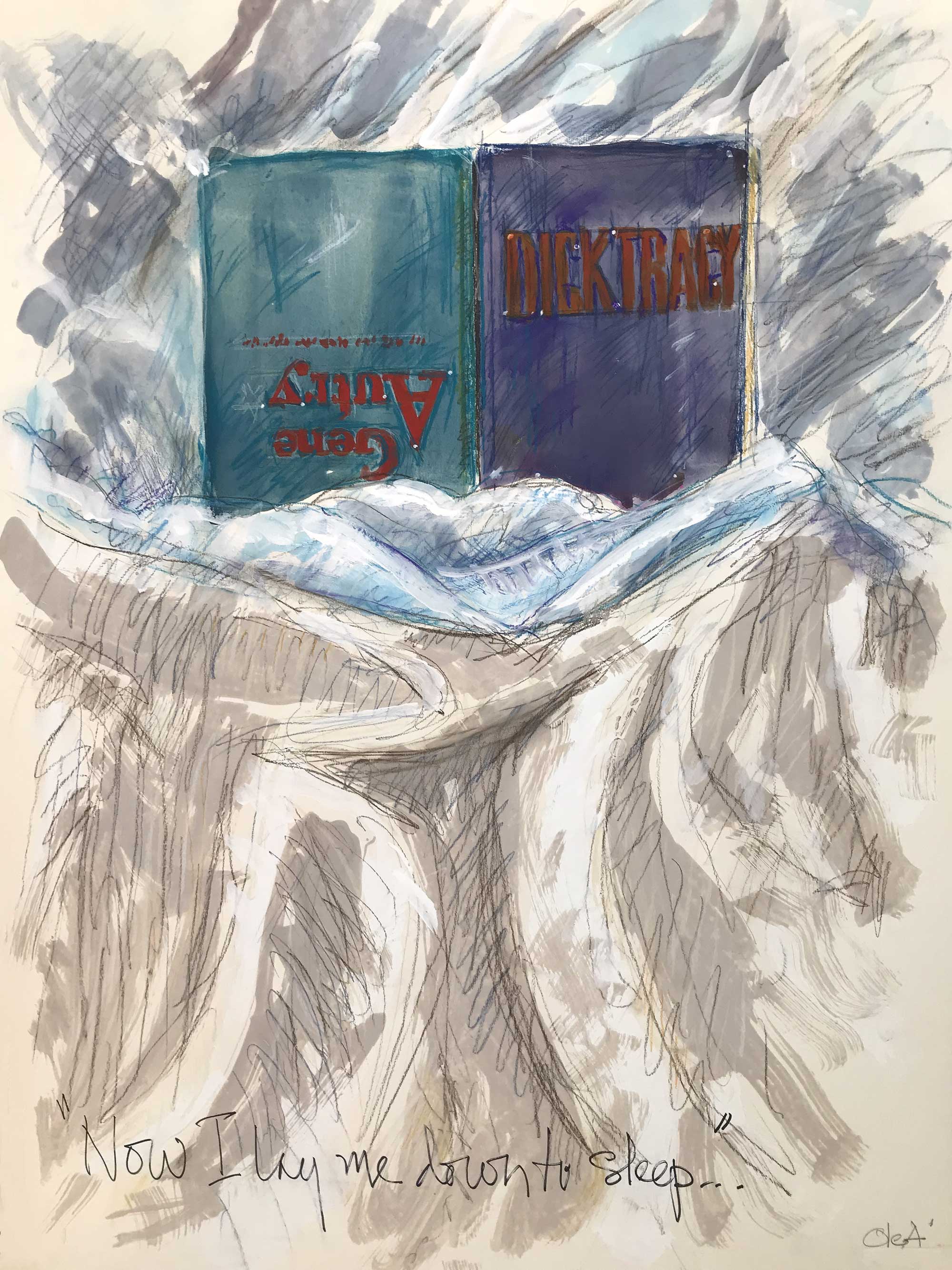
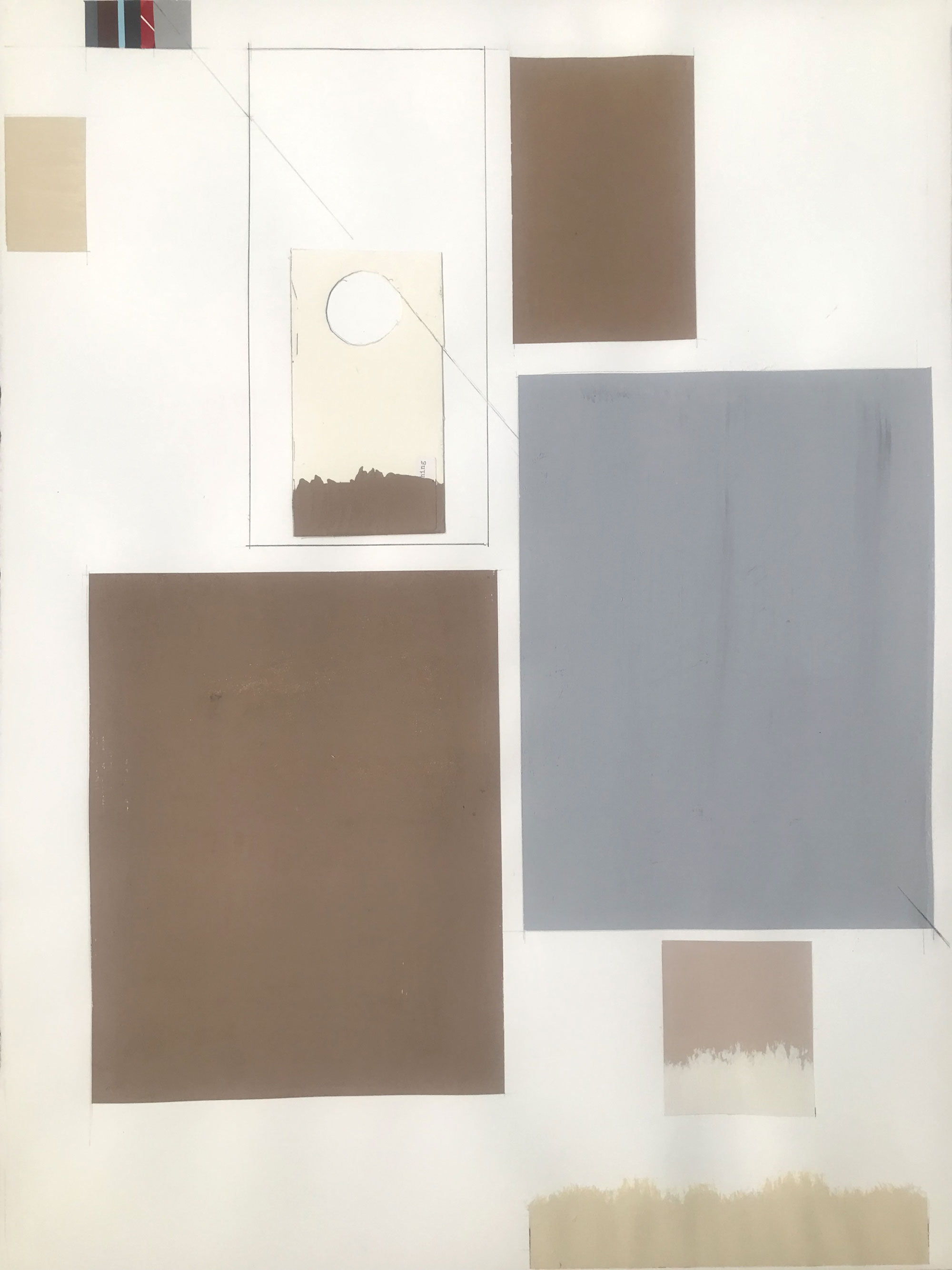
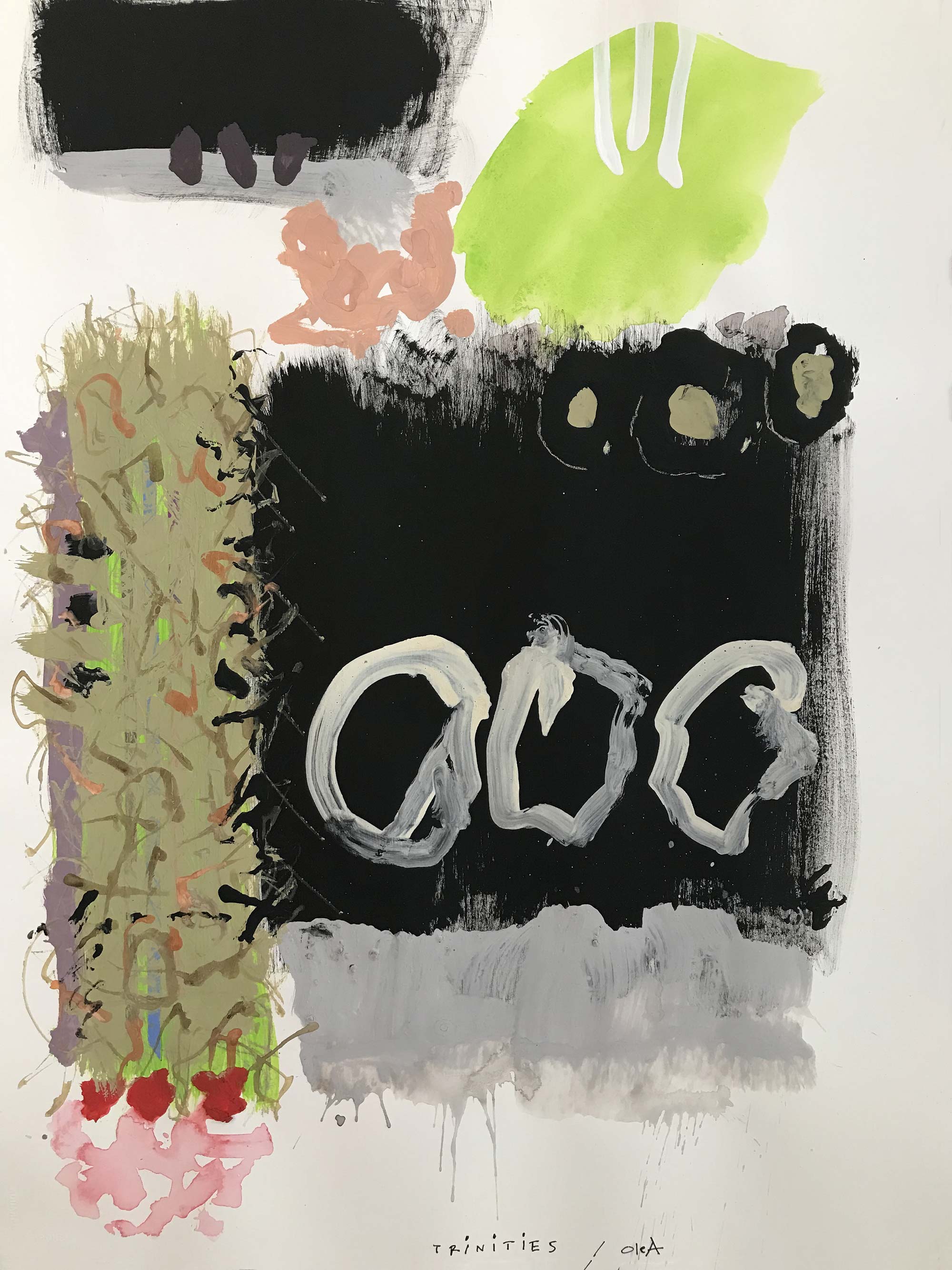
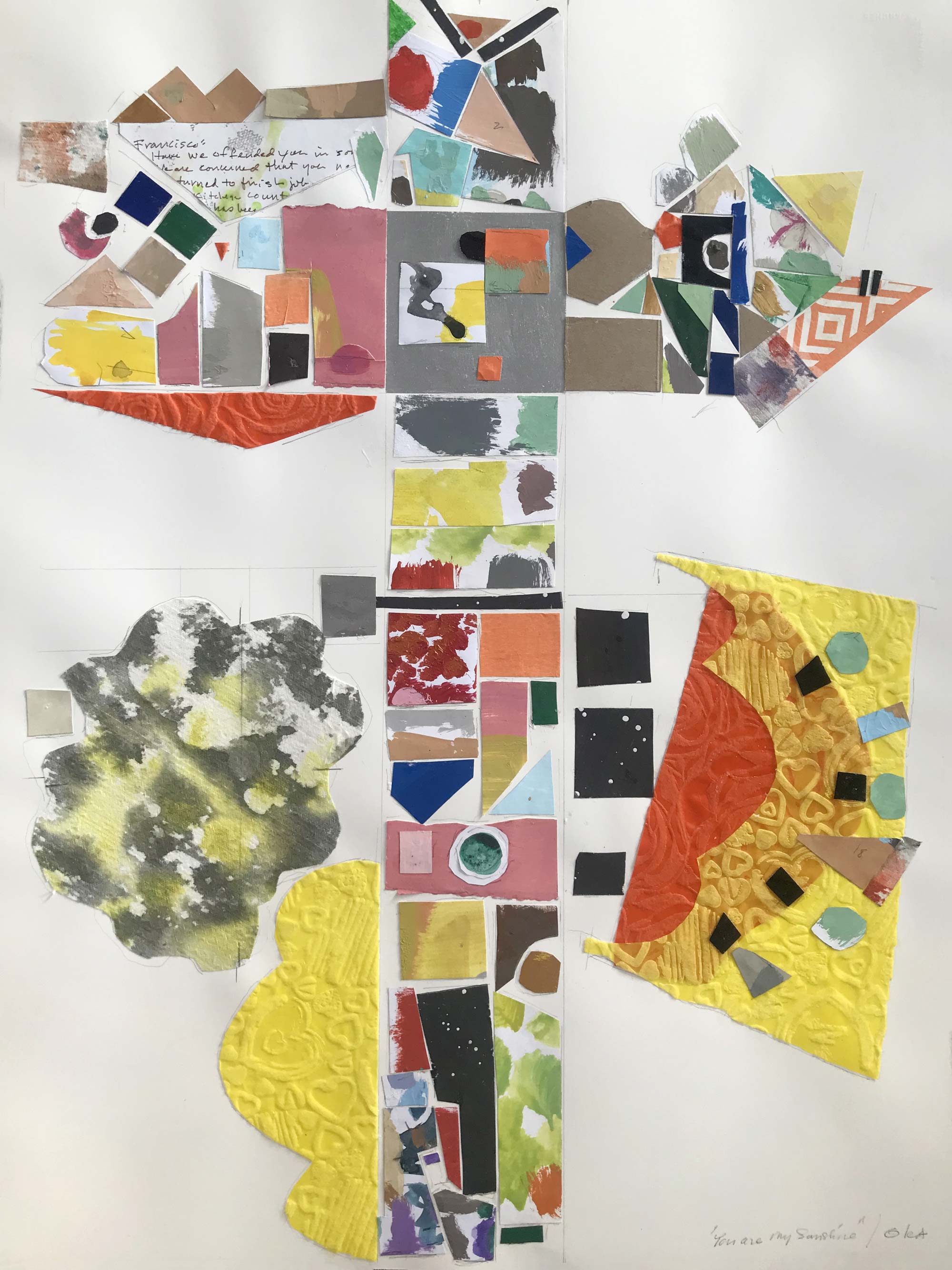



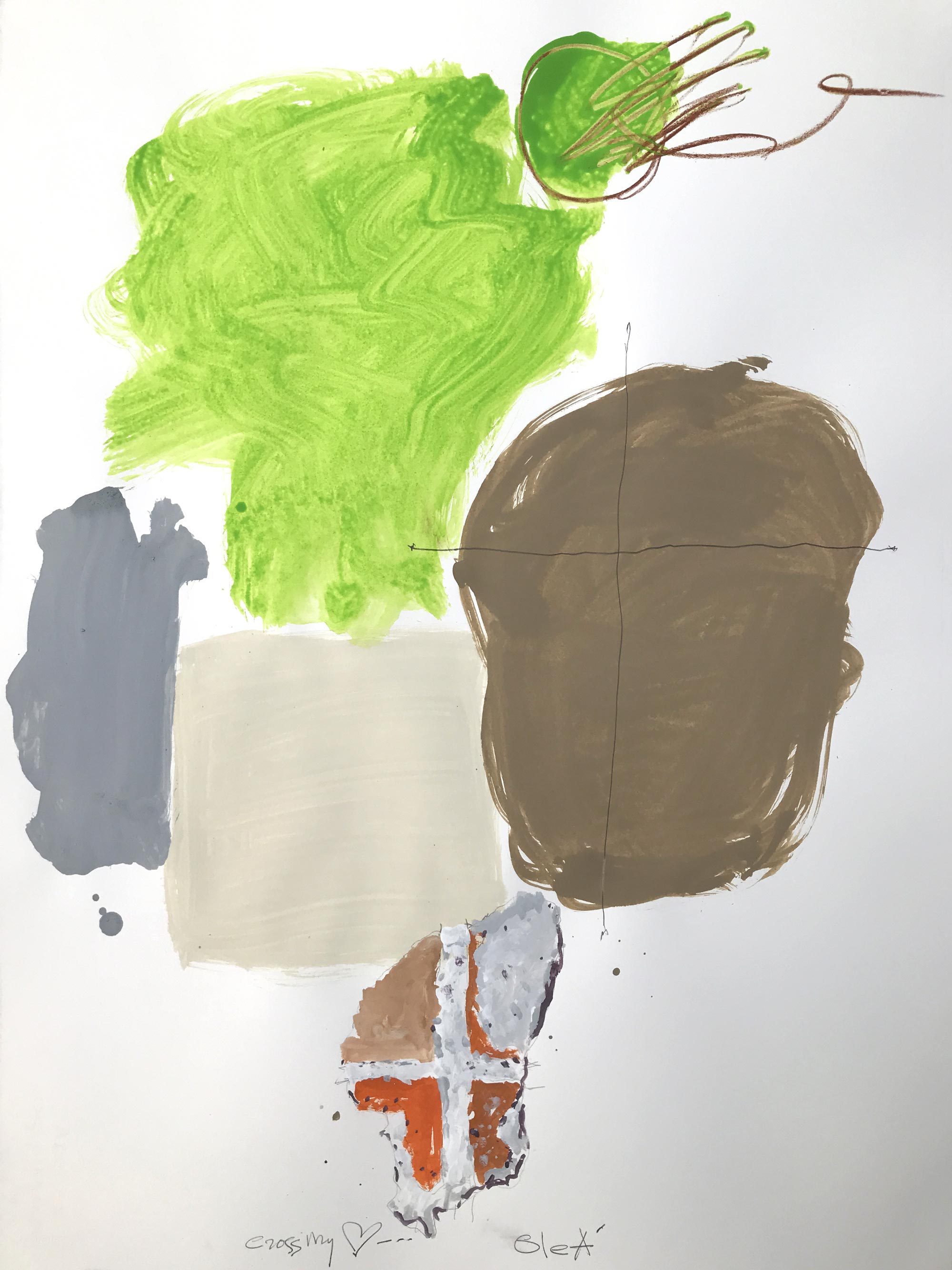
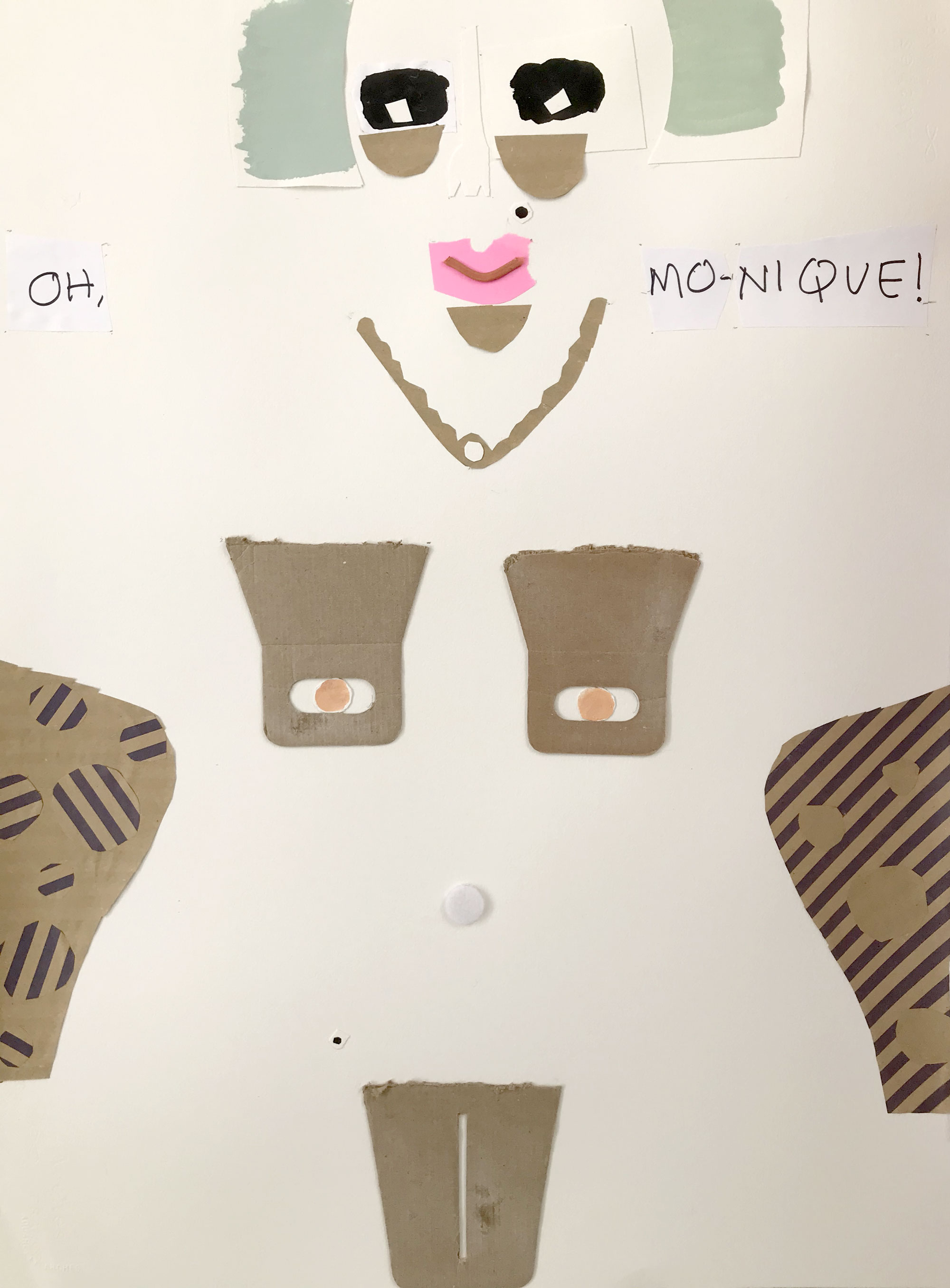


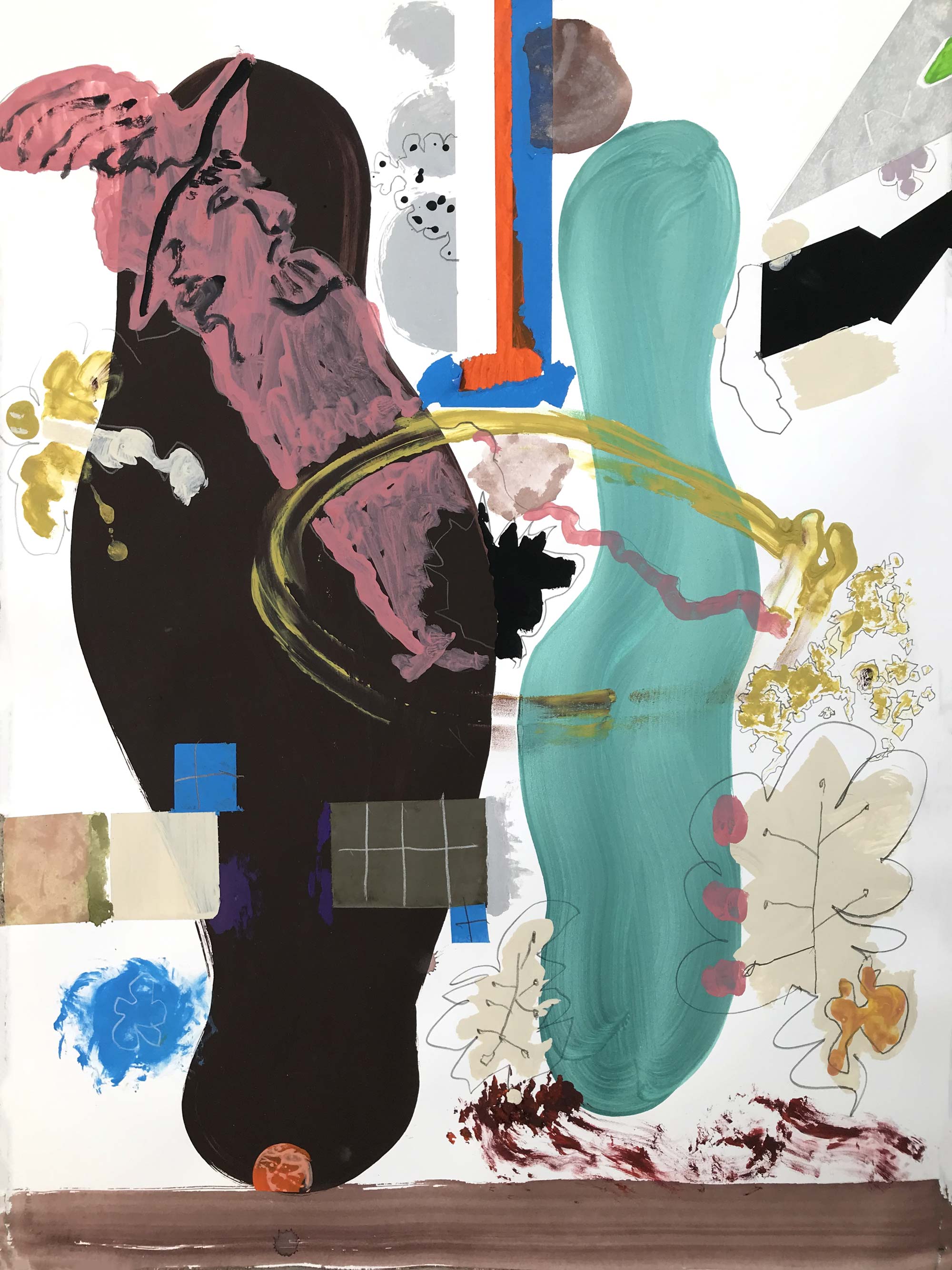
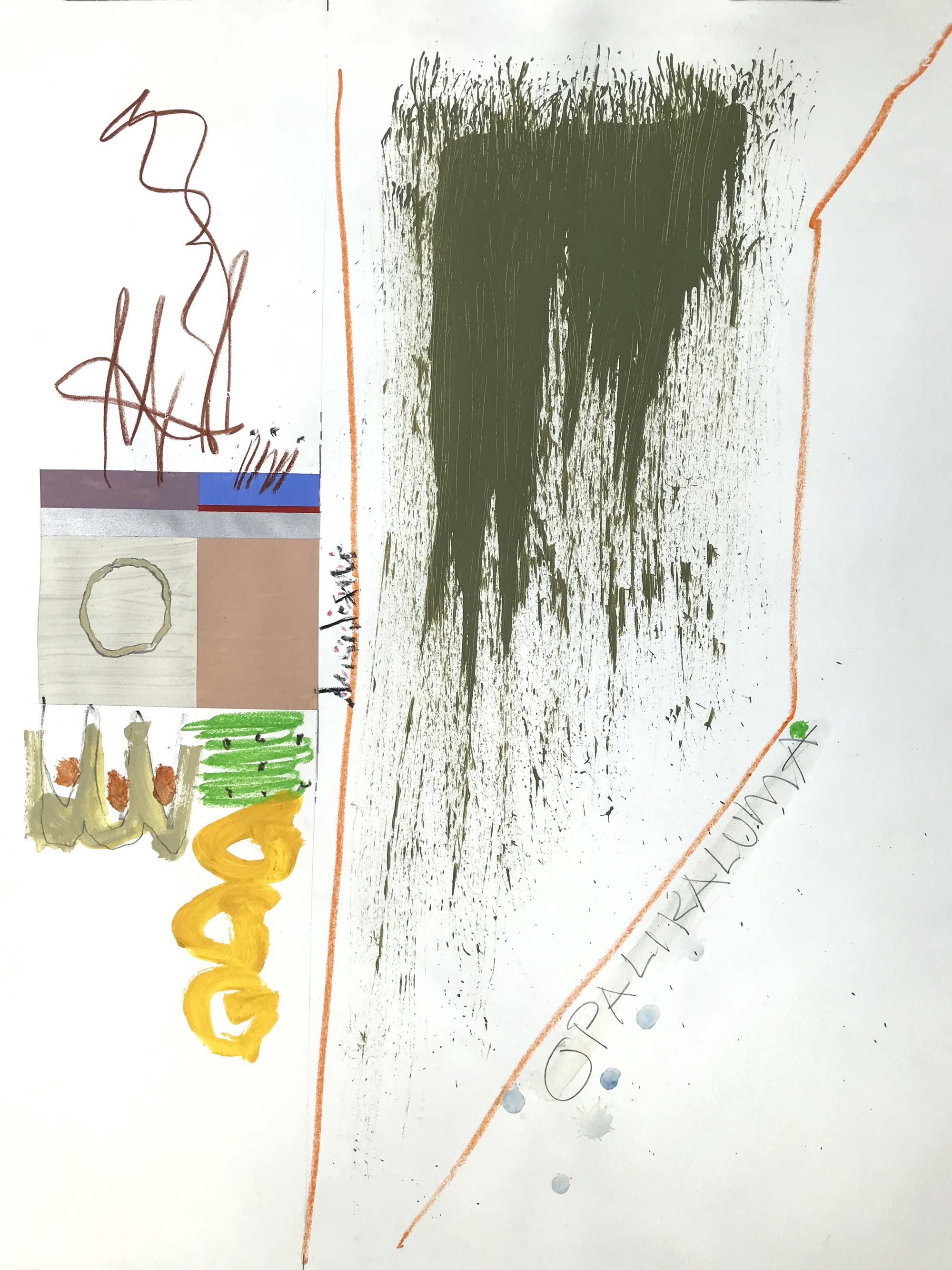


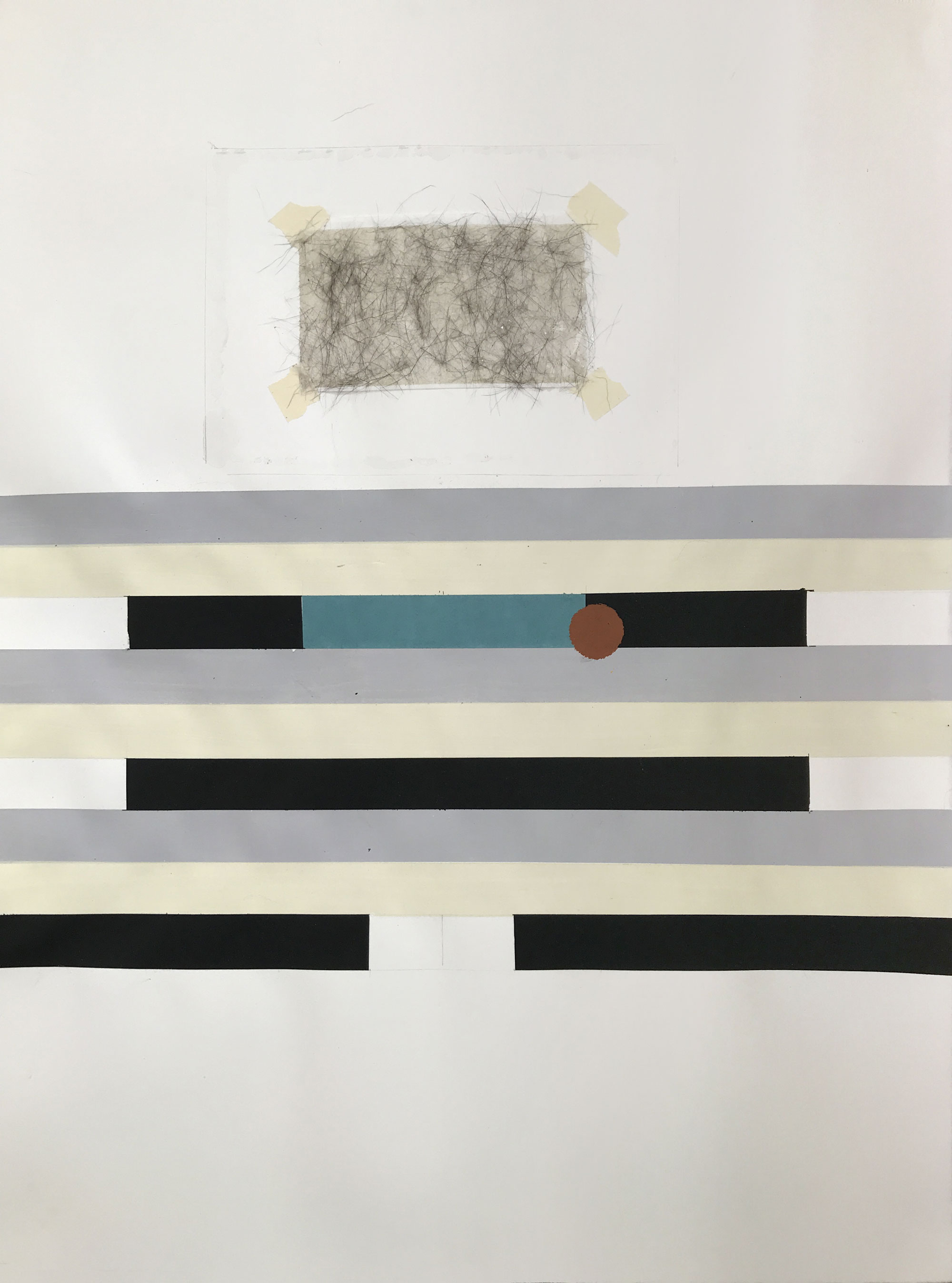

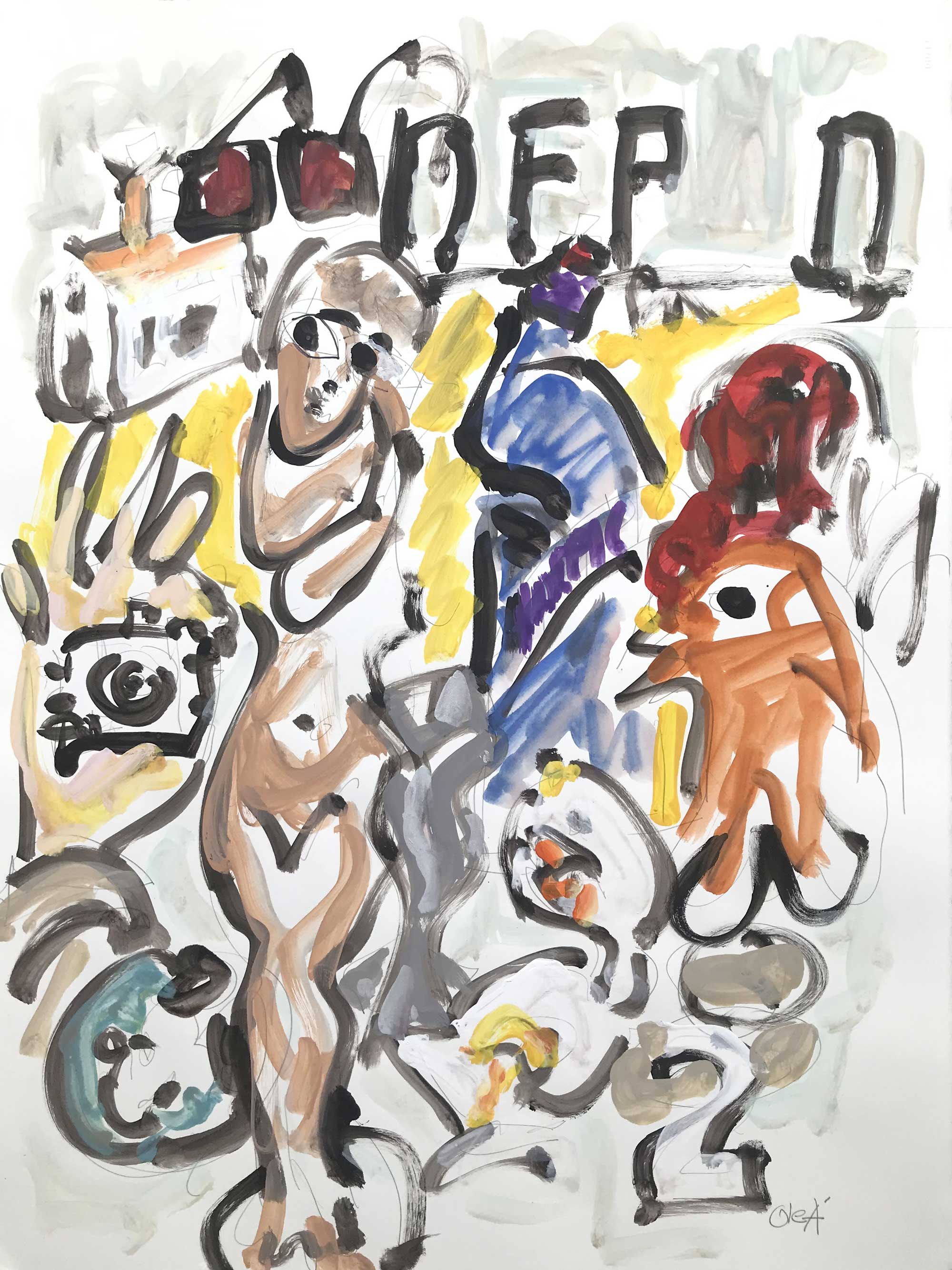




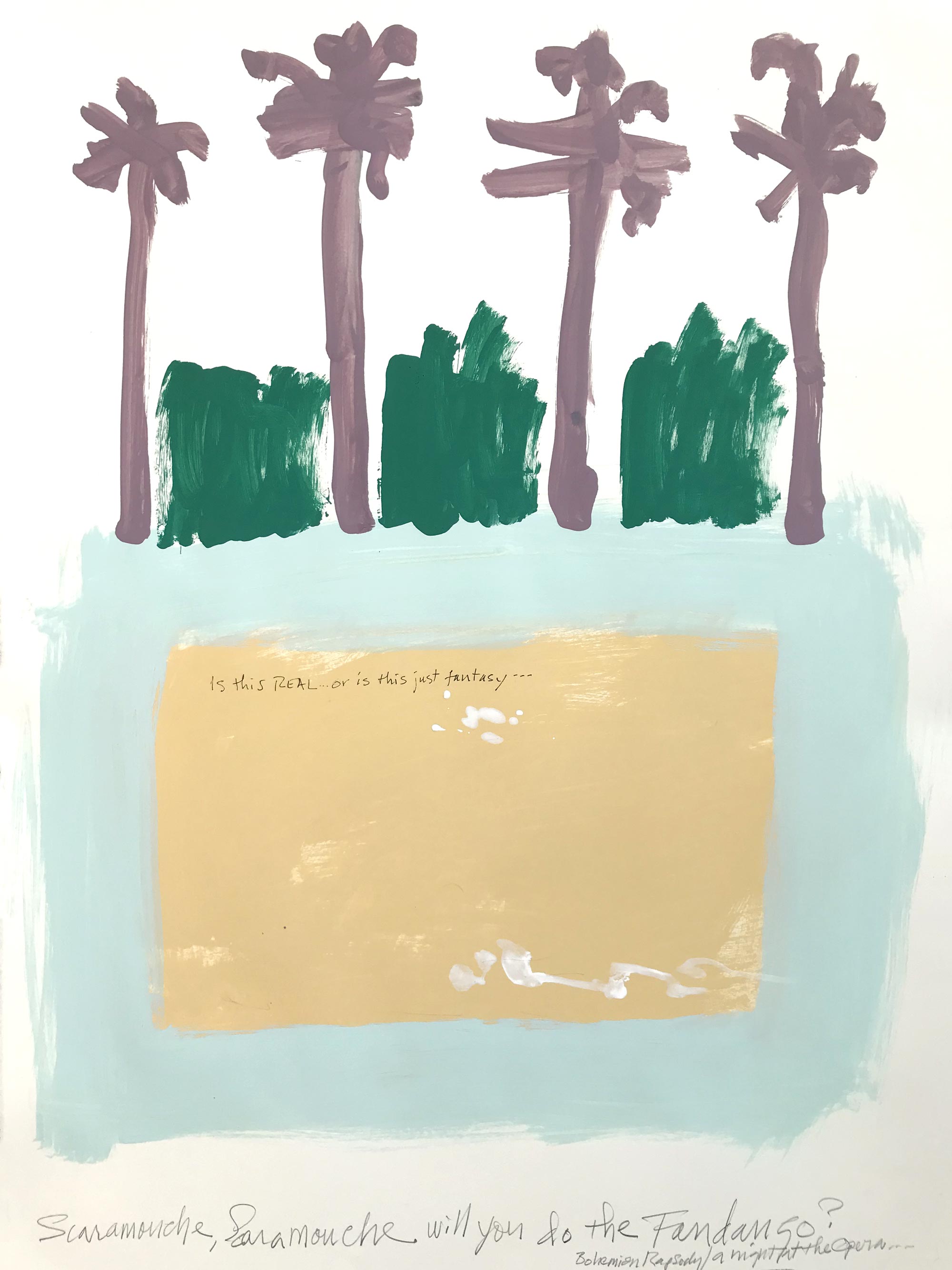
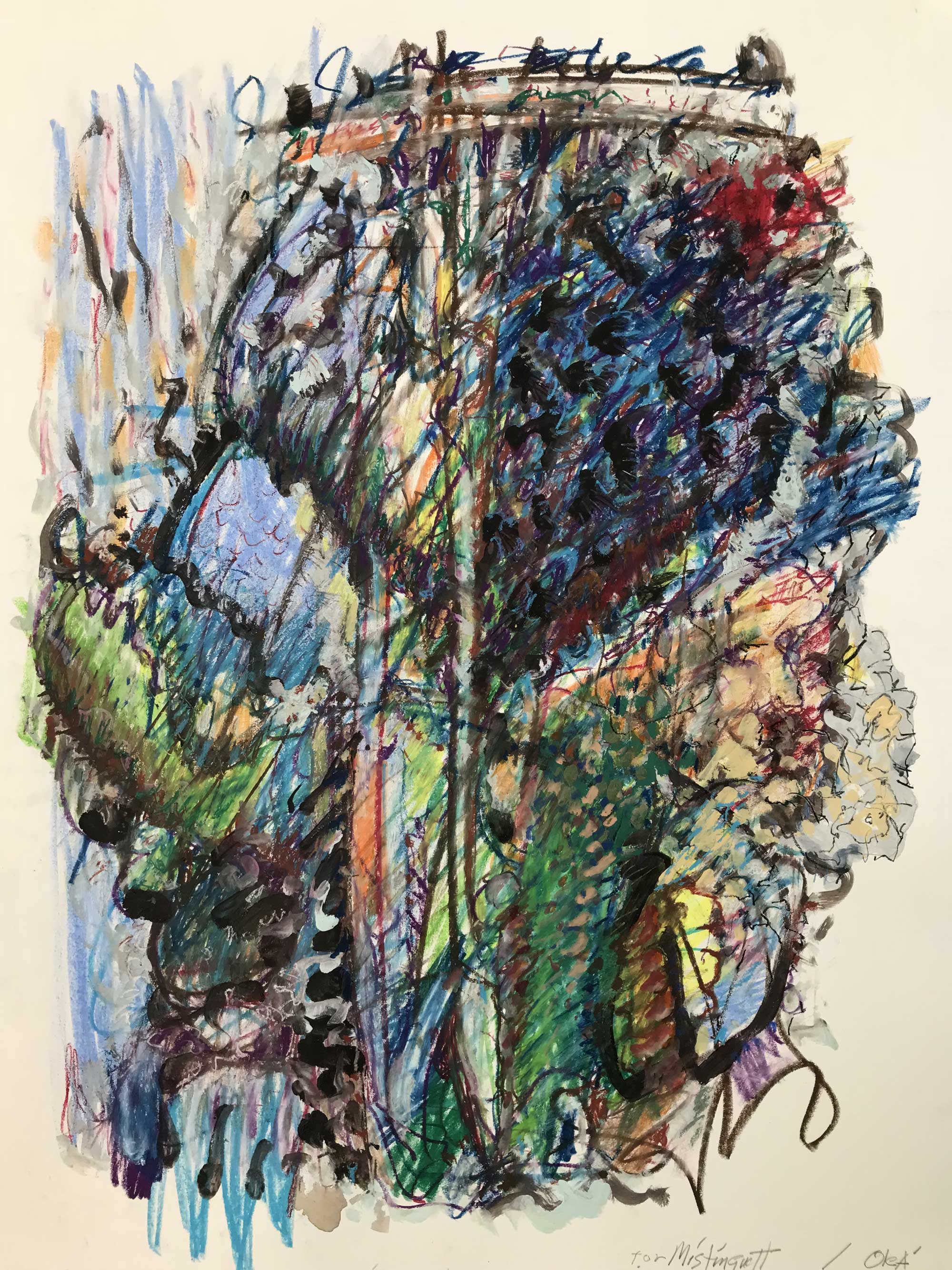





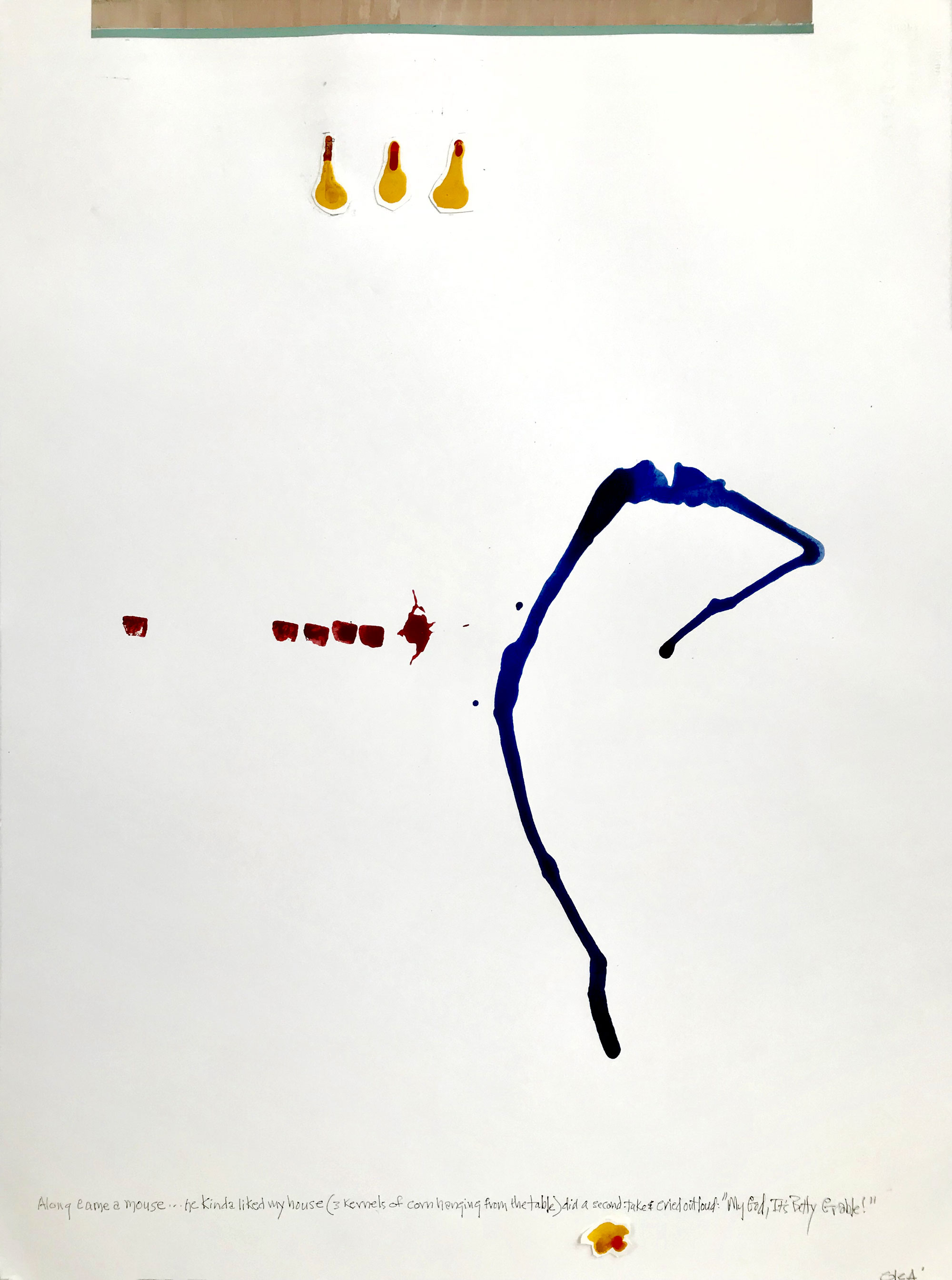
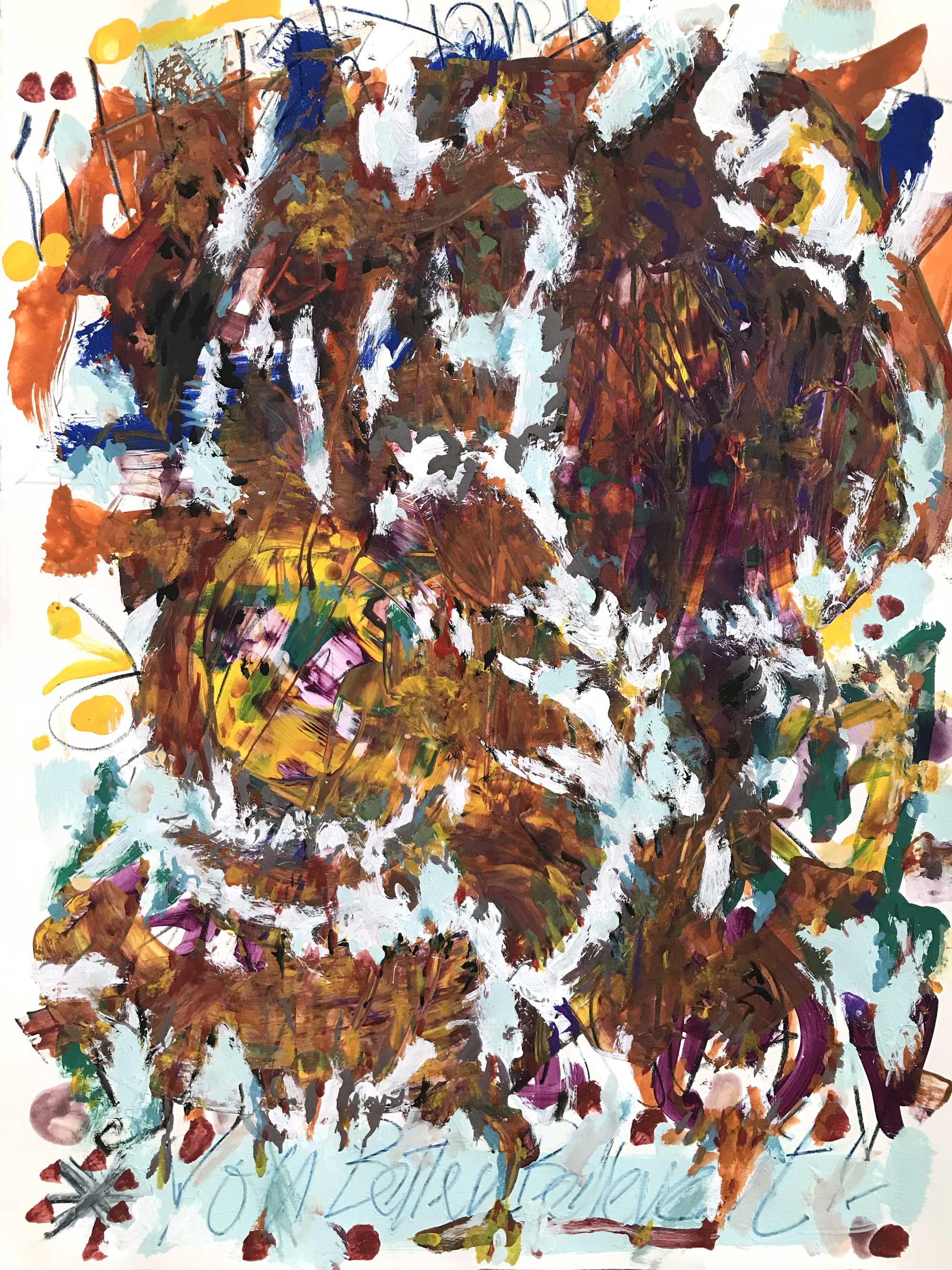



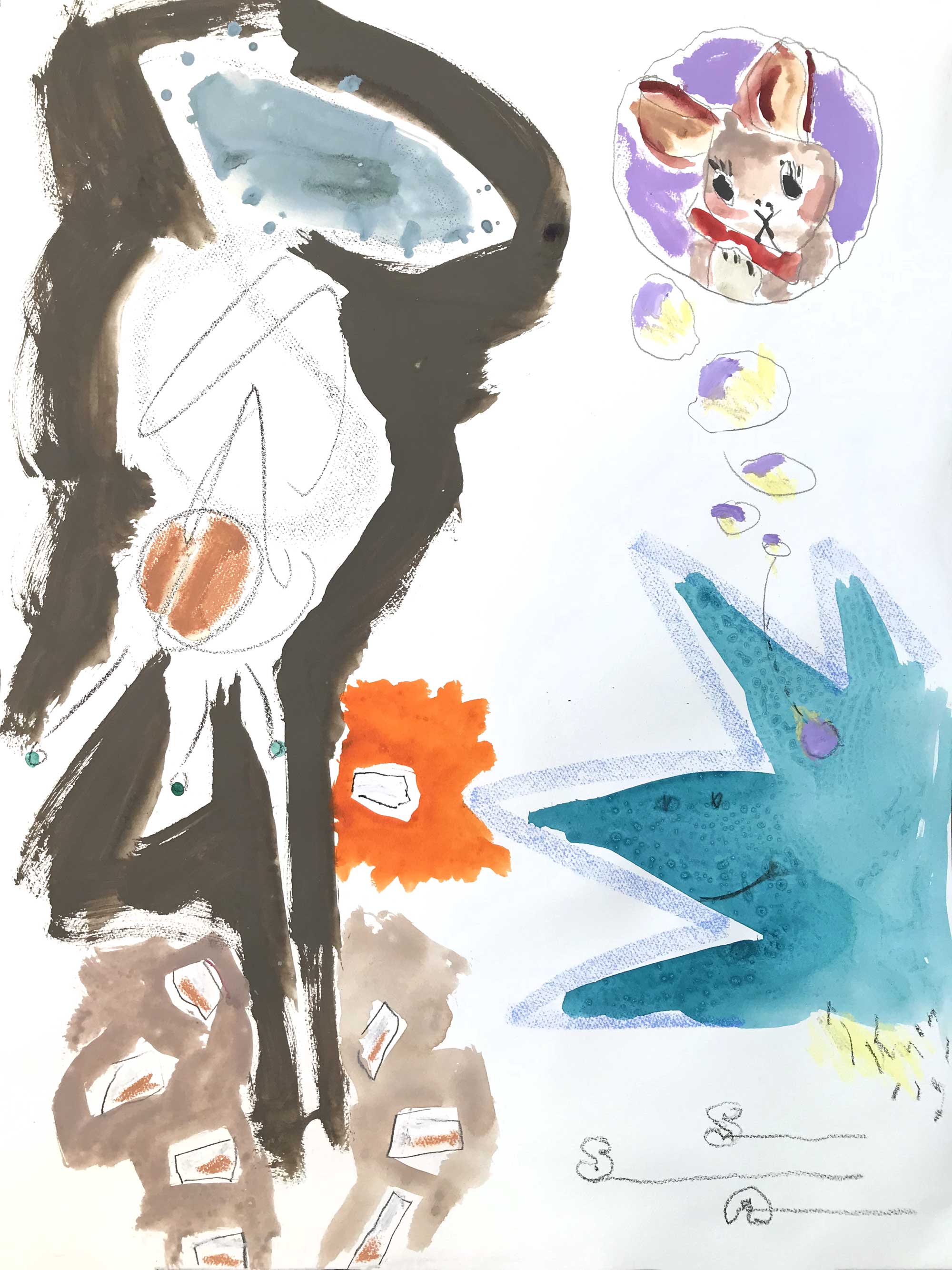



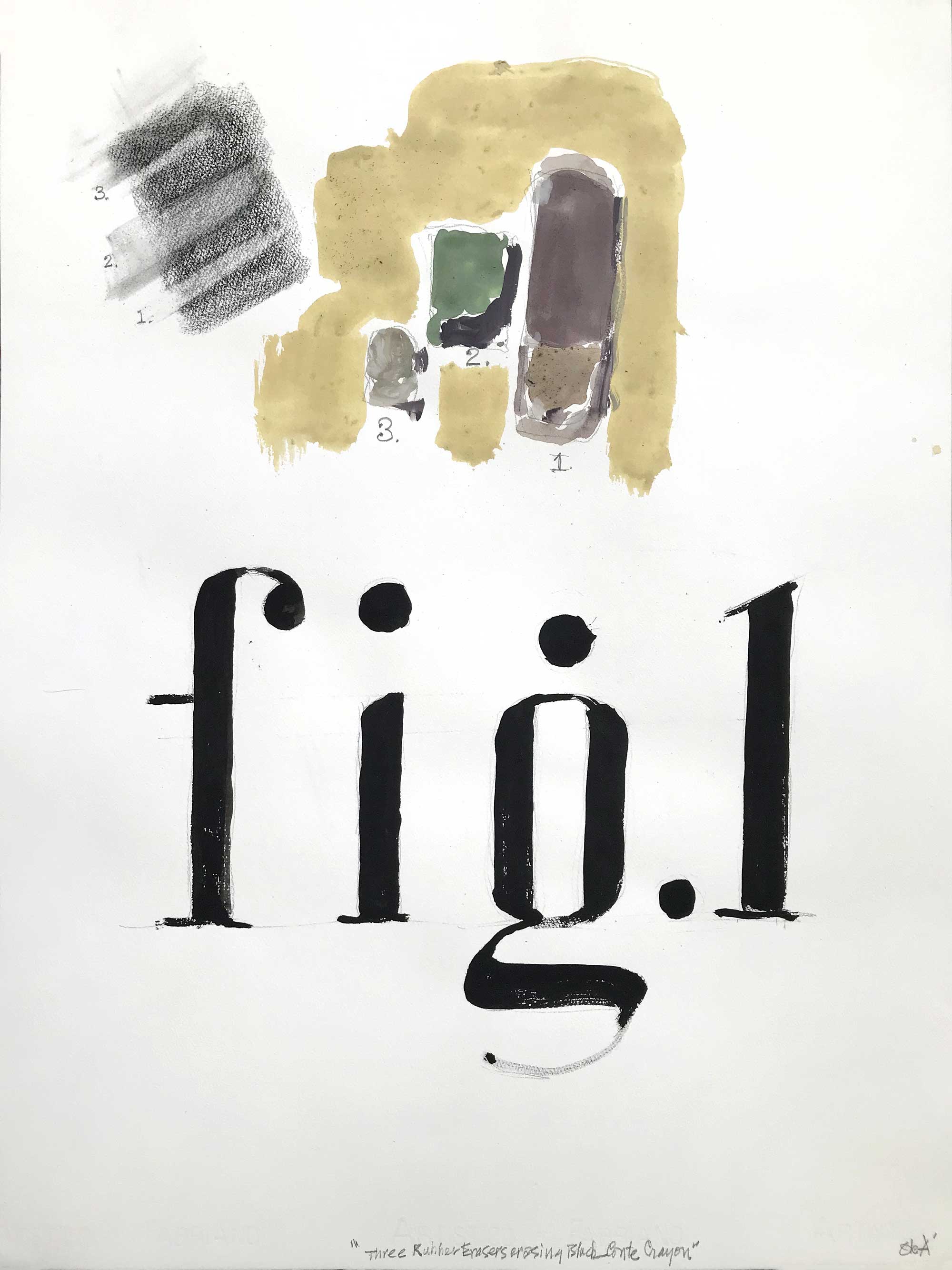





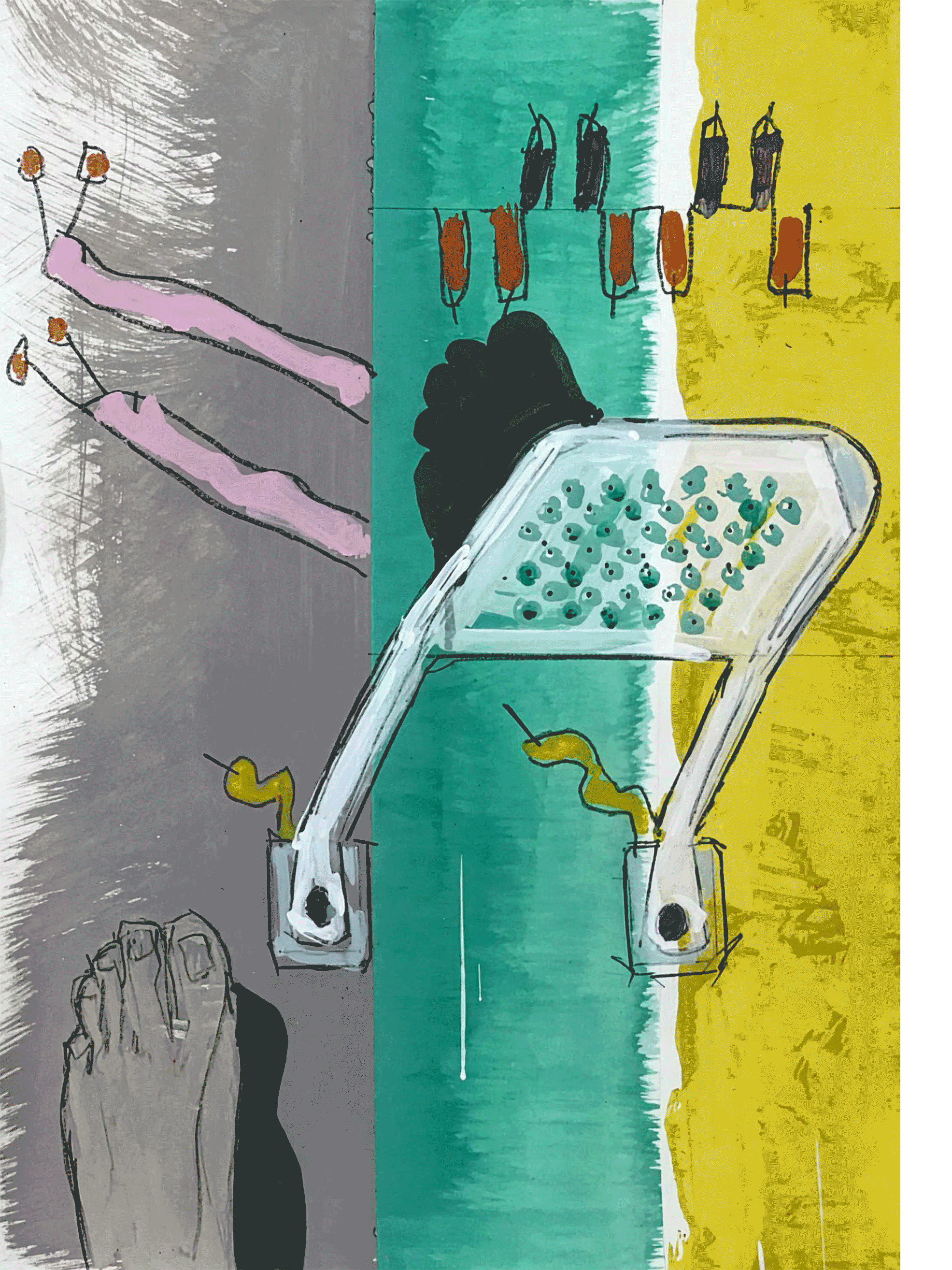







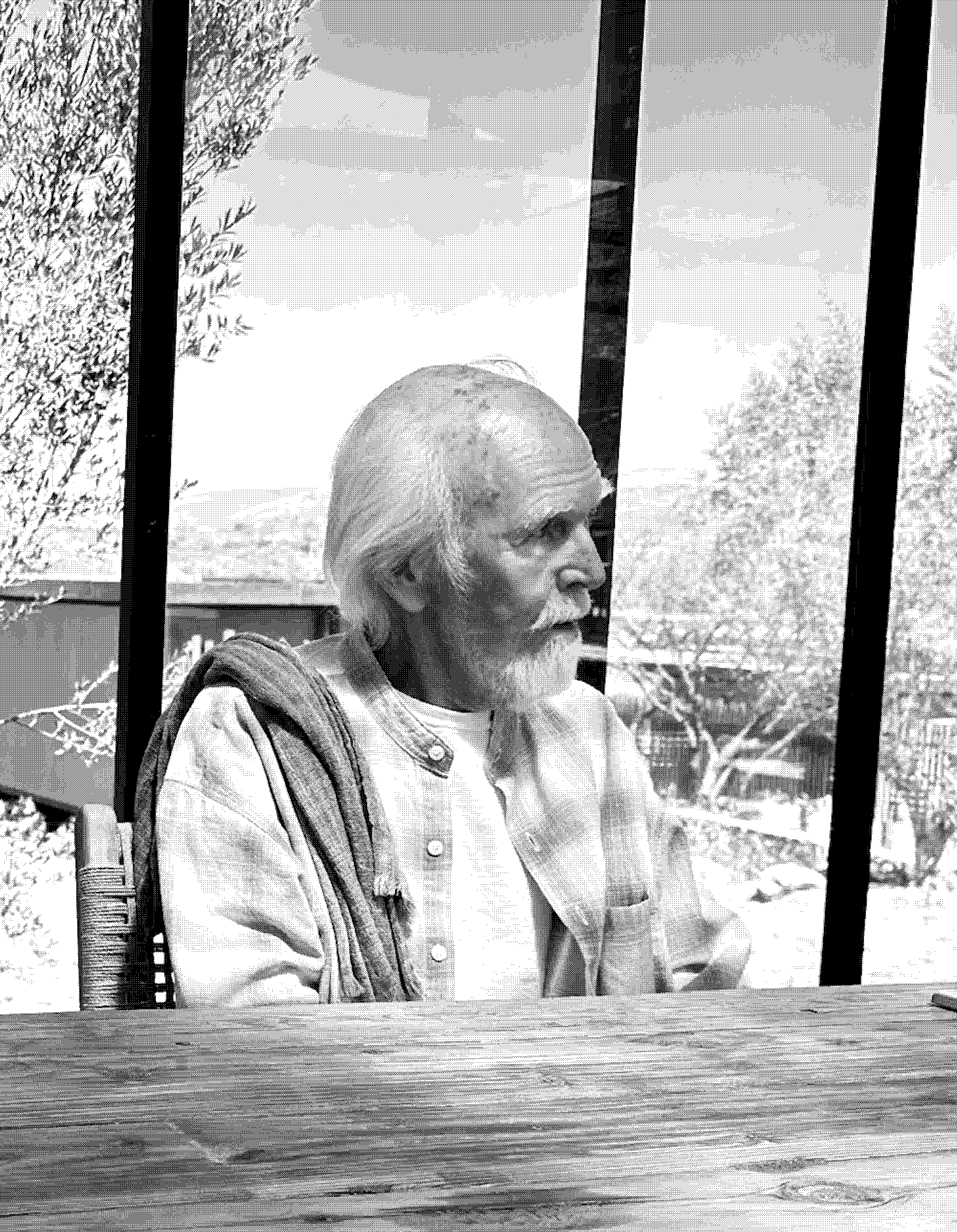

…one might say, starts with a push from his ten-year-older, mentor brother who shared his talent early on. A fine classical pianist, whose teacher was a “yankee” transplanted neighbor, turned him on to his grandmother’s historic upright Chickering grand in a very small Southern Appalachian, former-American-Indian, country town. Austin was so fortunate that his piano teacher was a recent NYC Juilliard School graduate. Ann took a couple of her students to neighboring cities of Chattanooga and Birmingham for a real Education in attending performances of internationally famous pianists, vocalists, symphony orchestras, operas, and ballet… But no art museums!

A career path was following Owen to study architecture at the state university, Auburn, where in his junior year he discovered ART in a special class and changed his major to score an undergrad degree in art and design… and commence on his masters to finish as Auburn’s second MFA in Art/Design; and to teach a class in his 2nd year in freehand drawing to architecture students. Note the oil painting in his 1960 thesis that showed his ability to make form in the advanced manner of the time.
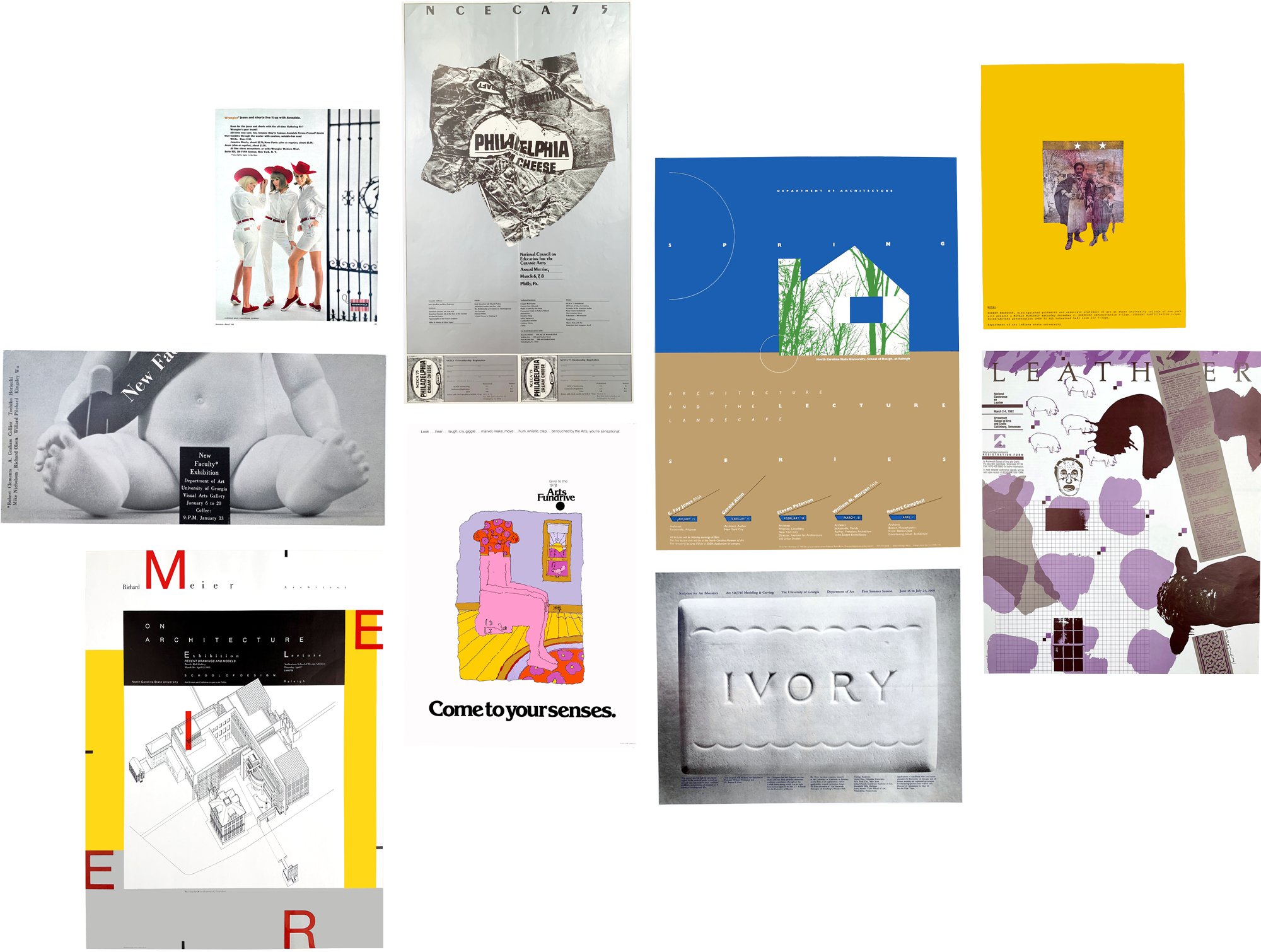
Near the end of the military draft finds him for two years in the French countryside sharing an evening art studio with a former Dutch assistant of JEAN Fautrier, a French artist having a long Modernist reputation at the time. After discharge, Austin returned to school to complete his degree of a MFA in art/design, married another Auburn grad and worked in a NYC graphic design job with Norman Affiliates Ltd.. Following this immersion in practice, Austin was recruited by a Birmingham agency to serve as the art director of Avondale Mills, the largest textile mill in USA: Monthly NYC fashion photo shoots “Come live with me in Avondale” were supervised with the clothes designer and designed by Austin to appear in fashion and design magazines. After a few years of practice Austin was honored with the Best of Show award of the Birmingham Art Directors Annual Exhibition. Thereafter, an academic trail was followed with university teaching posts at the University of Georgia, Indiana State, and NC State, ending in 1999 retirement as Professor Emeritus of Design.
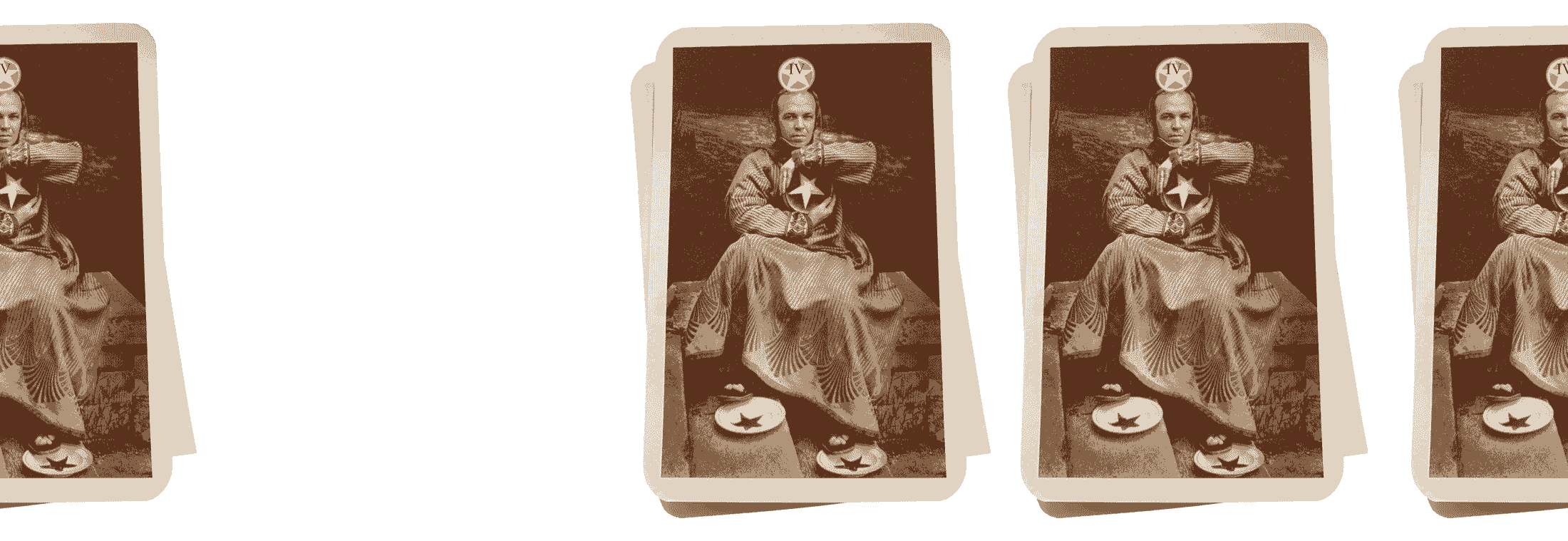
It should be noted that beginning in the 70s Austin was introduced by his UGA colleague Robert Ebendorf, past President of Society of North American Goldsmiths (SNAG), as a summer session instructor at Penland School of Crafts where his knowledge and appreciation of crafts grew tremendously throughout the following decades. Note Bea Nettles’s photo portrait of Austin in her first publication of the famous Mountain Dream Tarot in the 70s. Another incredible crafts related experience, in-between Indiana and NC teaching jobs, was in Winston-Salem where Lida, Austin’s wife, was director of Piedmont Craftsman, with eleven southeastern state members. He worked as a freelance graphic designer and gained many crafts colleagues and lifelong friends (such as Ron and Tamara Probst). His work gained attention of NC School of Design and he was offered a full-time position.

In his teaching career Austin was usually furnished an art studio and continued his art practice, along with his new fascination with collecting and INSTALLATION as showcased in several museum and university exhibitions: two NC Museum of Art’s NC Artists Exhibitions; a major installation at Davidson College; and a Donald Judd, Marfa Texas, Locker Plant installation.



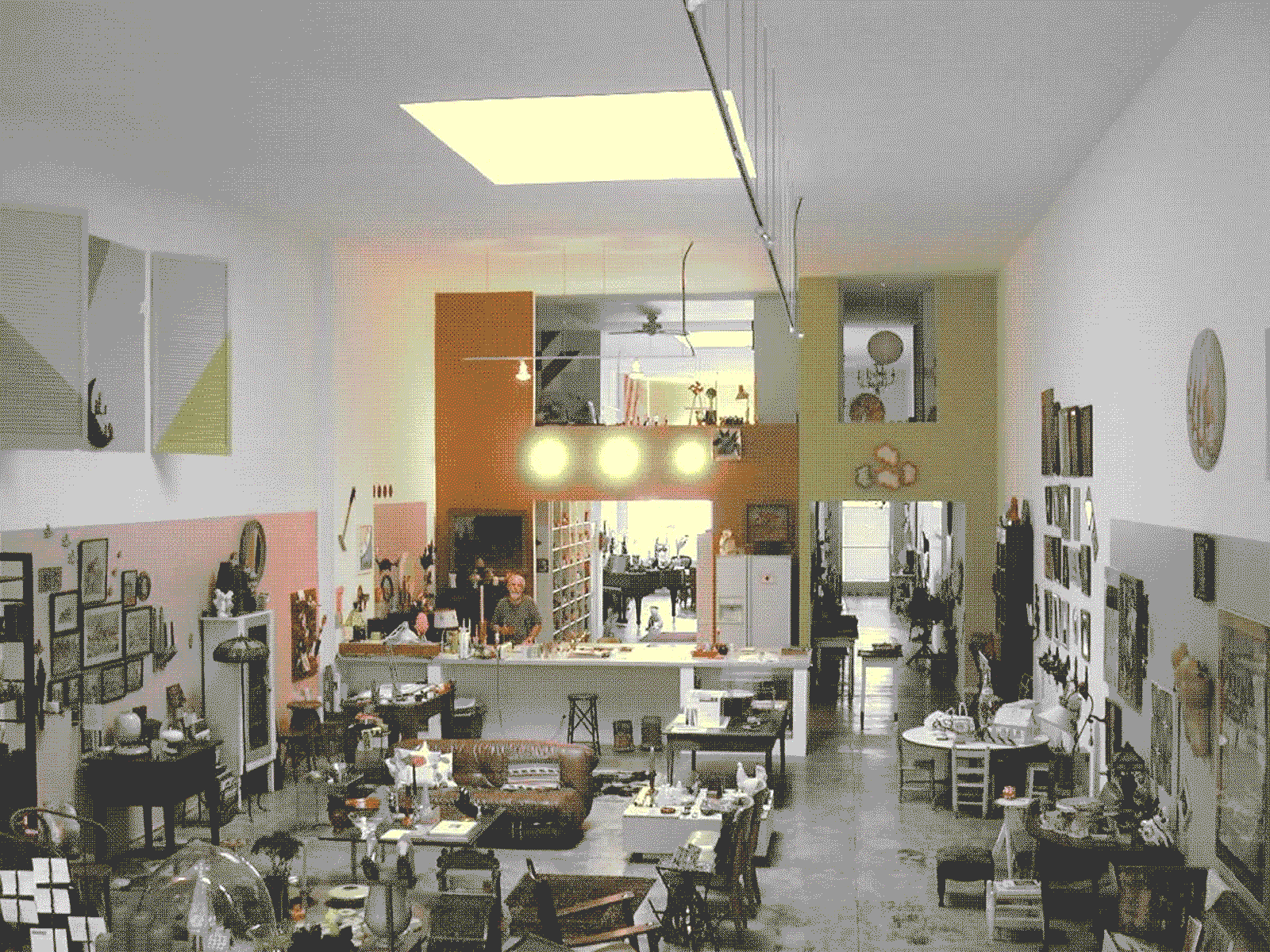
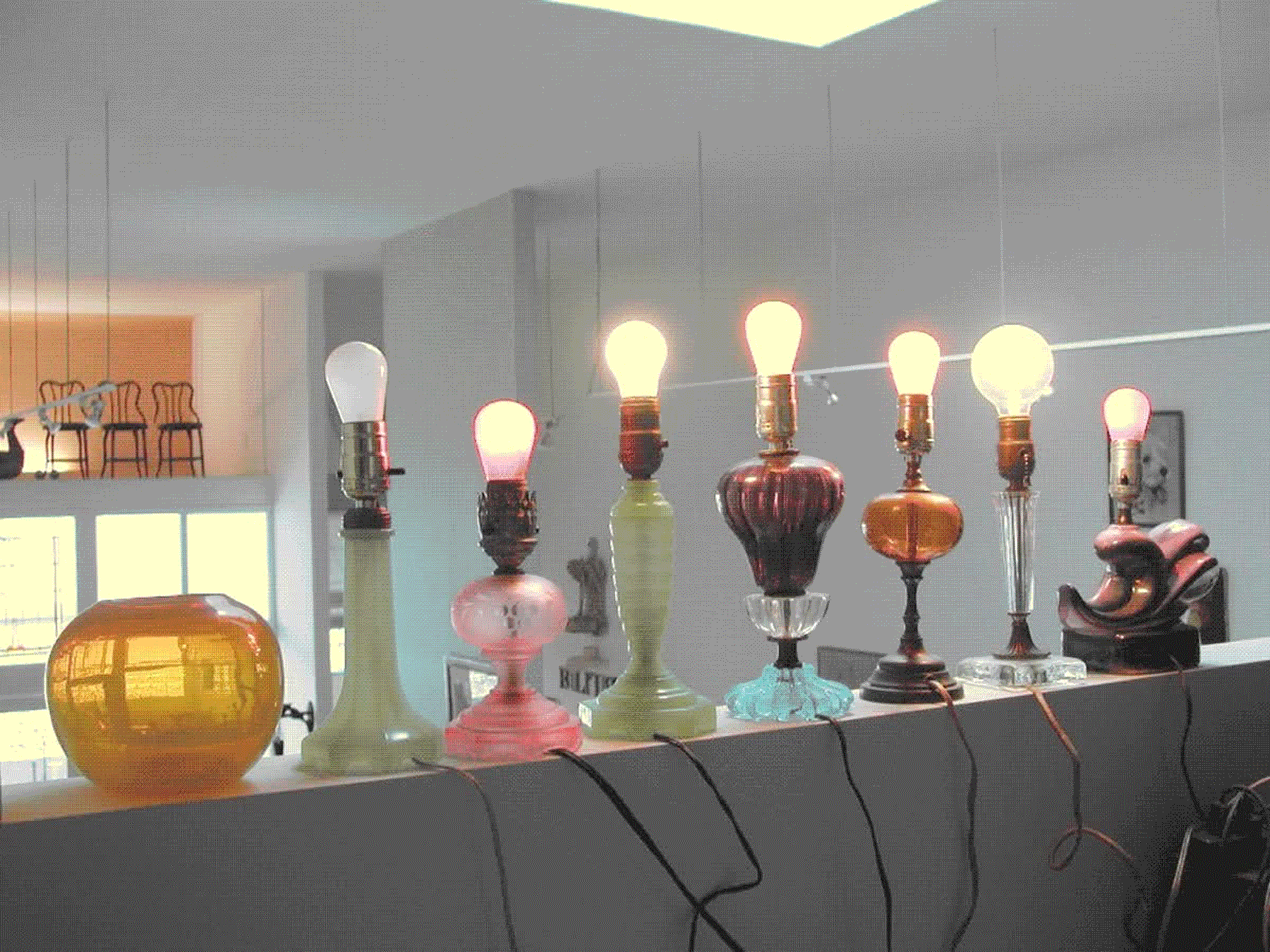
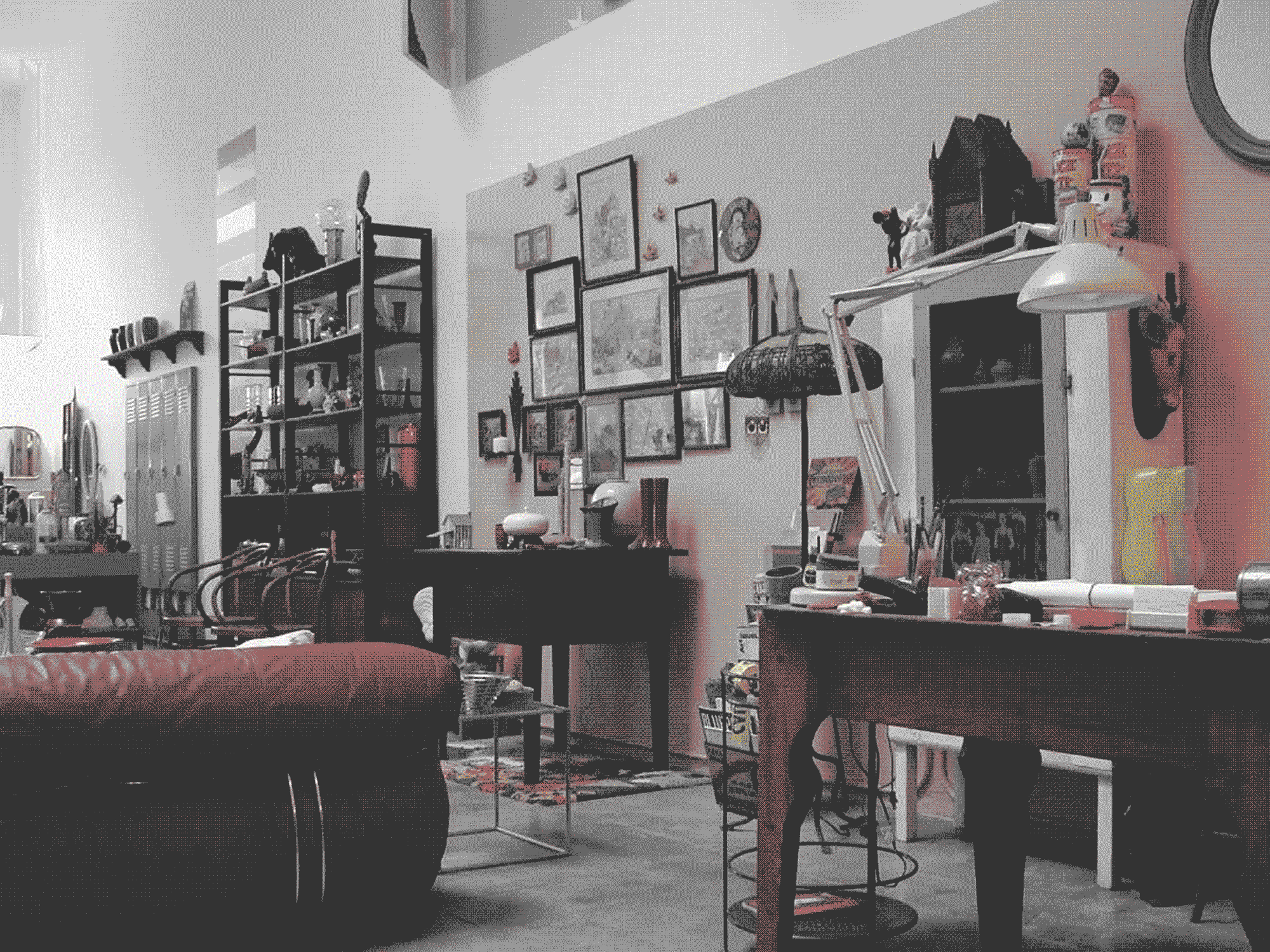

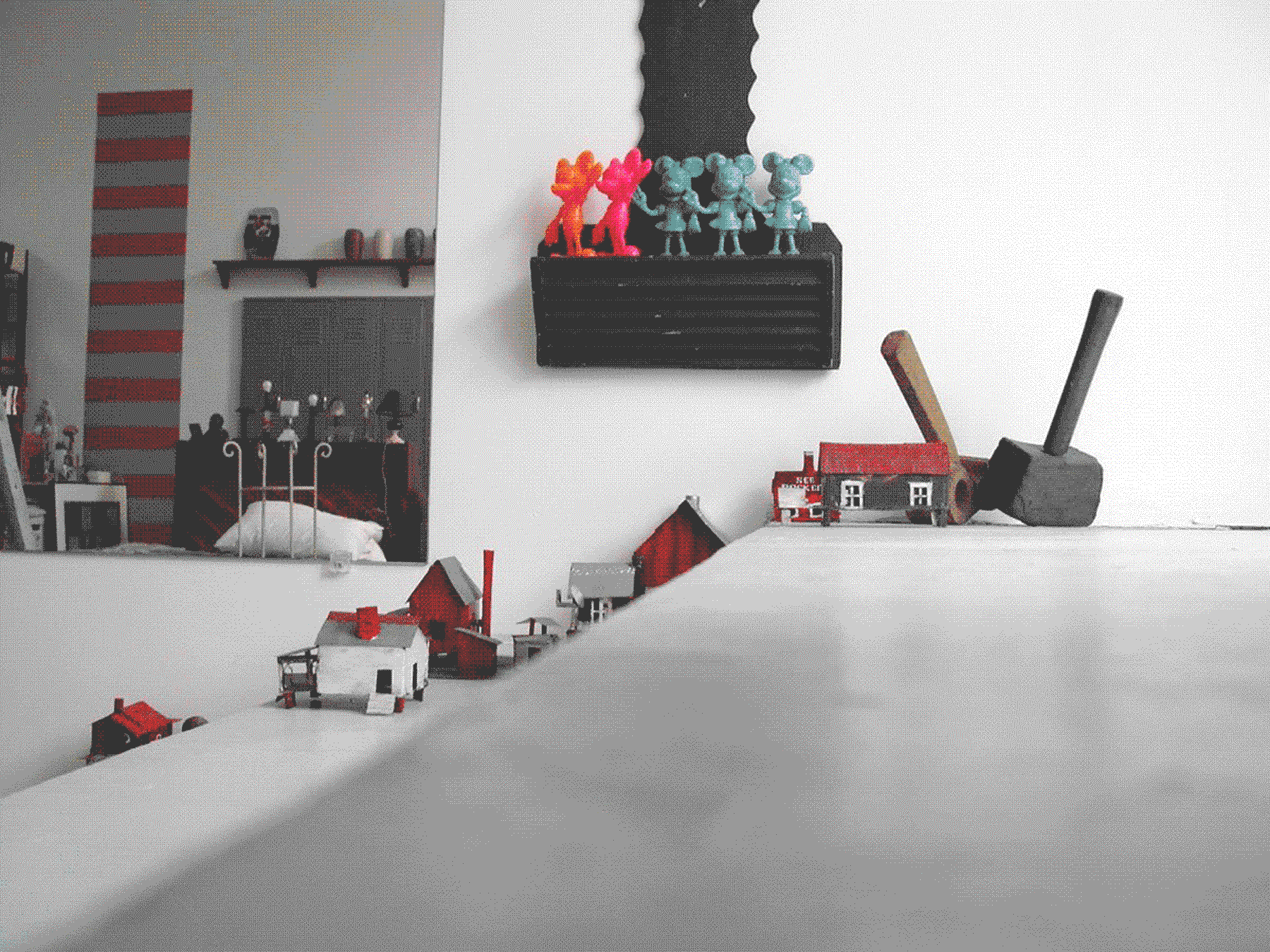
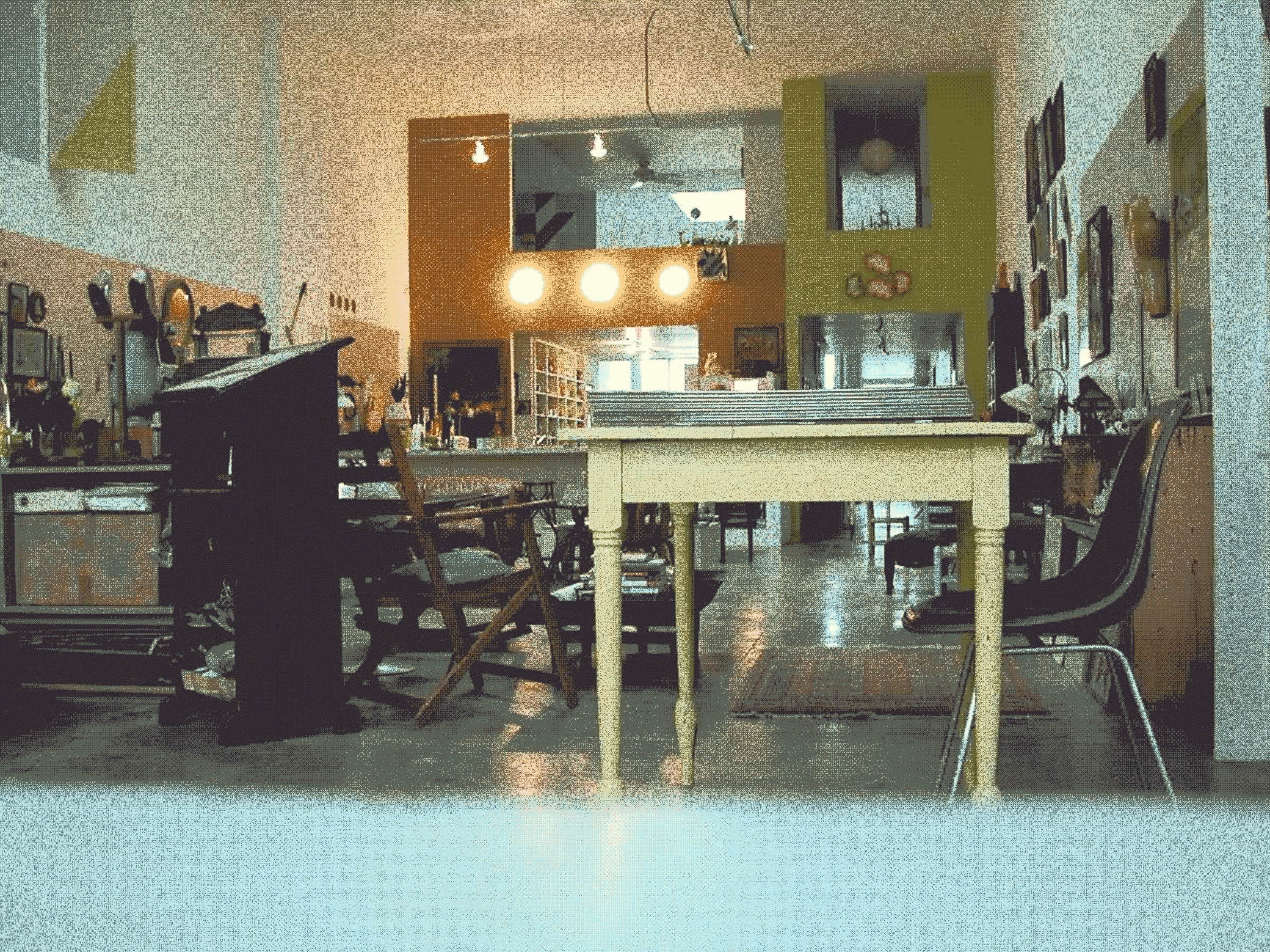
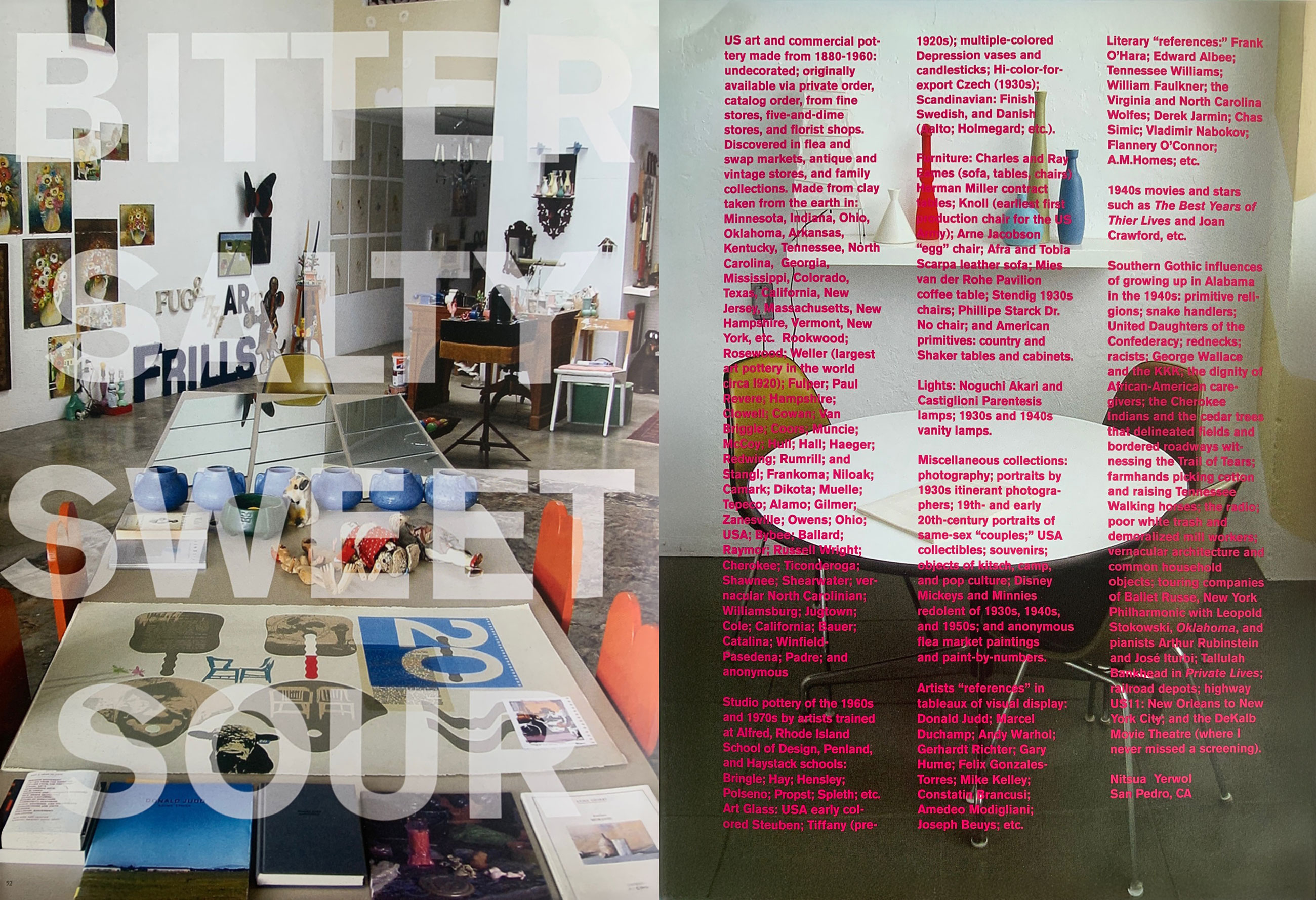
Featured in Sugo 02 ECRITURE INDECISE, Double-page spread design & photos: Andrew Blauvelt, List of collections: Austin Lowrey (Yetwol Nitsua)
Upon retiring, Austin moved to L.A. where Lida had been living and painting full-time. In his half of a 6000 sq ft commercial building in the L.A. port of San Pedro, his collection “Cozy Cottage” made a dramatic showcase for design students and other artists in the area. It was also in Peedro that Austin and Lida began hearing so much about San Miguel.
And it’s easy to see what happened!
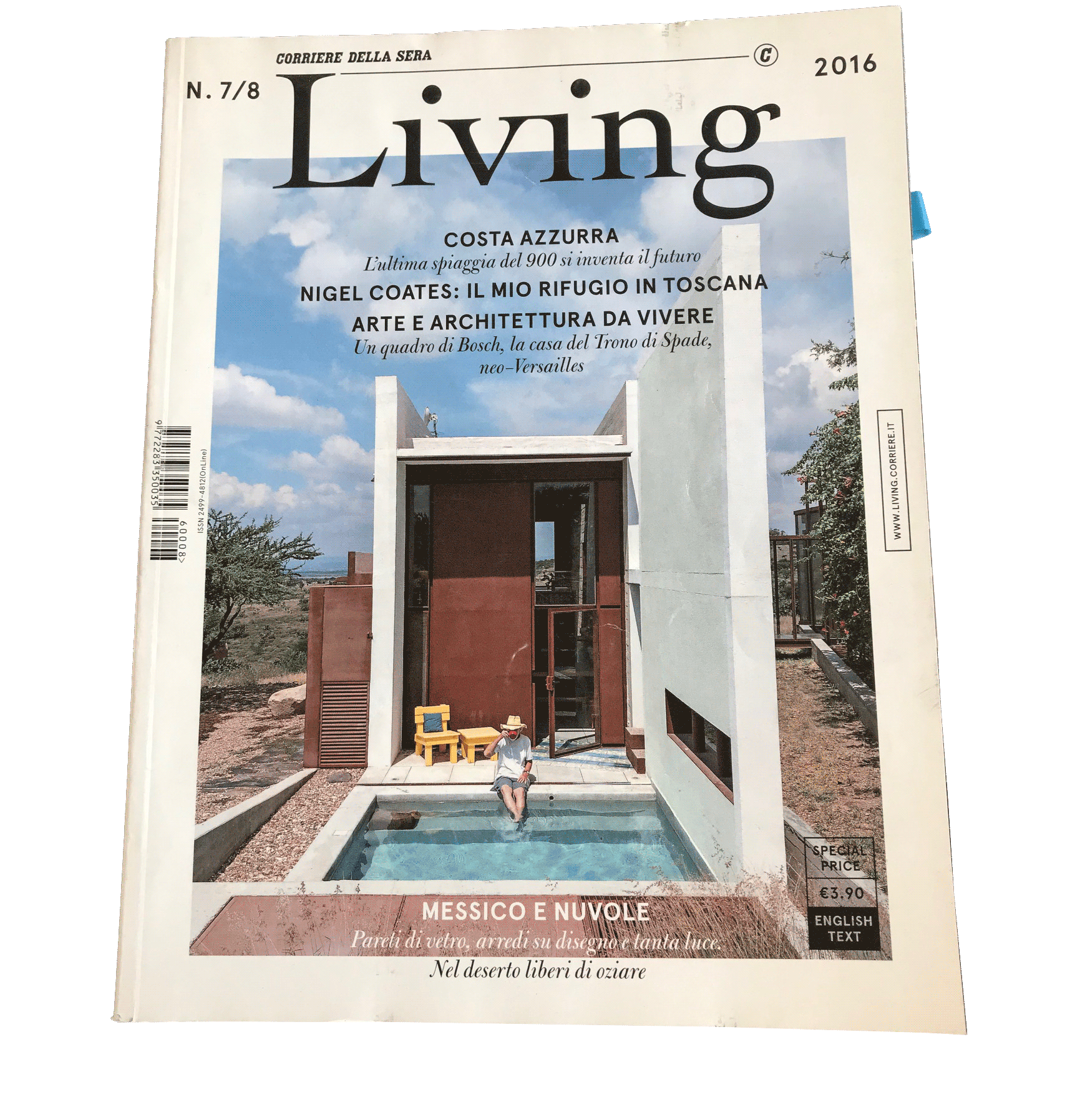
See Ann Marie Jackson’s
Austin Lowrey: Still Creating Provocative Art at 91

Austin’s wife, Lida Miller Lowrey, had a parallel professional life in art and design the many years they were partnered. A classmate of Austin’s, Lida graduated from Auburn University with a bachelor degree in graphic design. Lida and Austin decamped for NYC by way of Jellico, Tennessee, her hometown, sold the car and boarded the bus with their pots and pans. Lida worked as an assistant designer in the office of Jack Wolfgang Beck, and they had the first of their two daughters, Elizabeth Owen Lowrey, in Brooklyn, before returning to the Southeast for Austin’s job at Robert Lucky advertising agency in Birmingham, Alabama.
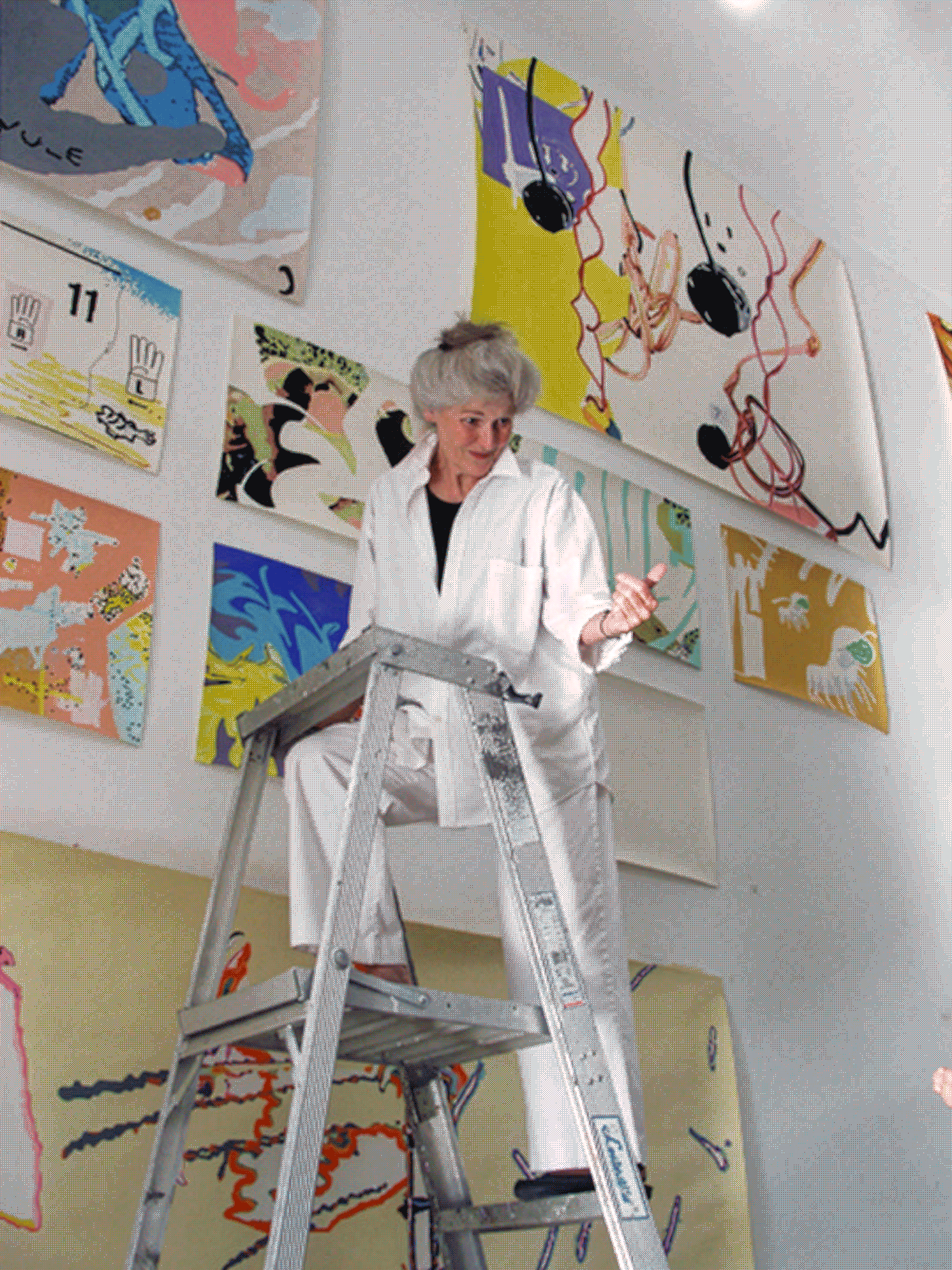
A teaching position in graphic design for Austin took them to Athens, where their second daughter, Sheridan Miller Lowrey, was born. (Both daughters themselves have had life-long careers in art and design.) The University of Indiana was a second teaching post. In Terre Haute, Lida bought a steepled church, calling it Revival, to house antiques and contemporary crafts. Lida then, the mid-seventies (a seminal period for American craft production), moved the family to Winston-Salem, North Carolina, for a job as director of Piedmont Craftsmen, with eleven southeastern member states.

Austin’s third academic engagement was at North Carolina State University. Lida’s position in Raleigh at the NC Arts Council as Visual and Literary Arts Director, awarding grants, was bracketed by two tenures at the North Carolina Museum of Art; first as a practicing graphic designer and then as head of Exhibitions and Graphic Design. Lida, with public art consultant, Patricia Fuller, was the museum’s liaison in the search for an interdisciplinary team (art / architecture / landscape) to design the masterplan for their extensive grounds. She received her master’s degree at NCSU School of Design when in Raleigh as well.
Increasingly interested in exhibition design and architecture, Lida had subsequent positions at the Royal Ontario Museum in Toronto and the Minneapolis Institute of Art. In the latter she oversaw the reinstallation of the collections in the Kenzo Tange addition to the original McKim, Mead and White building. Austin remained in Raleigh teaching and amassing a collection of artifacts he installed in tableaux in their home, and, extracted, showcased in several museum exhibitions.
Lida retired from professional practice to paint full-time in Los Angeles in the early 1990s. Lida worked amongst artist peers in studios in Venice and DTLA (downtown Los Angeles) before renovating a commercial building in the L.A. harbor-area of San Pedro. Her half was a white cube gallery while Austin’s housed the entirety of his Raleigh collections from where he retired as Professor Emeritus in 1999.
Lida was prolific in painting, working interchangeably between abstract and representational imagery. Never seeking gallery representation, she had interspersed juried shows at the Los Angeles Municipal Art Gallery, Orange County Museum of Art, Angels Gate Cultural Center and the Las Vegas Lied Museum. She, with Austin, showed paintings at the Biblioteca Pública de San Miguel de Allende, Mexico. It is in San Miguel they built their last house with studios for each.
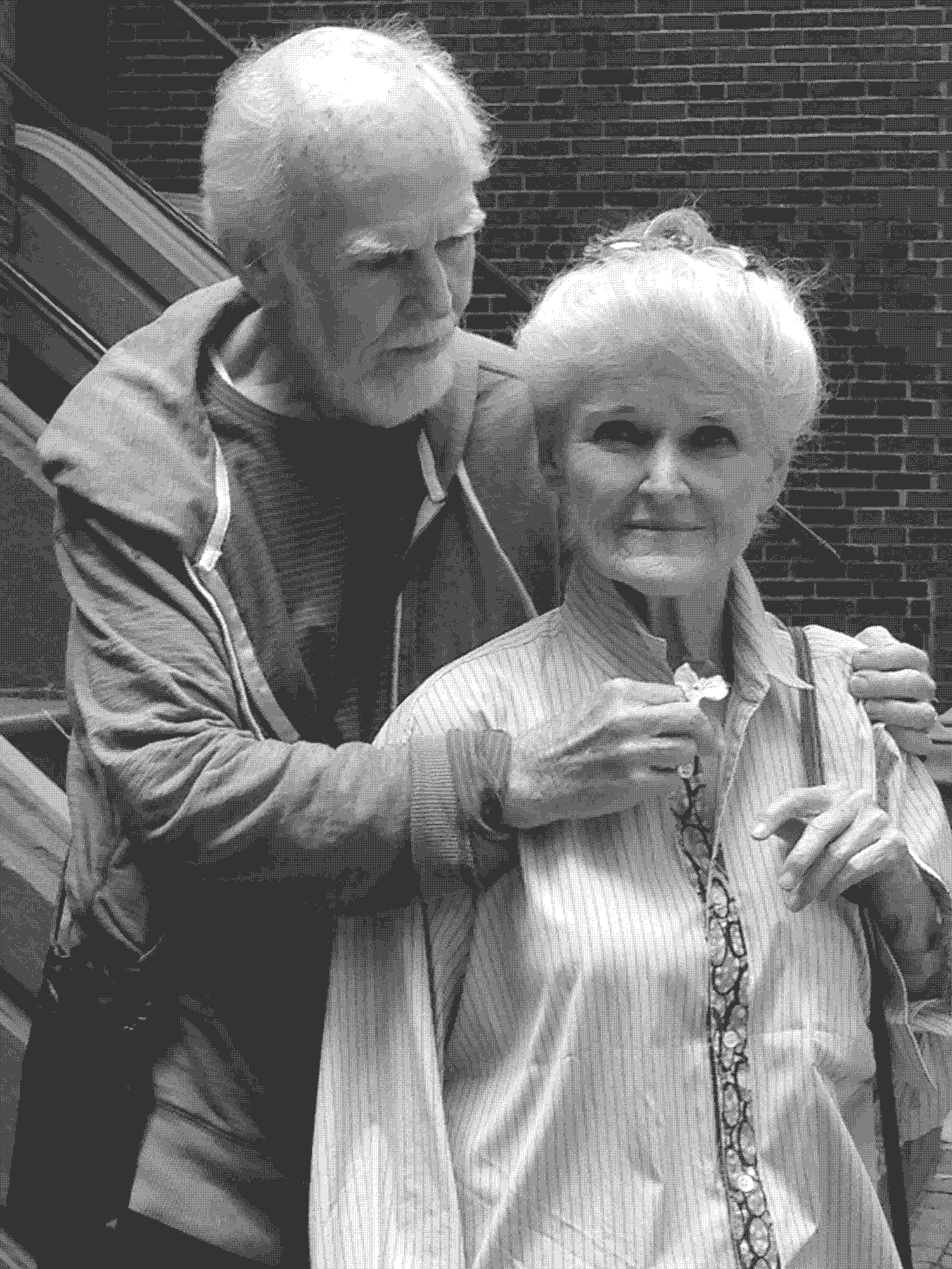
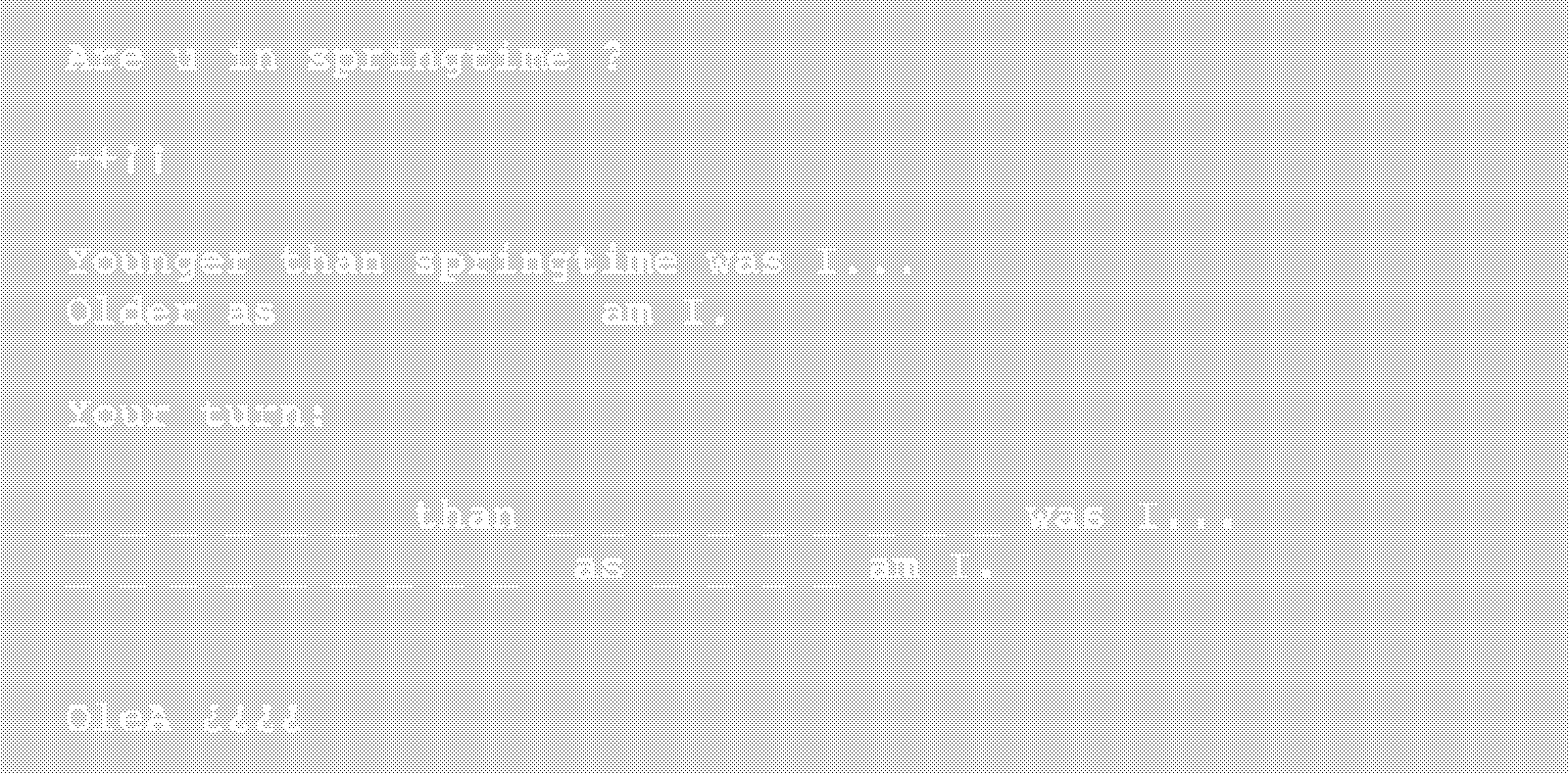

Contact Austin or Austin’s daughter for information or comment.
© 2025 Austin Lowrey
